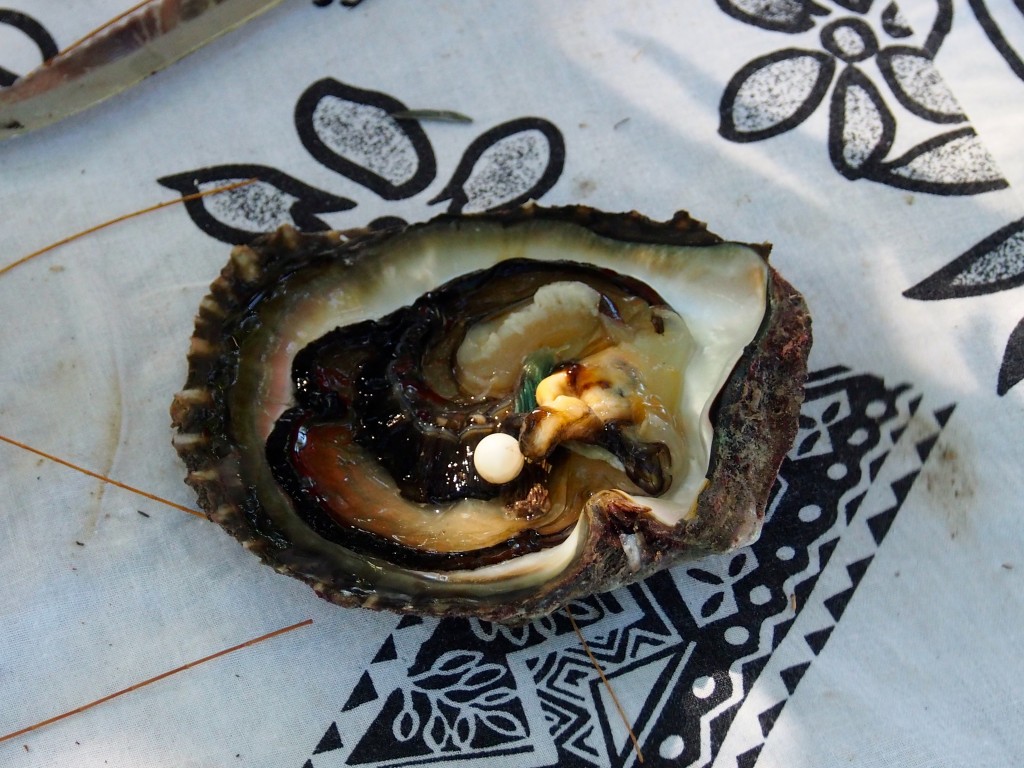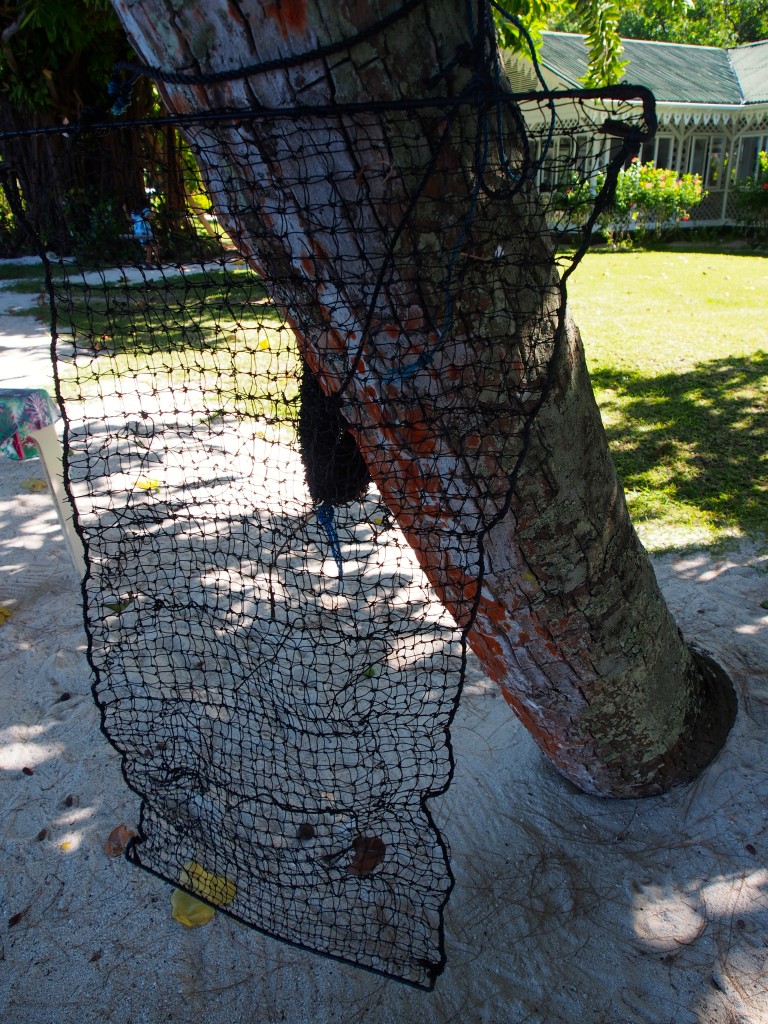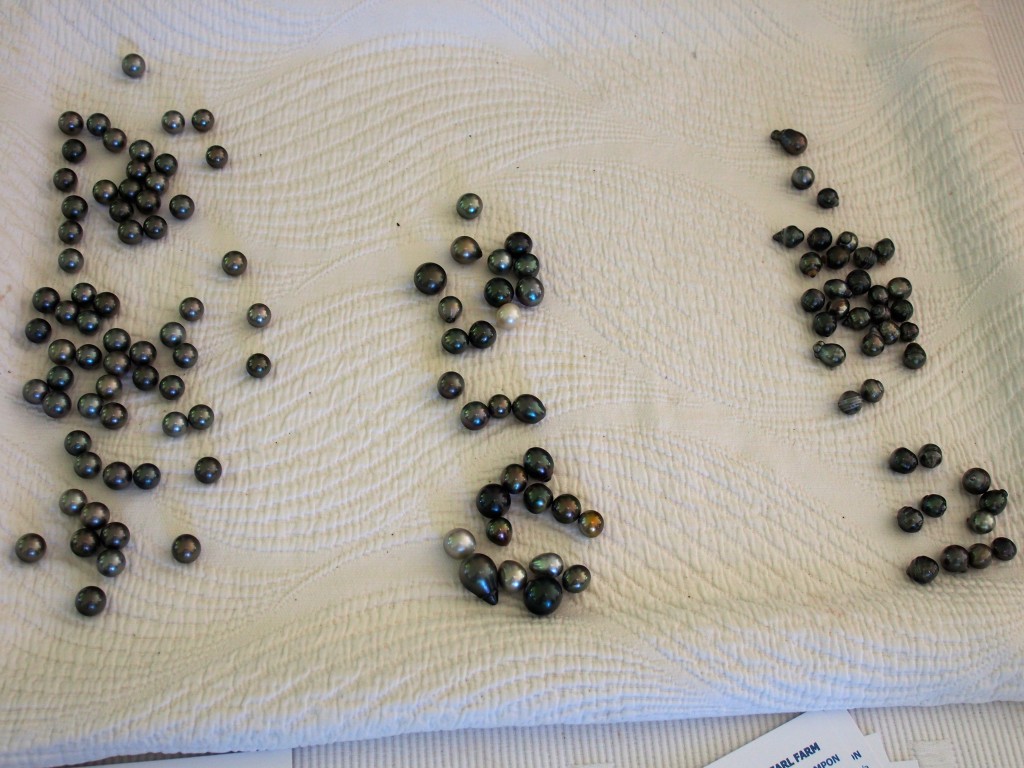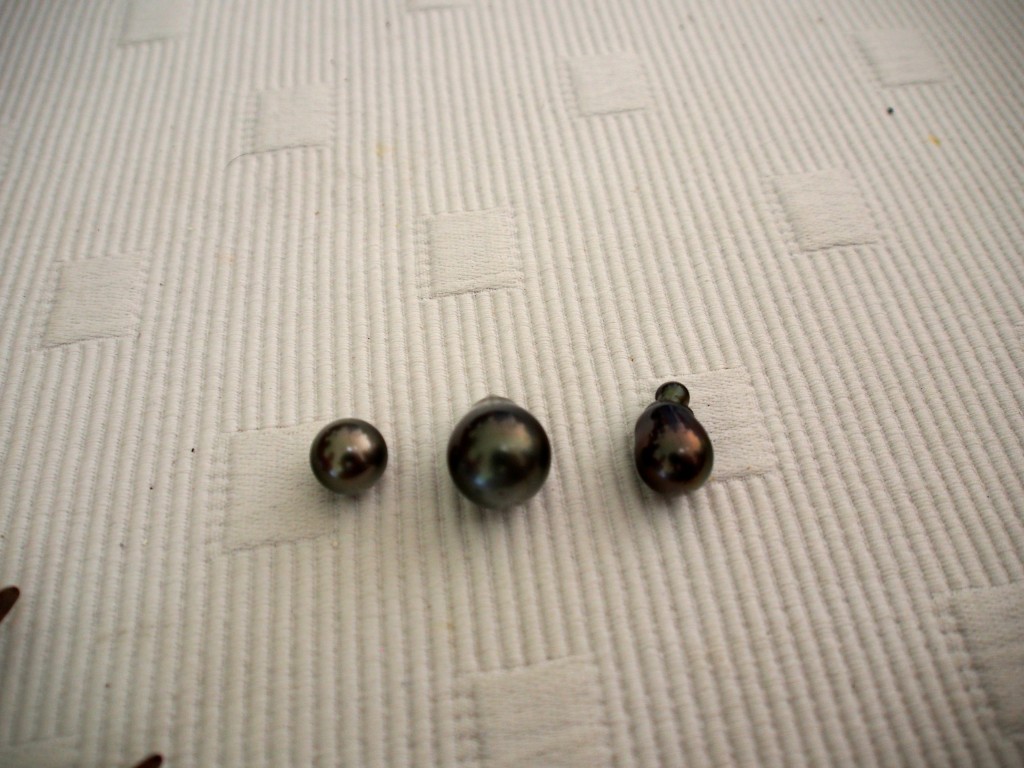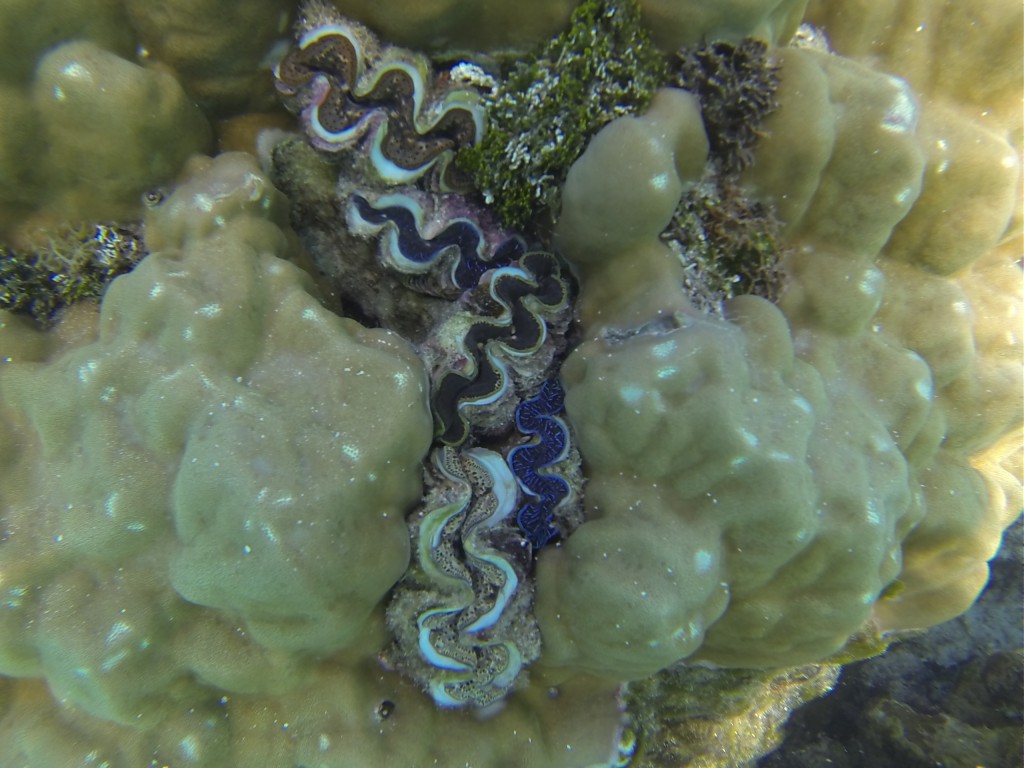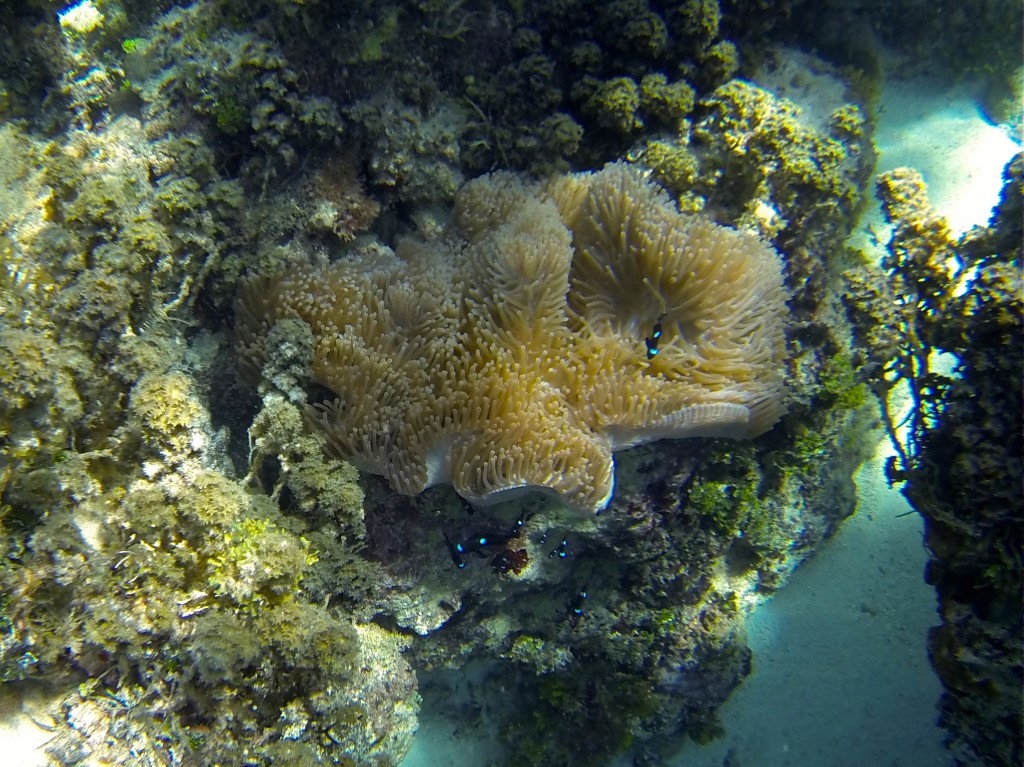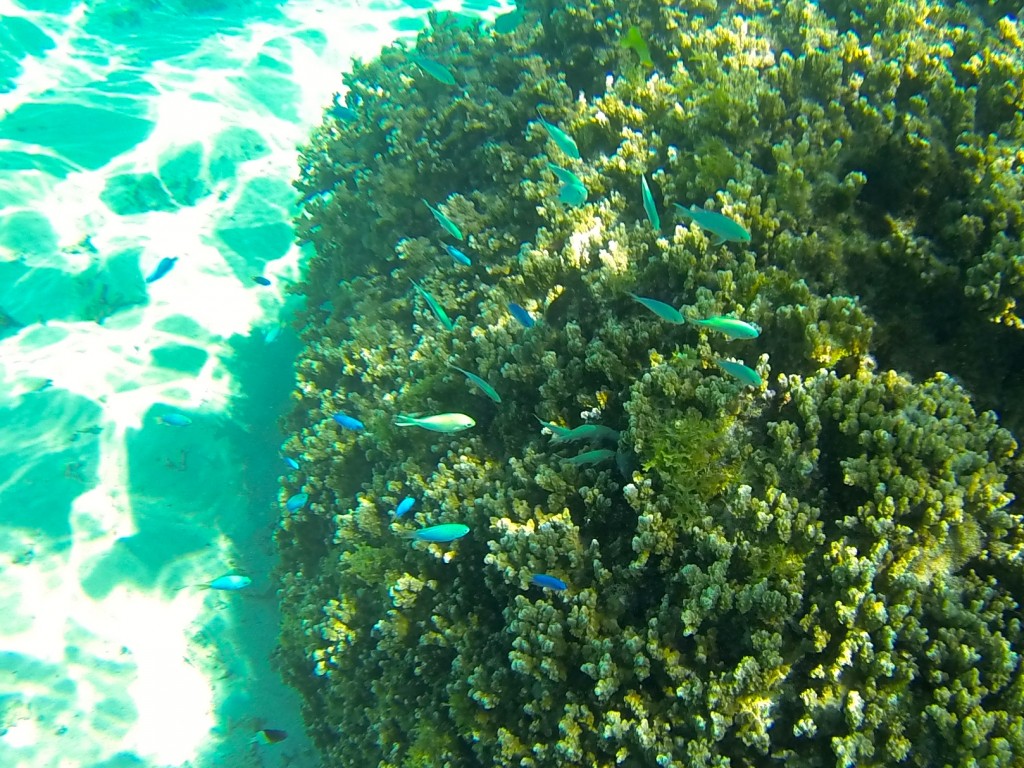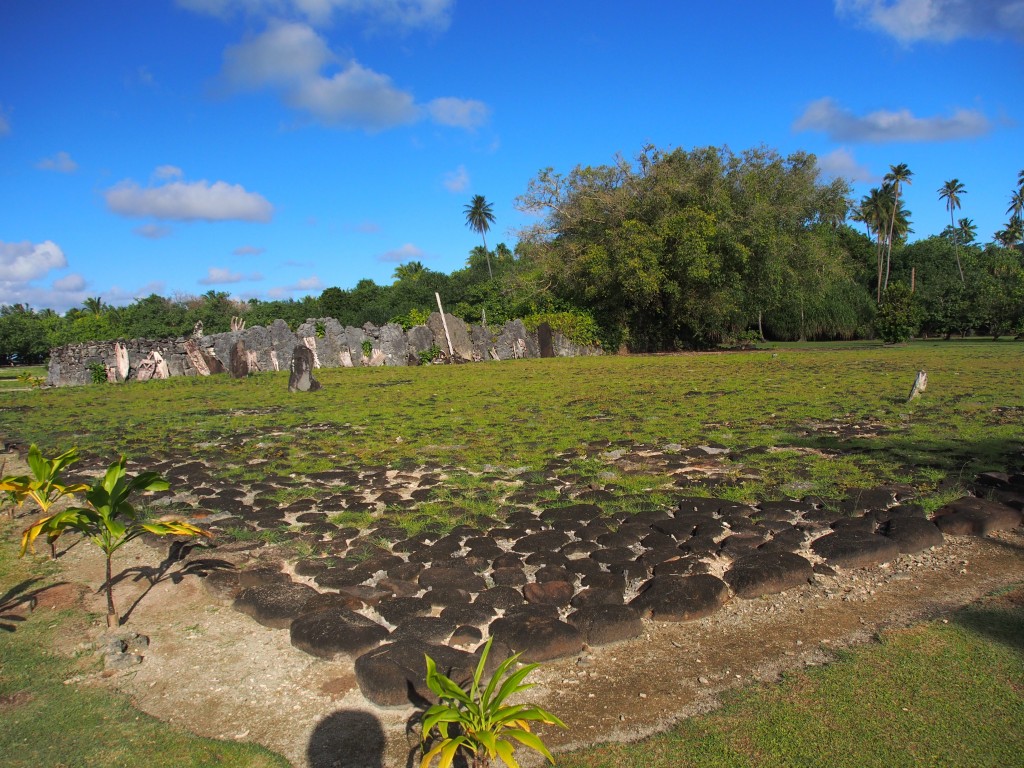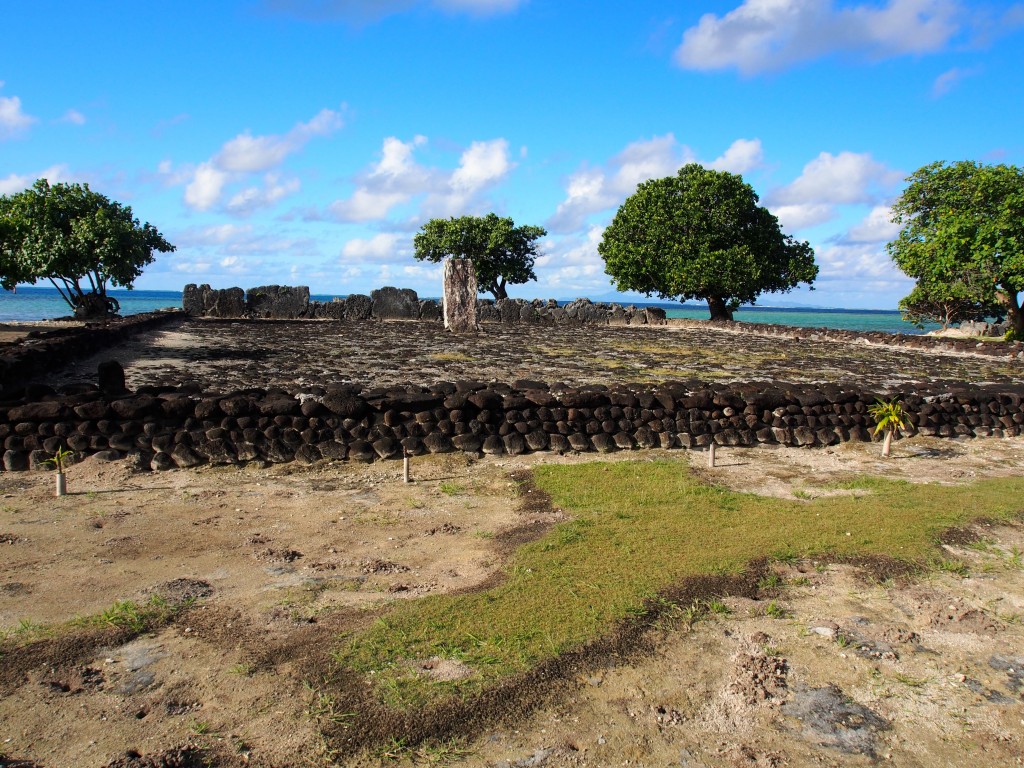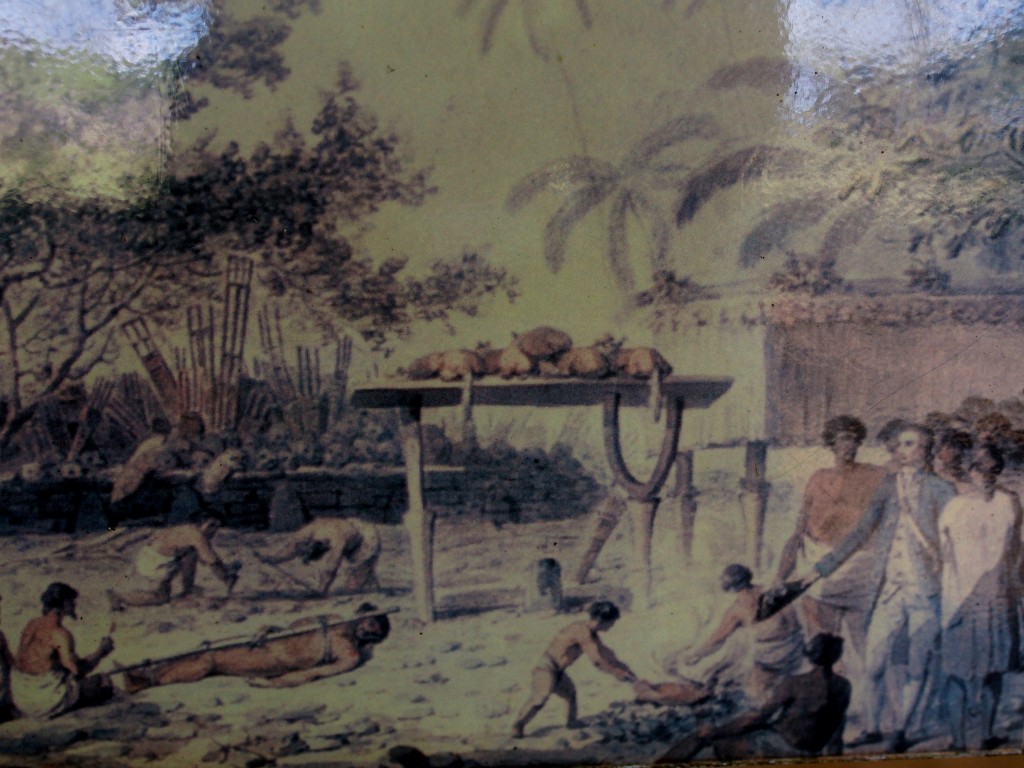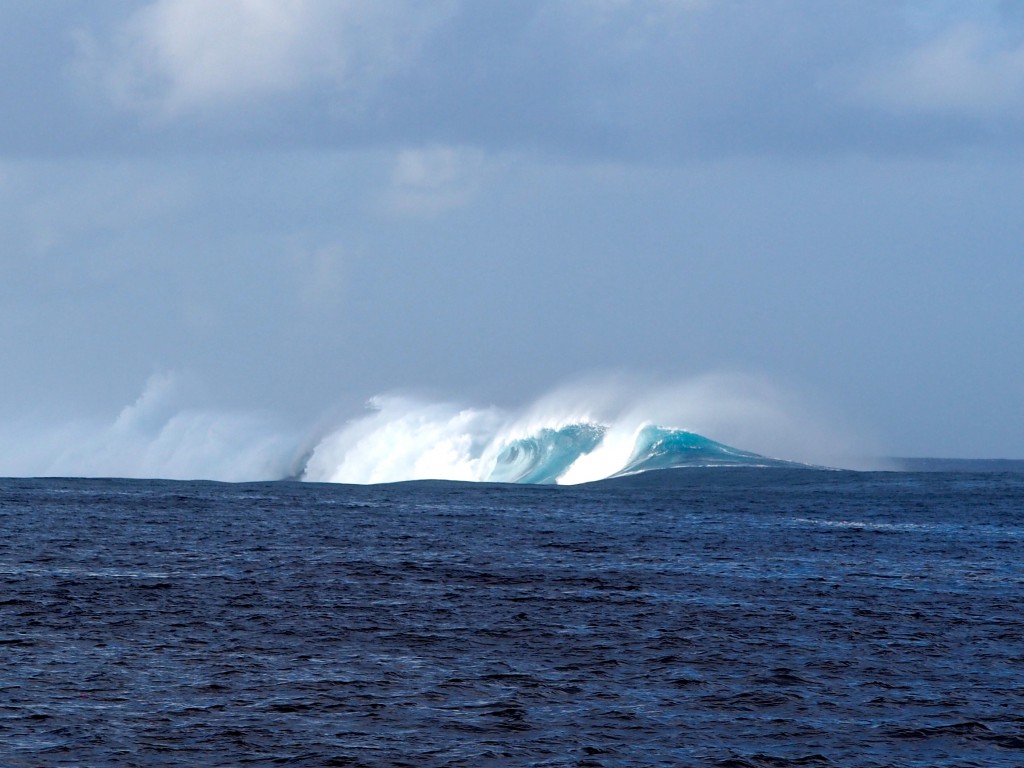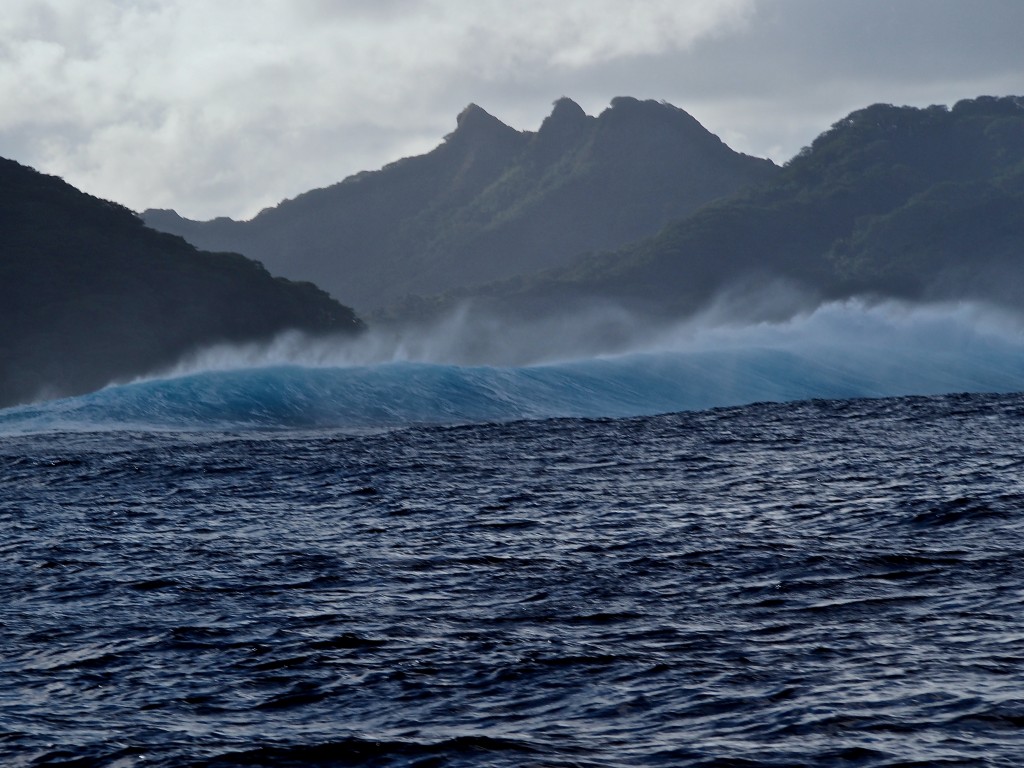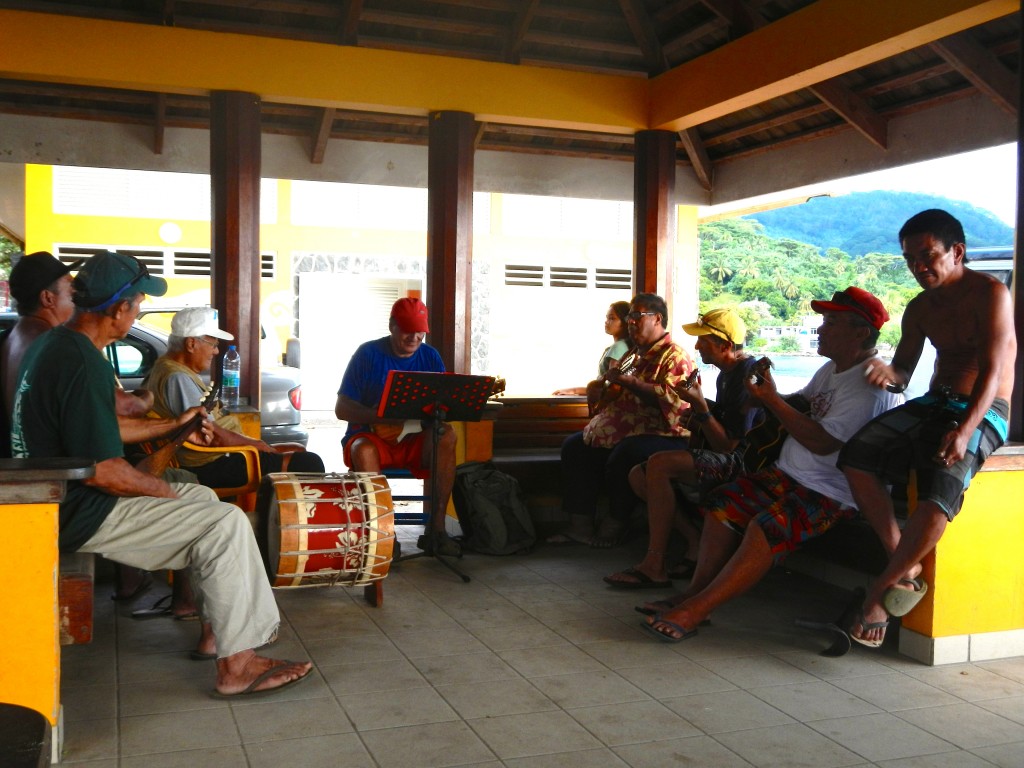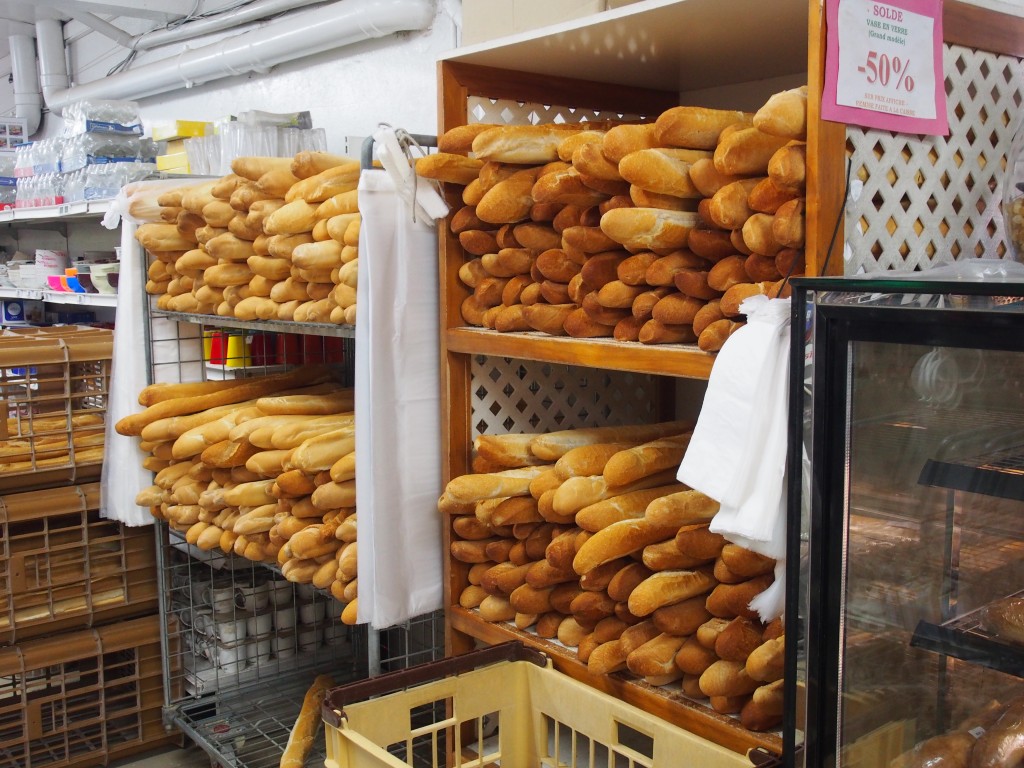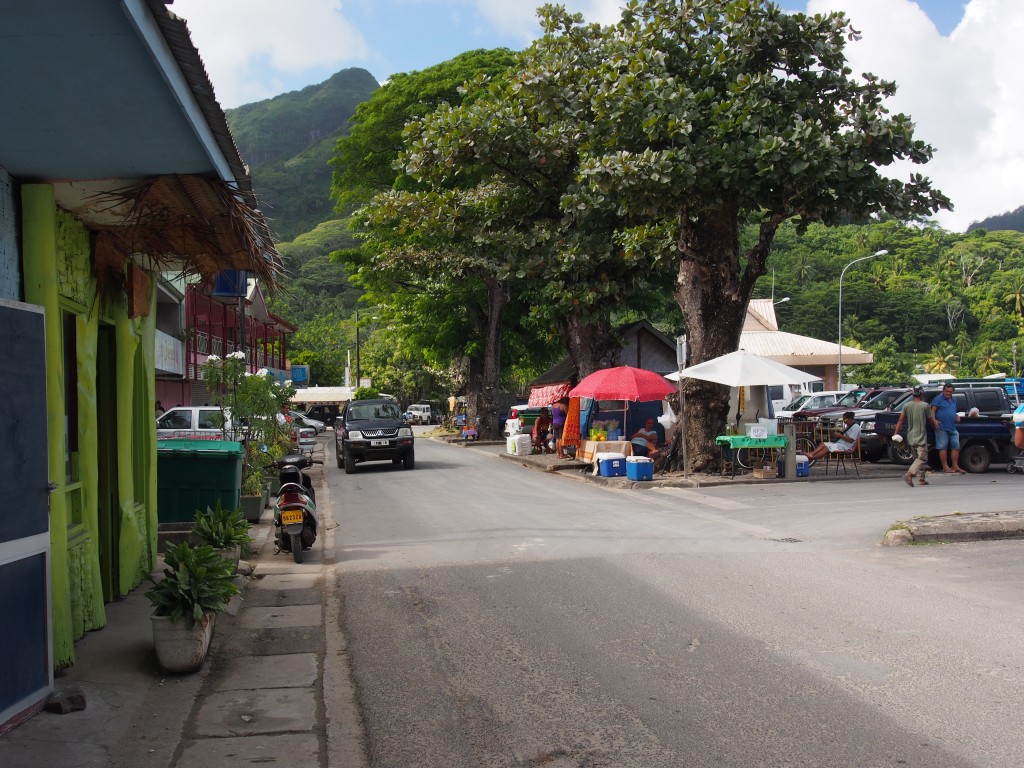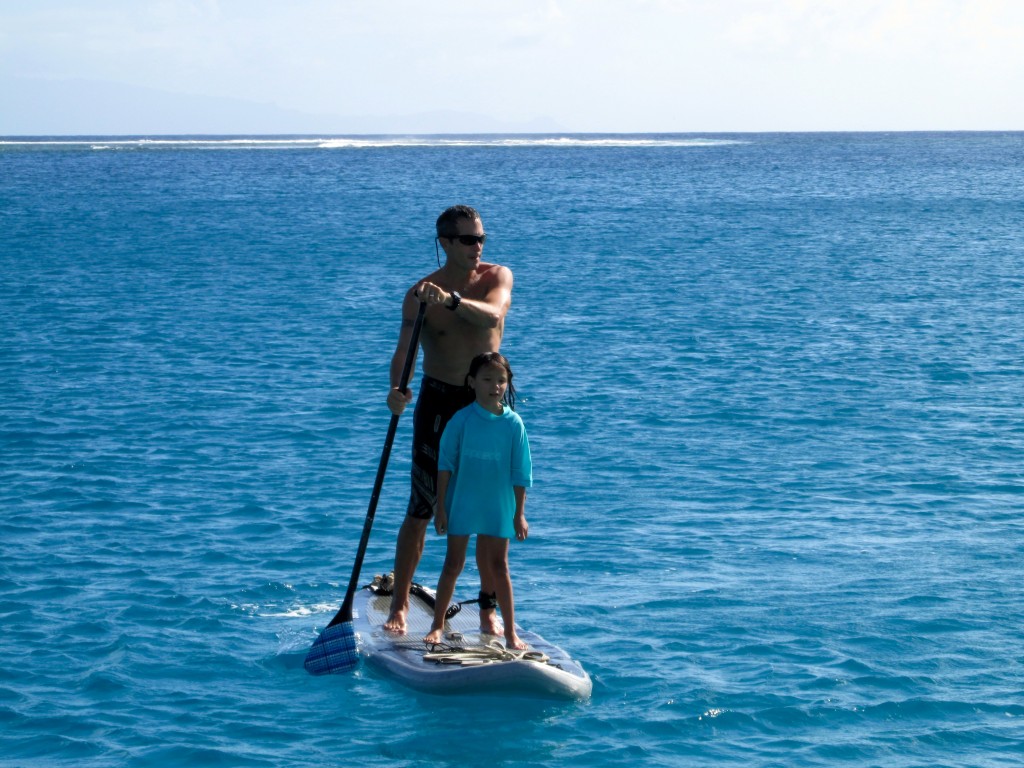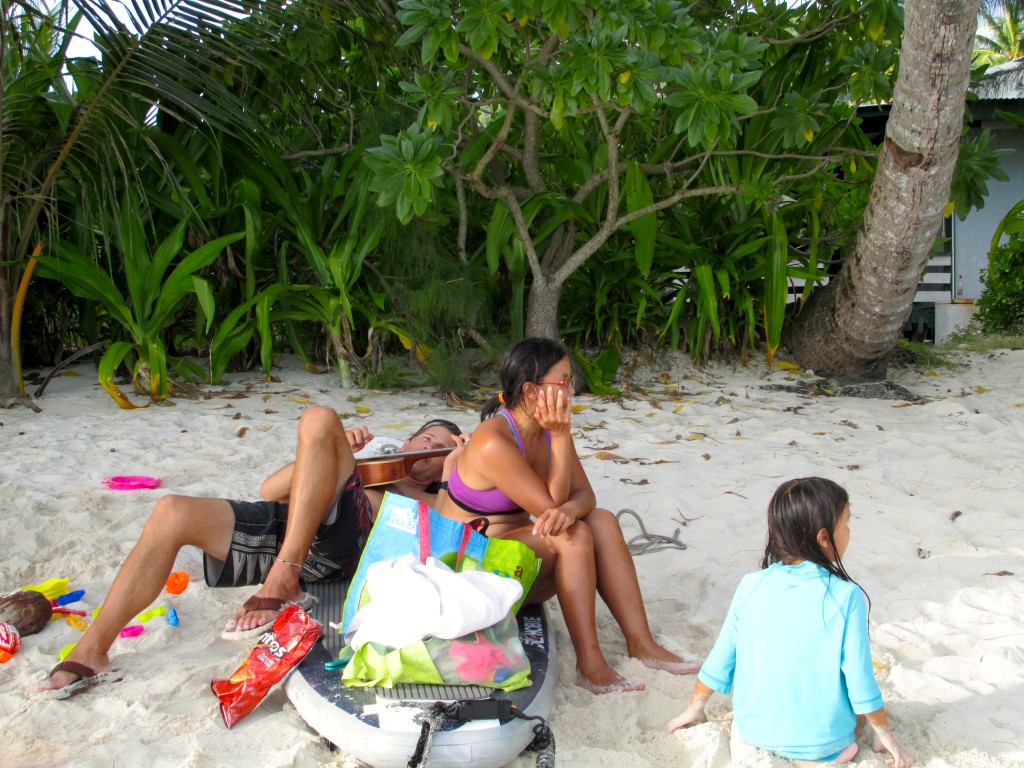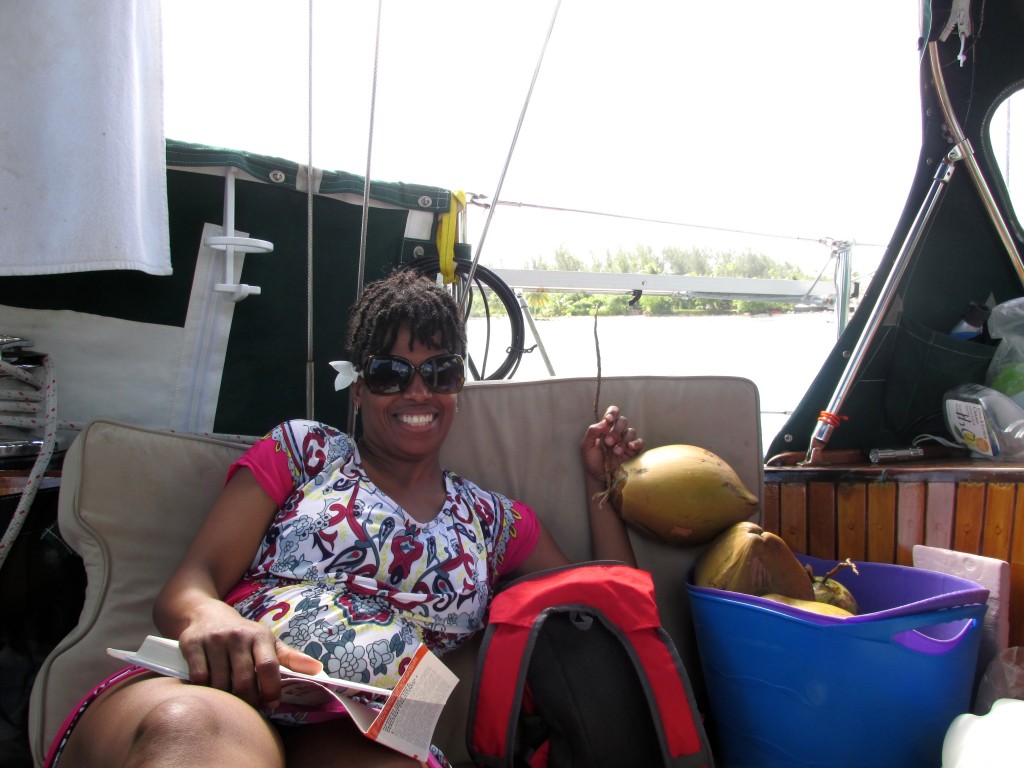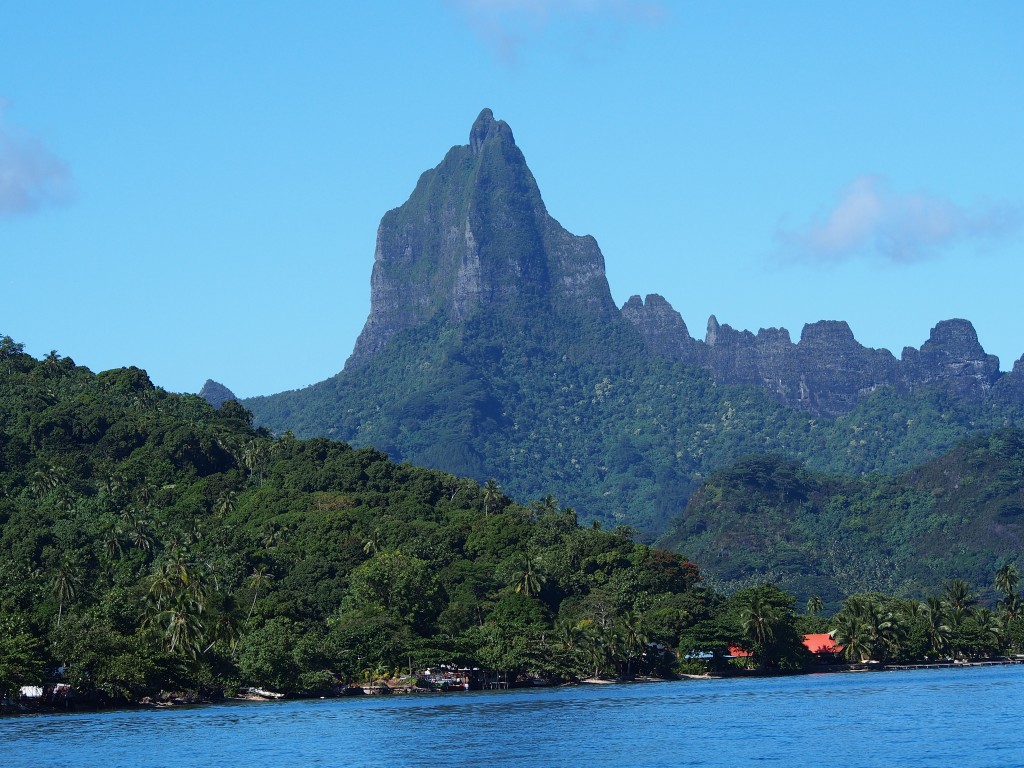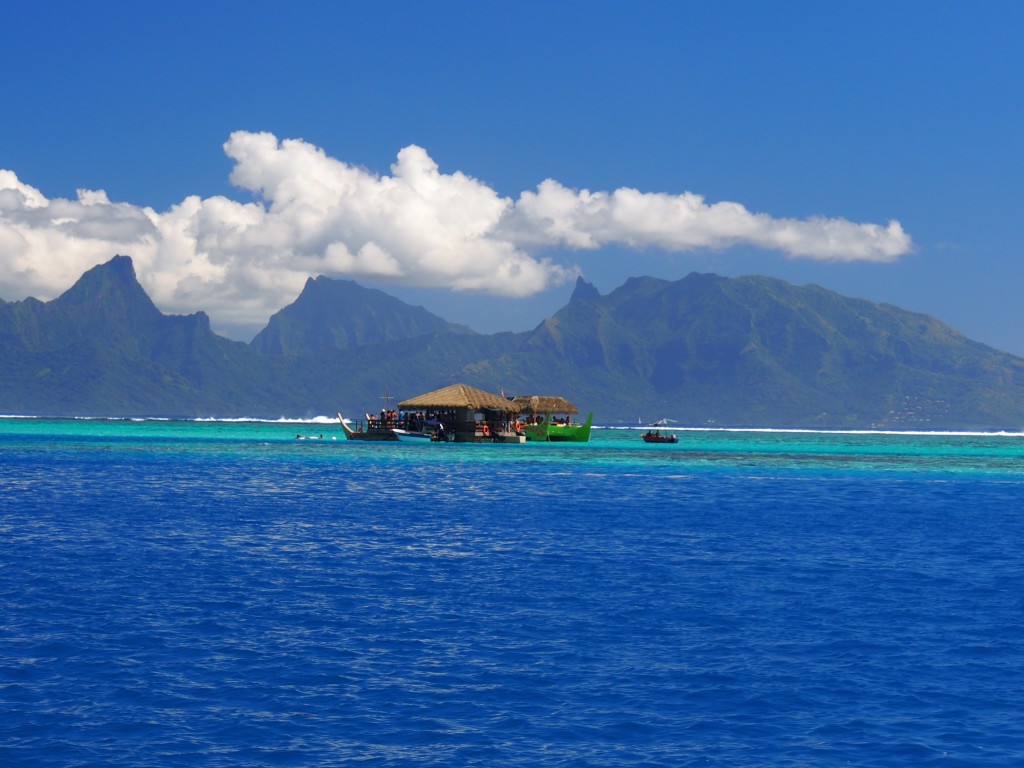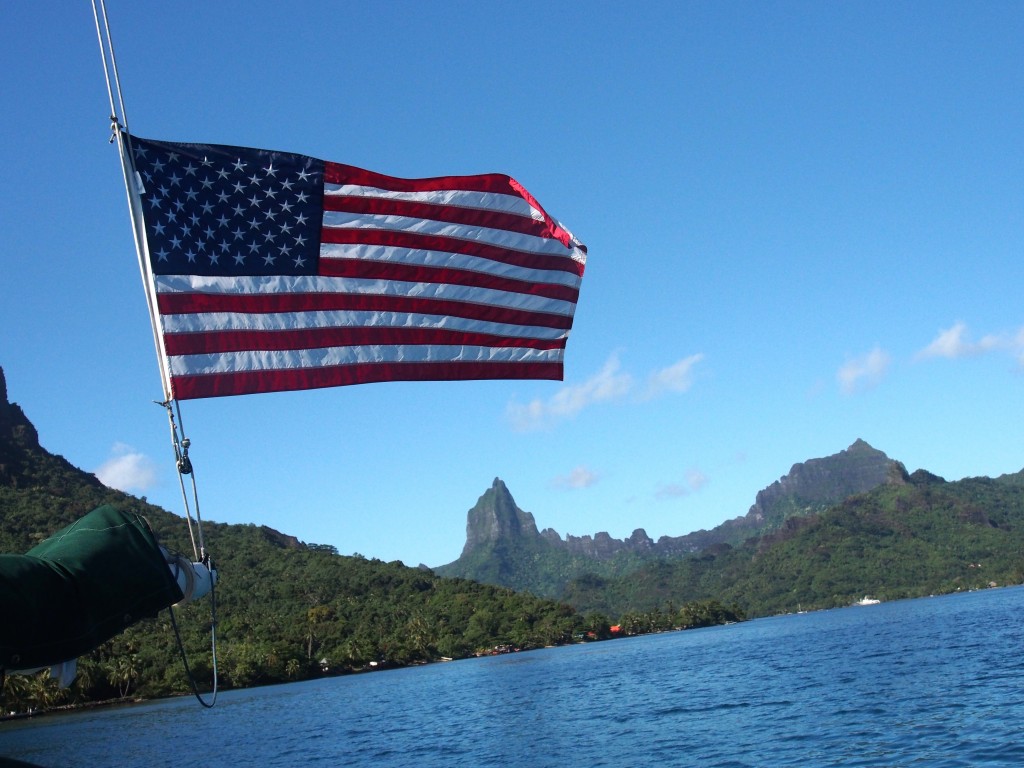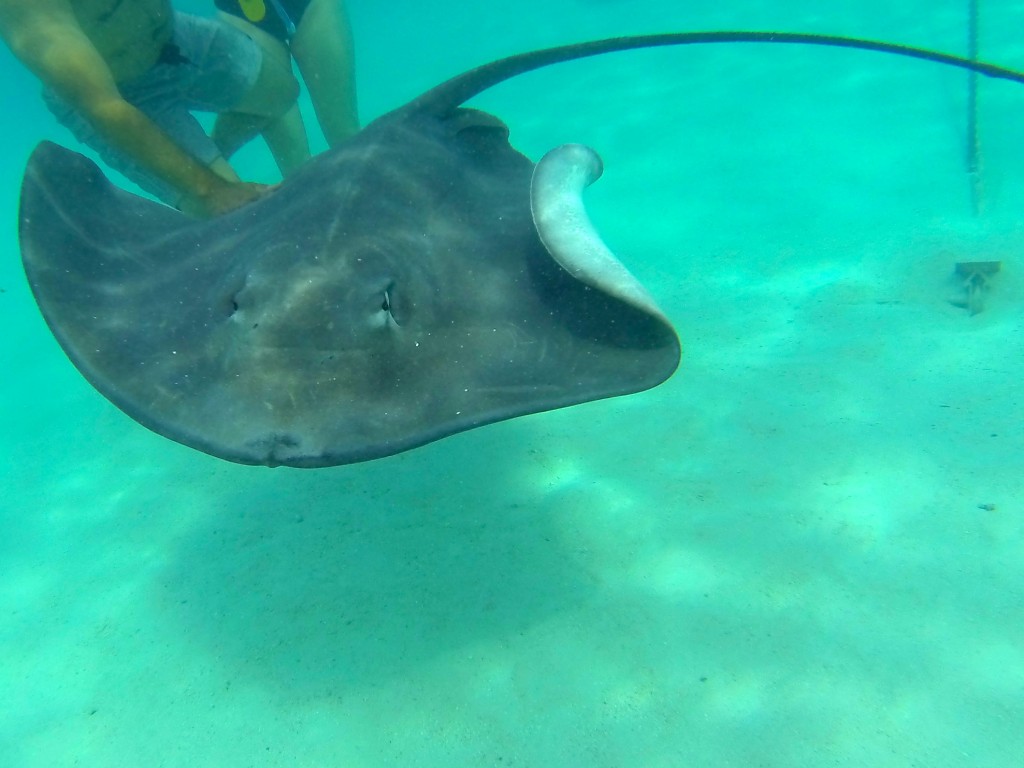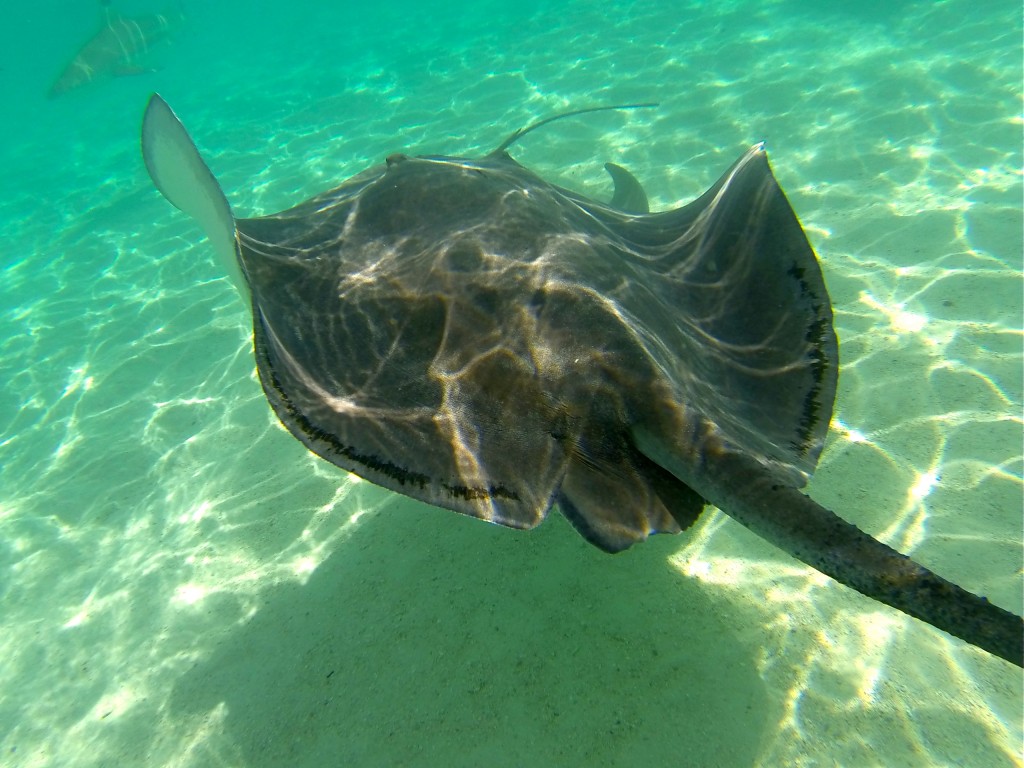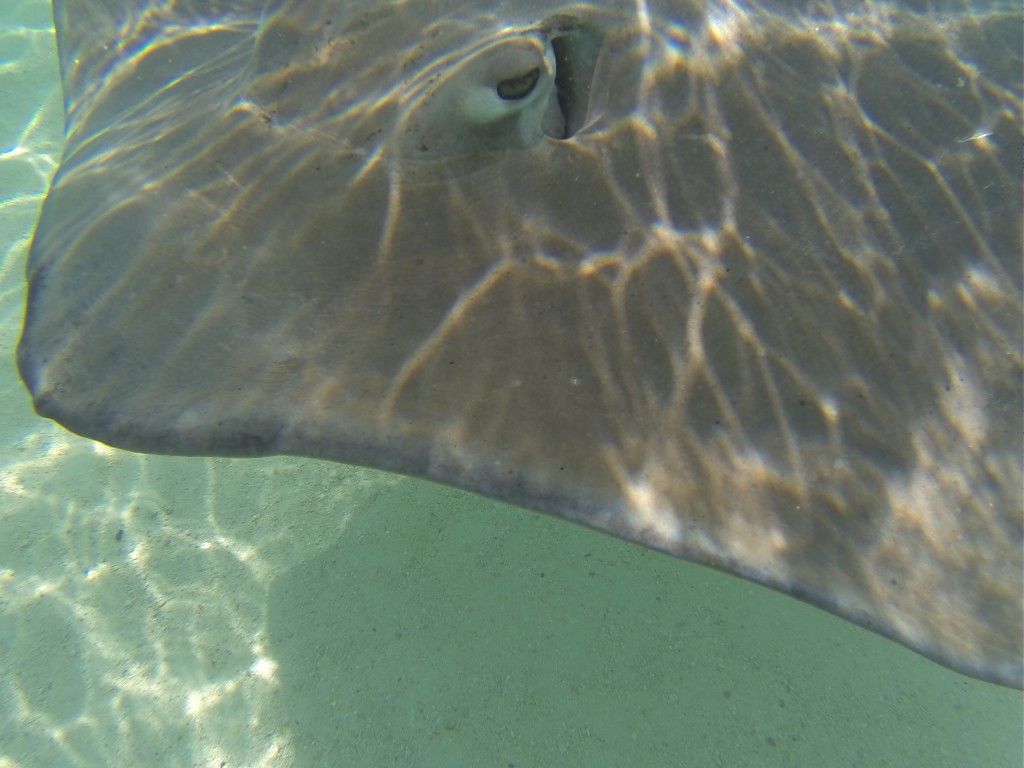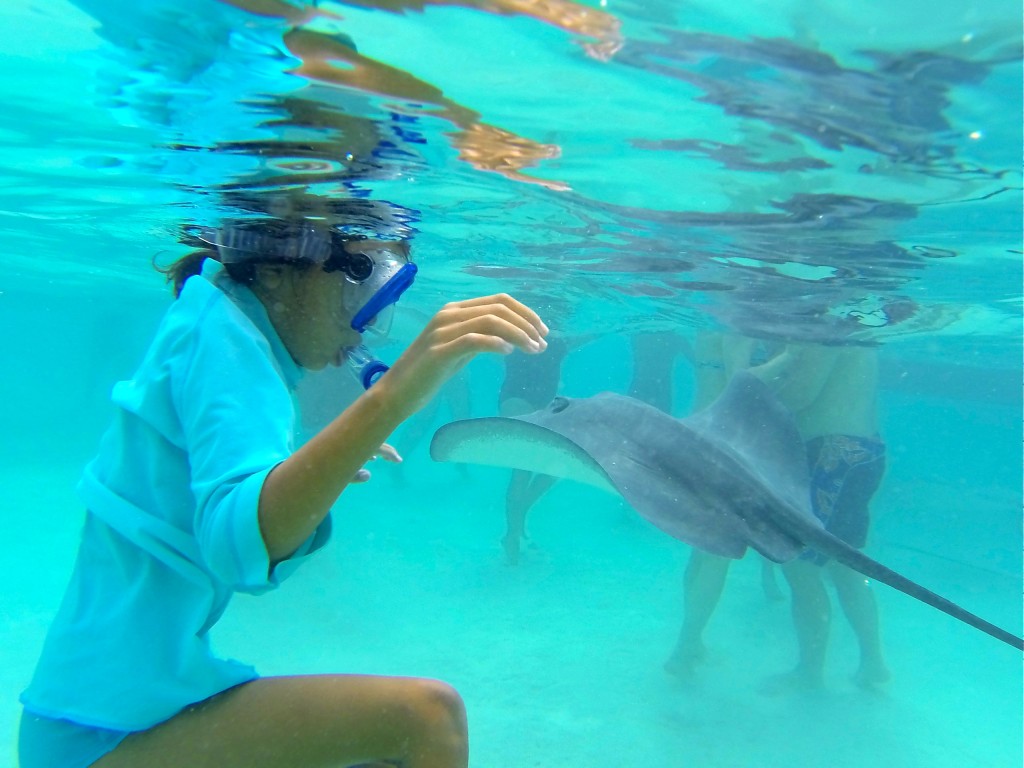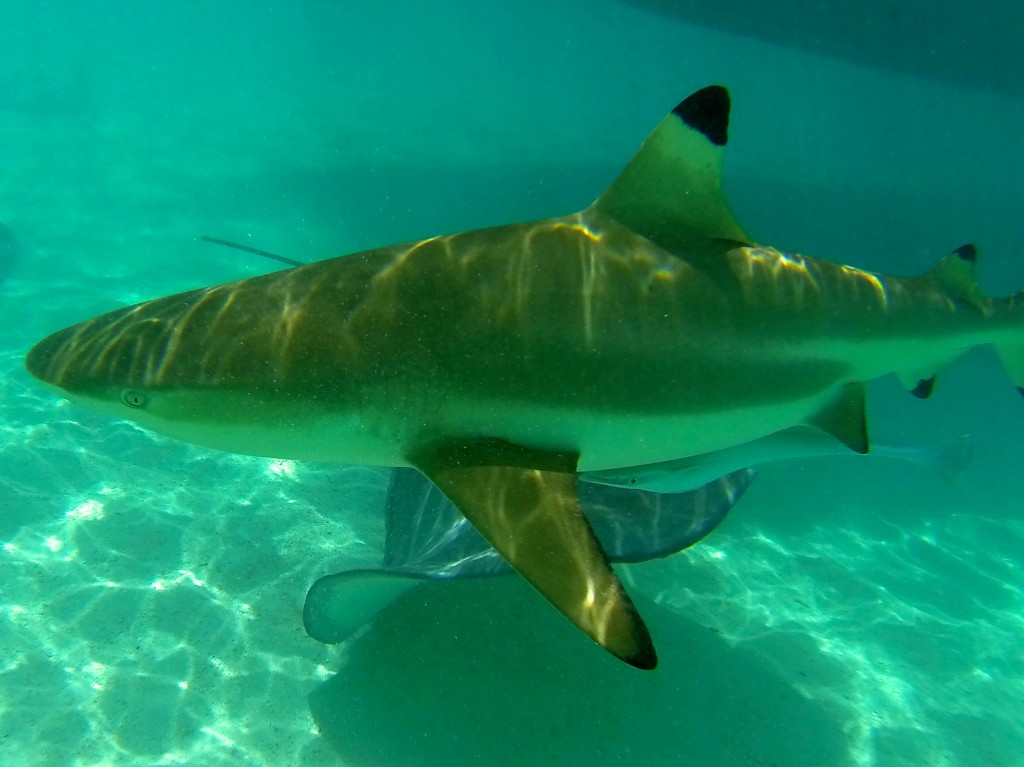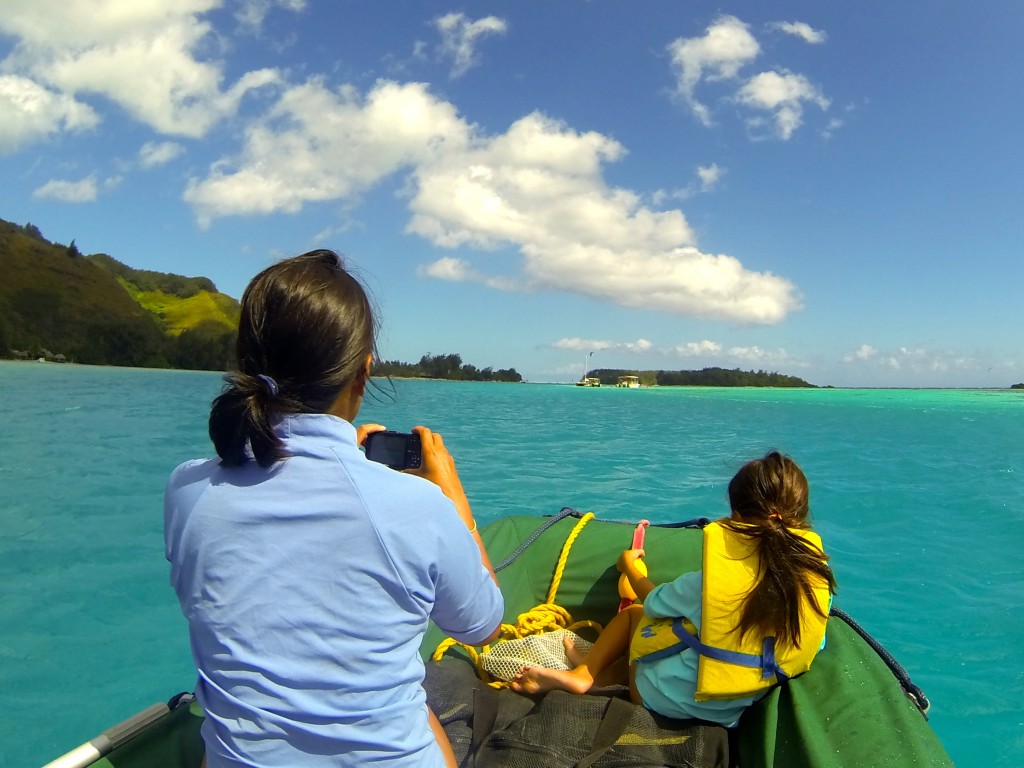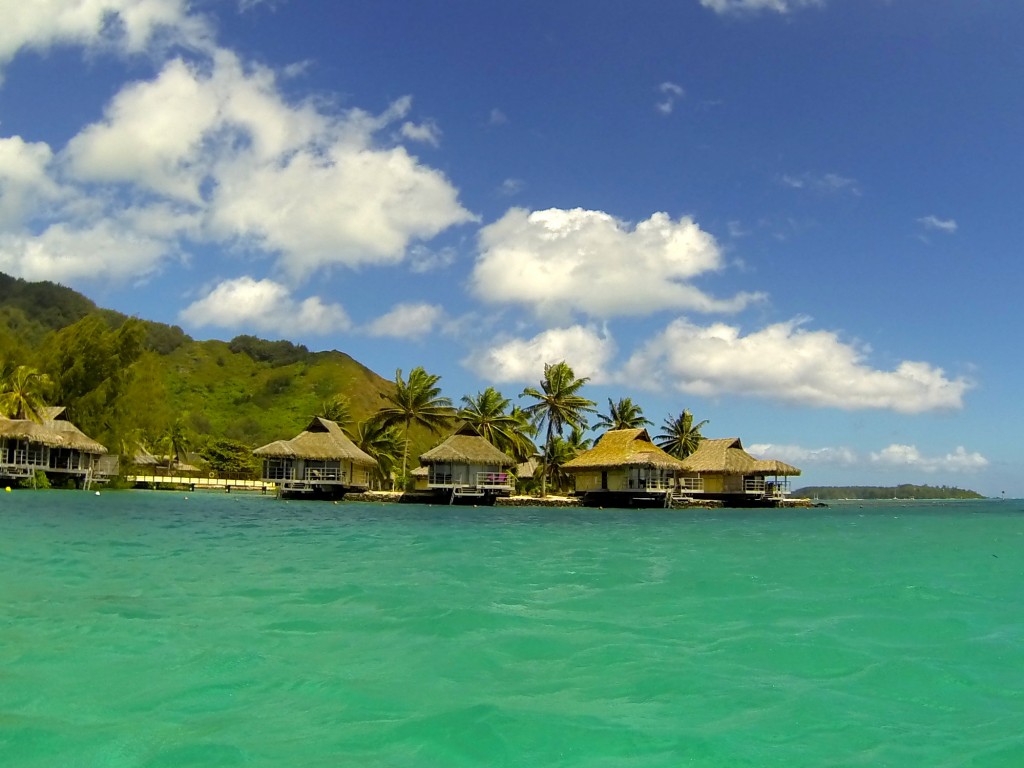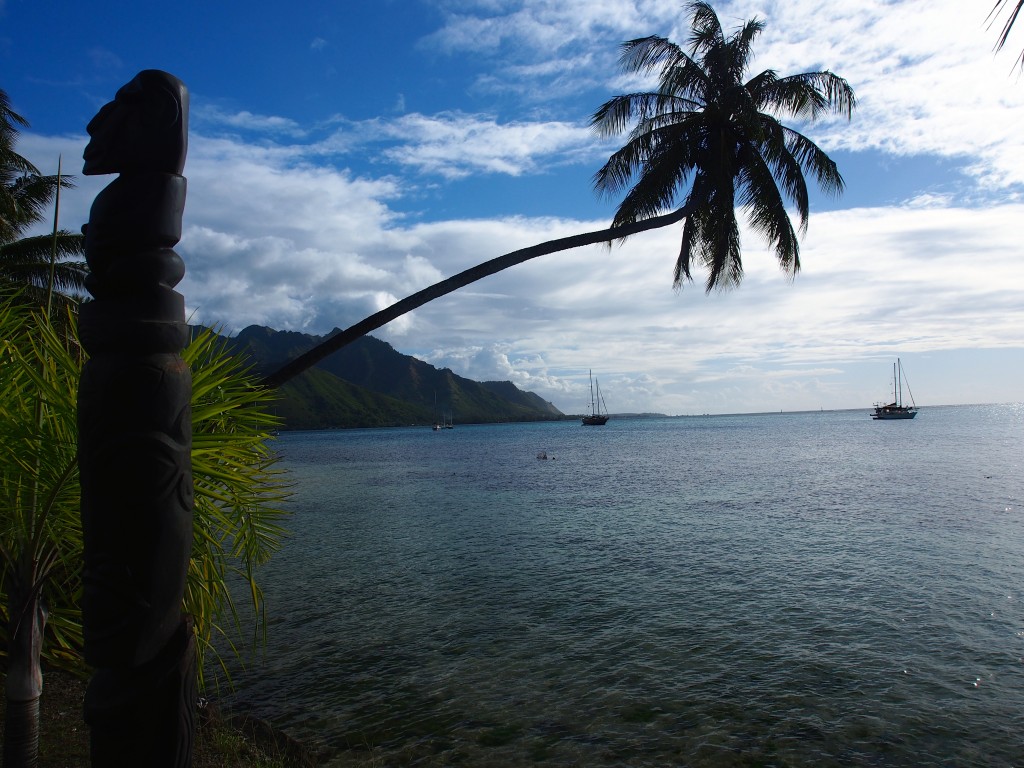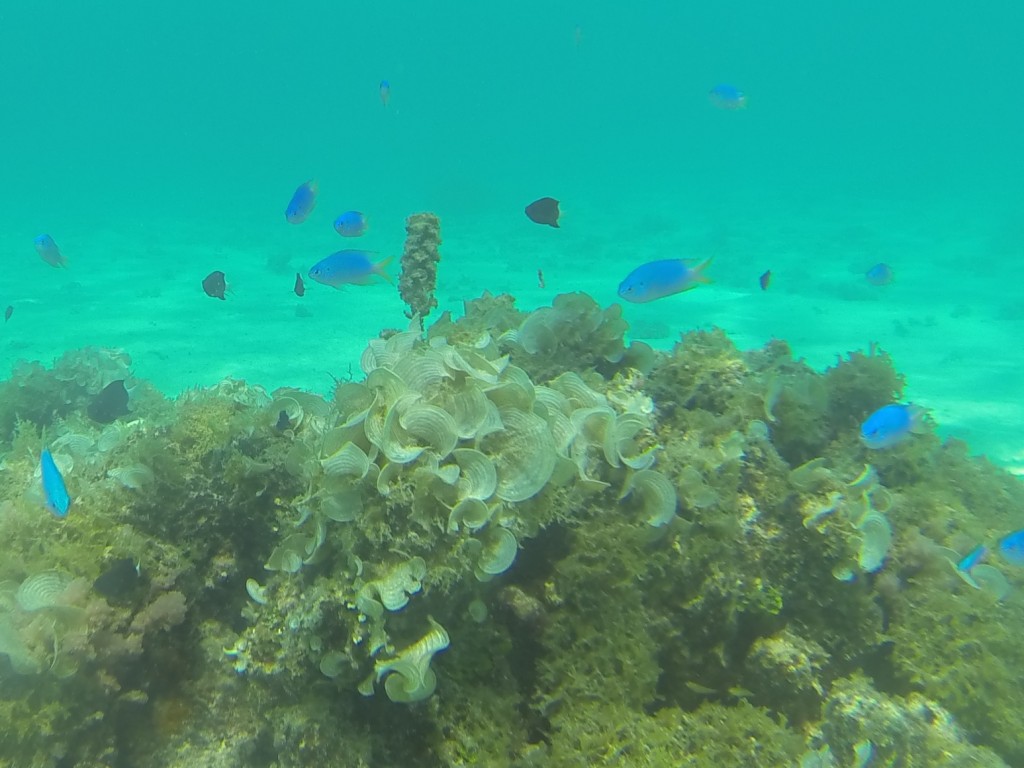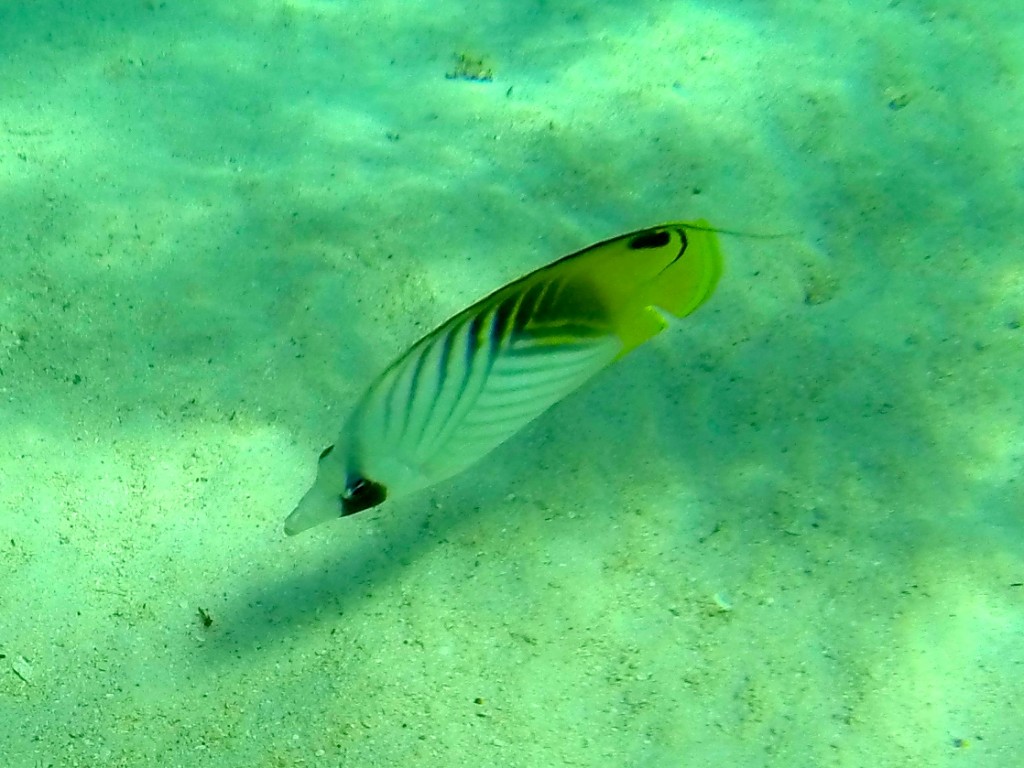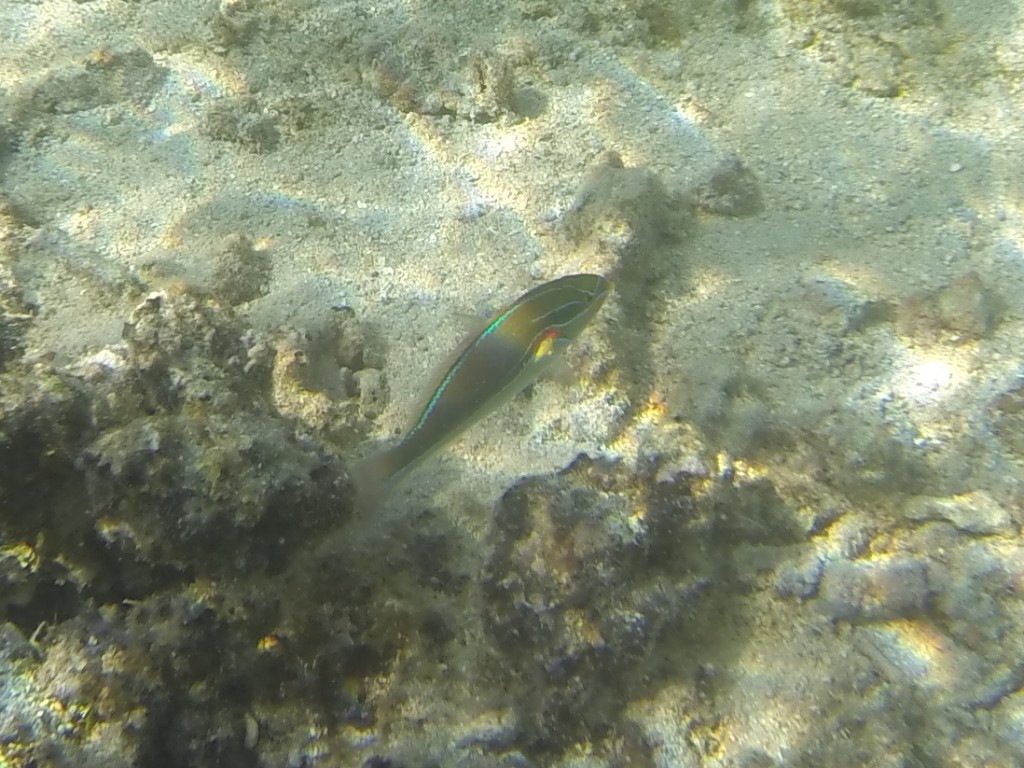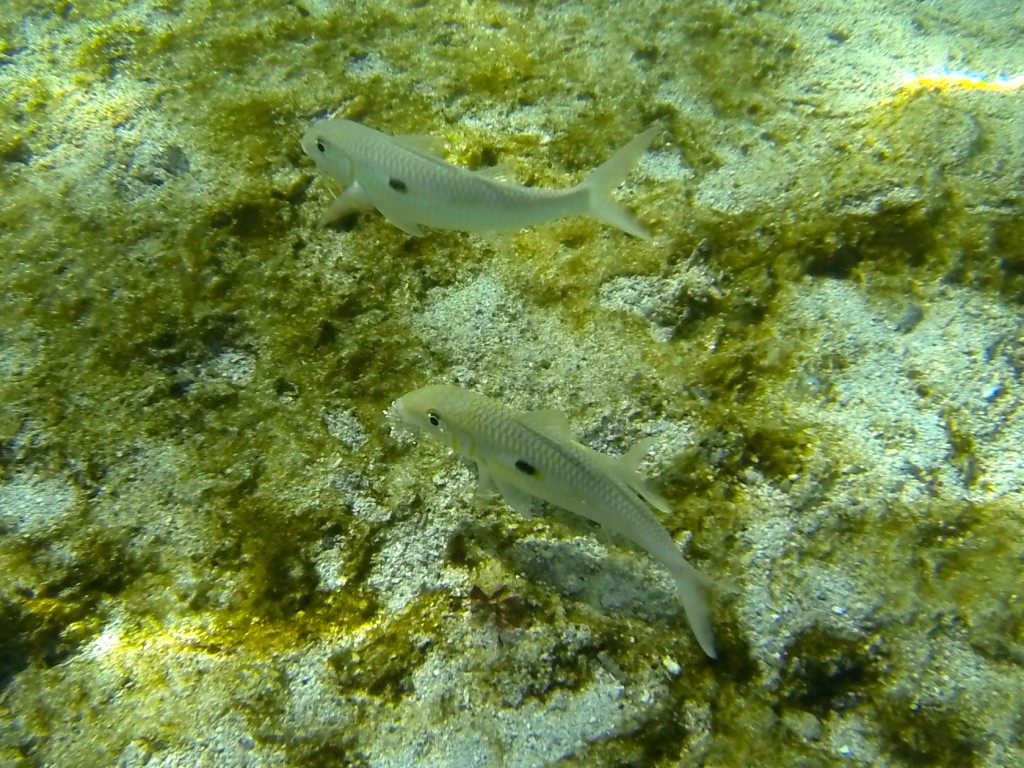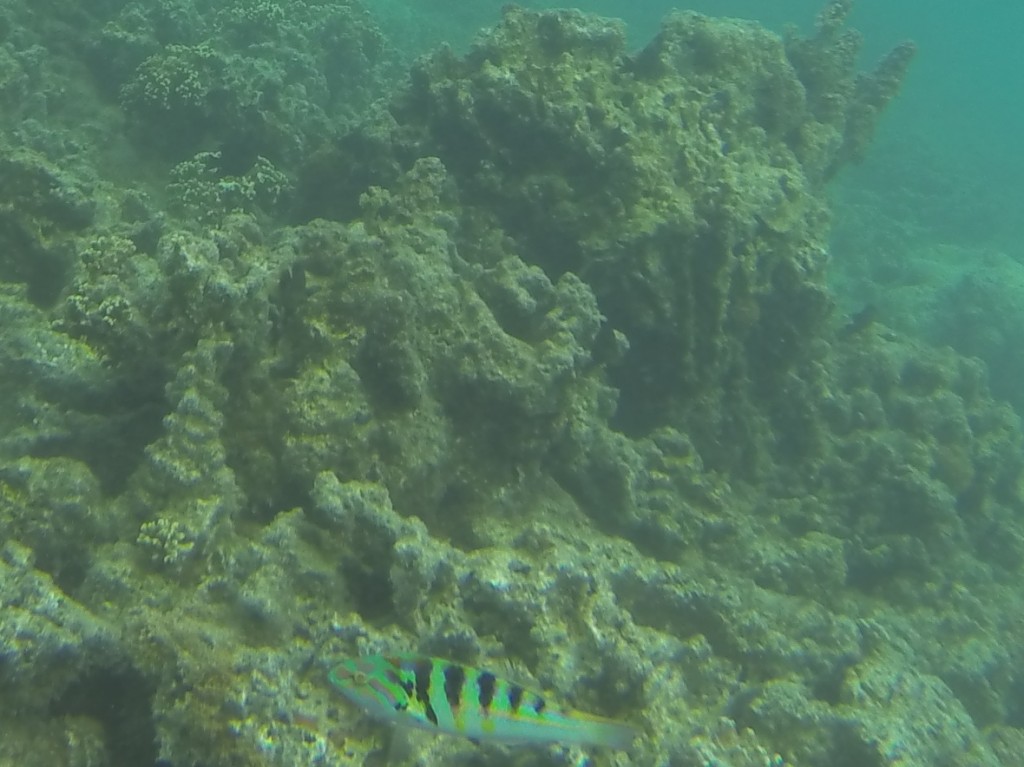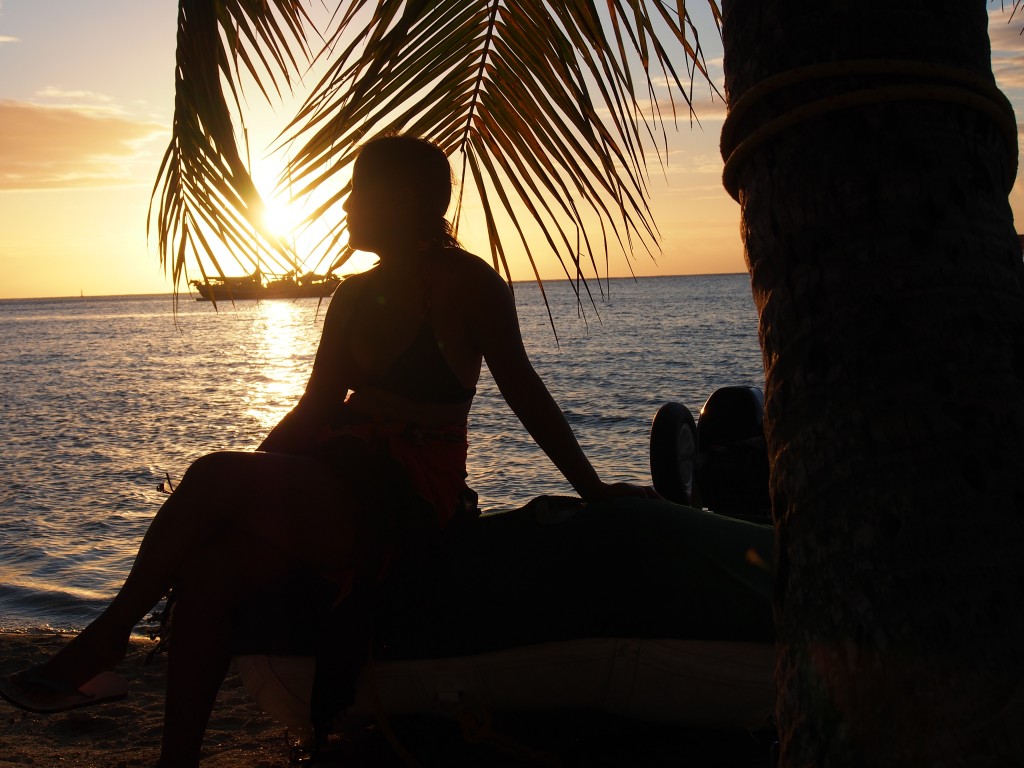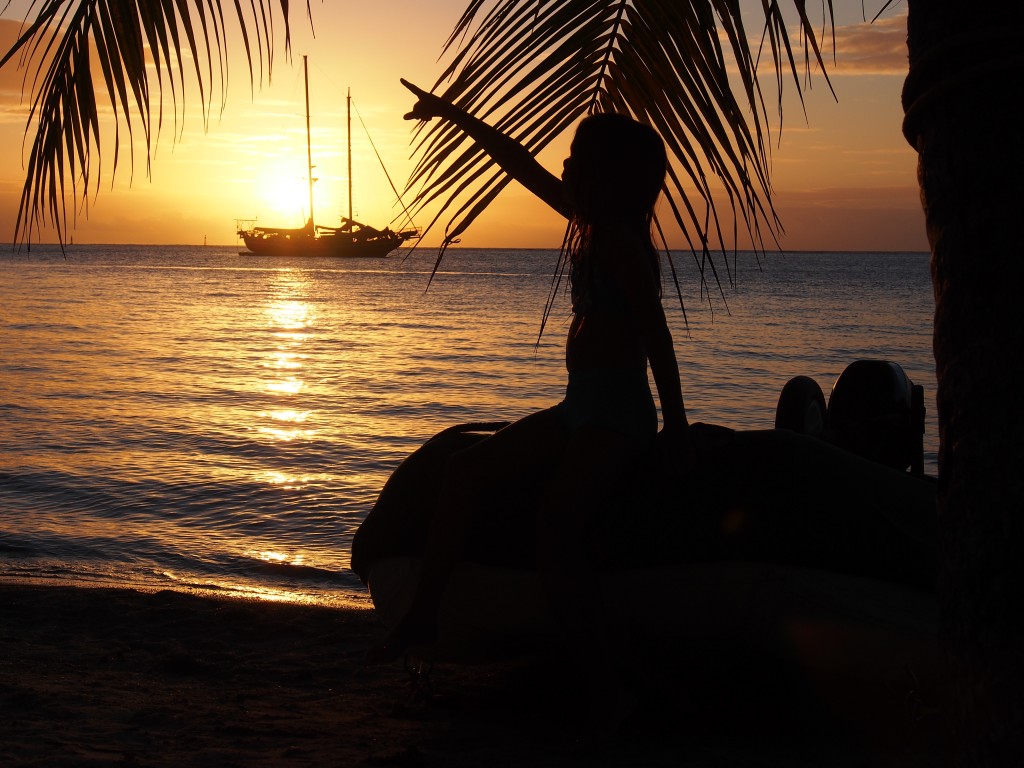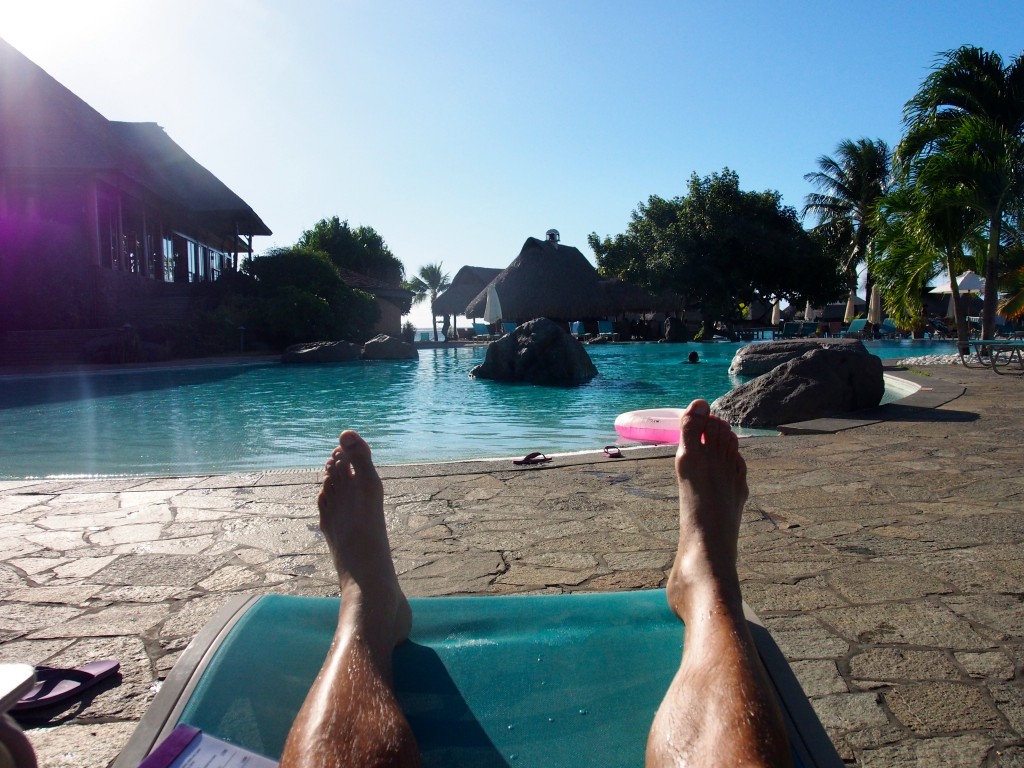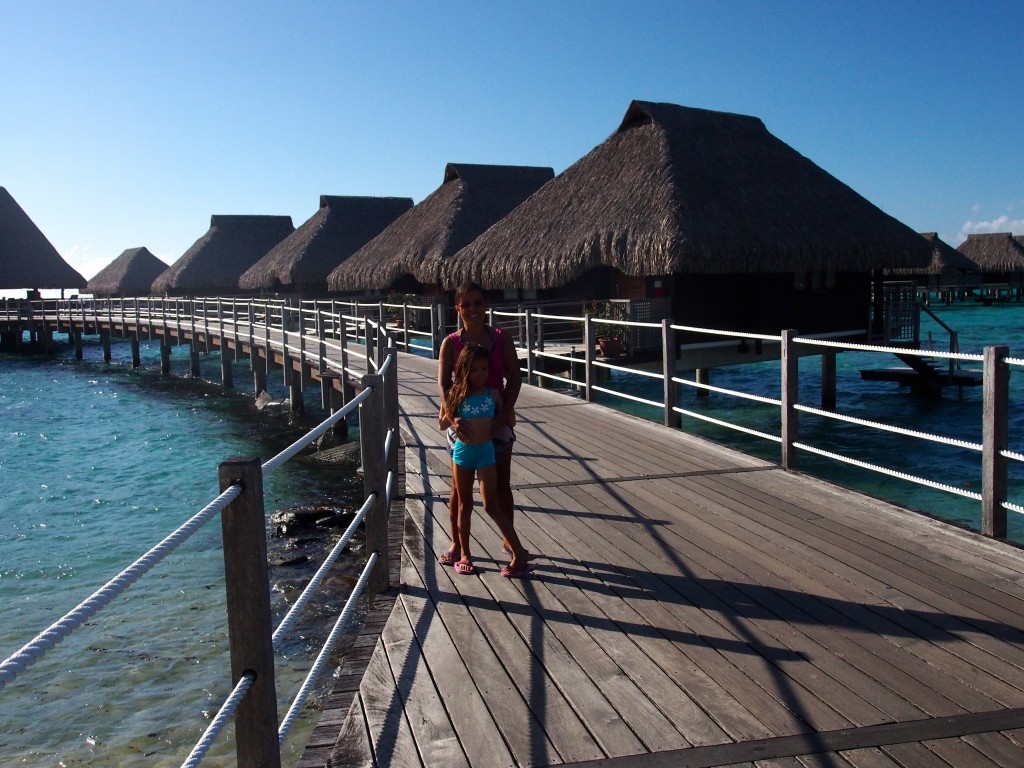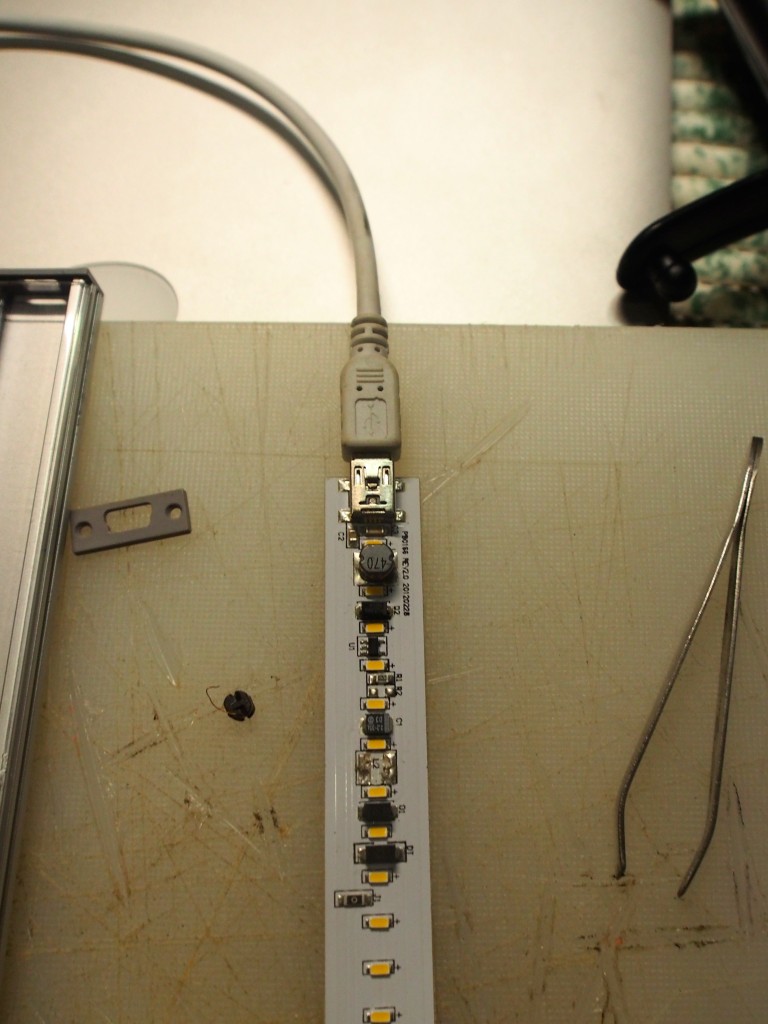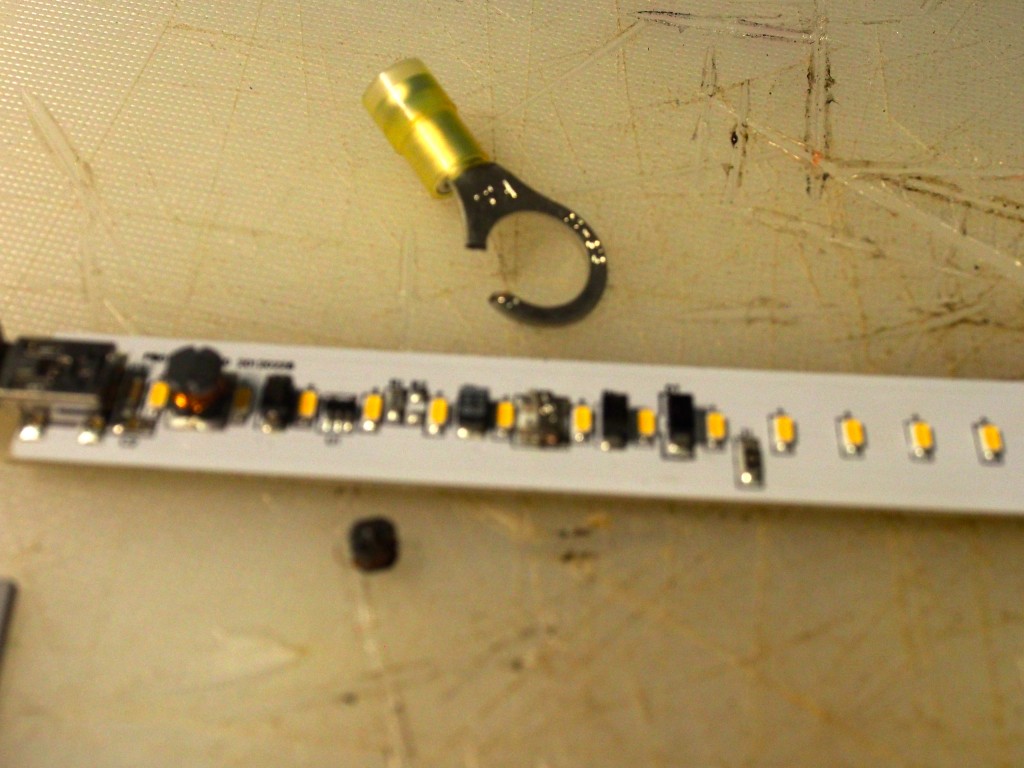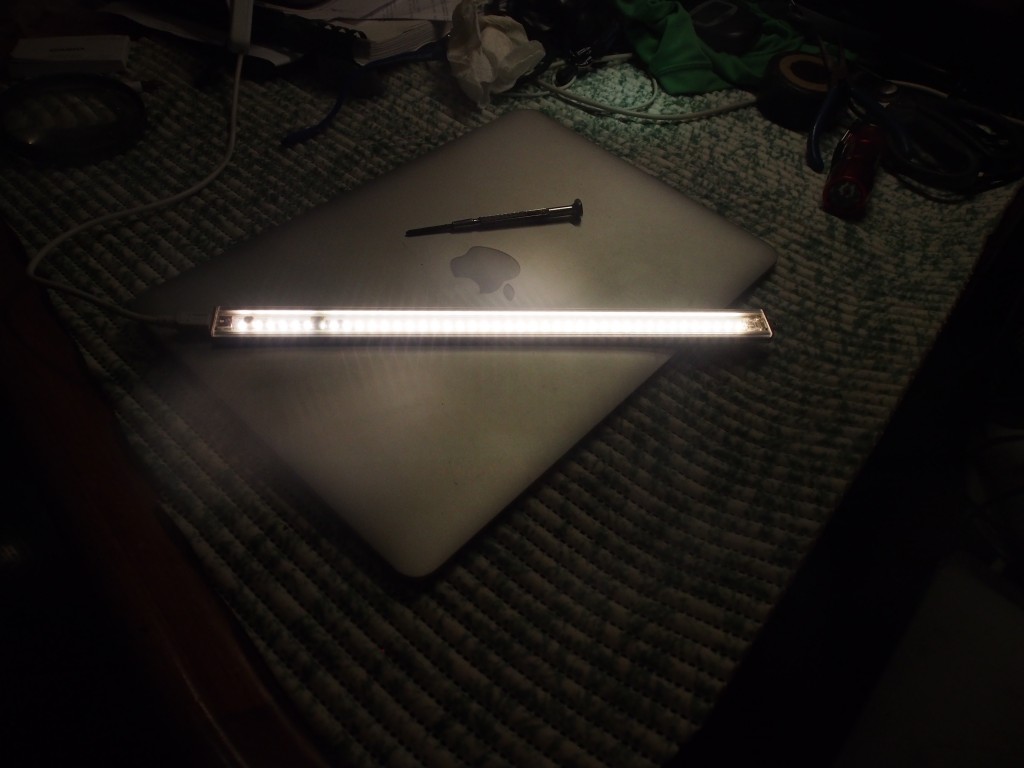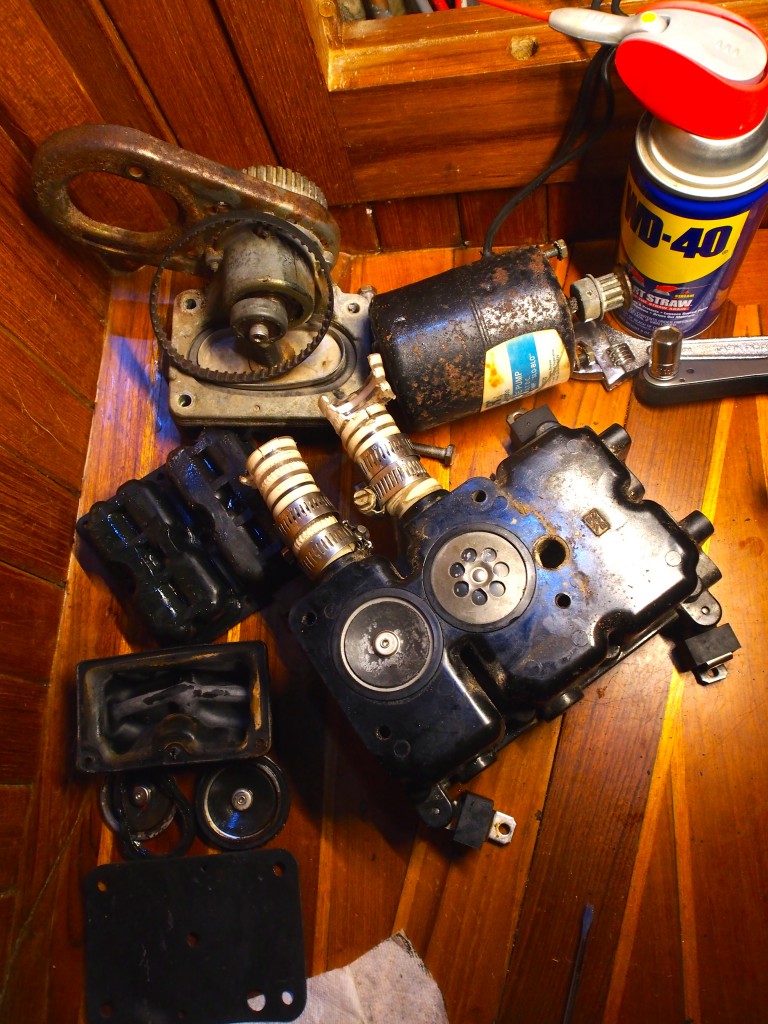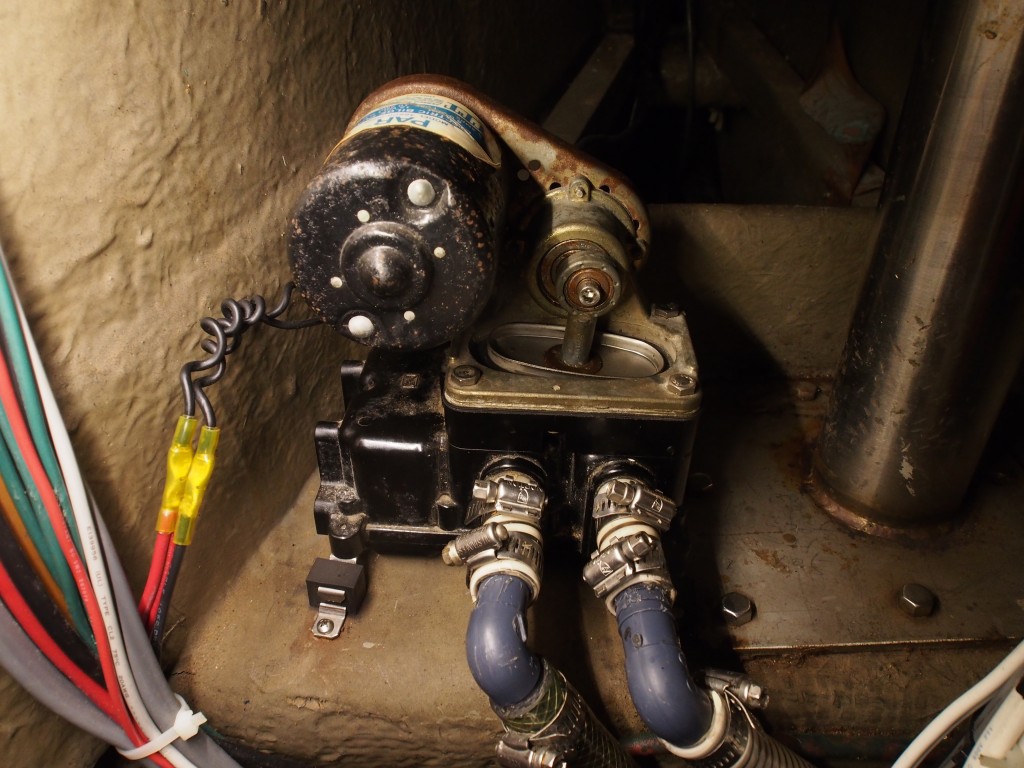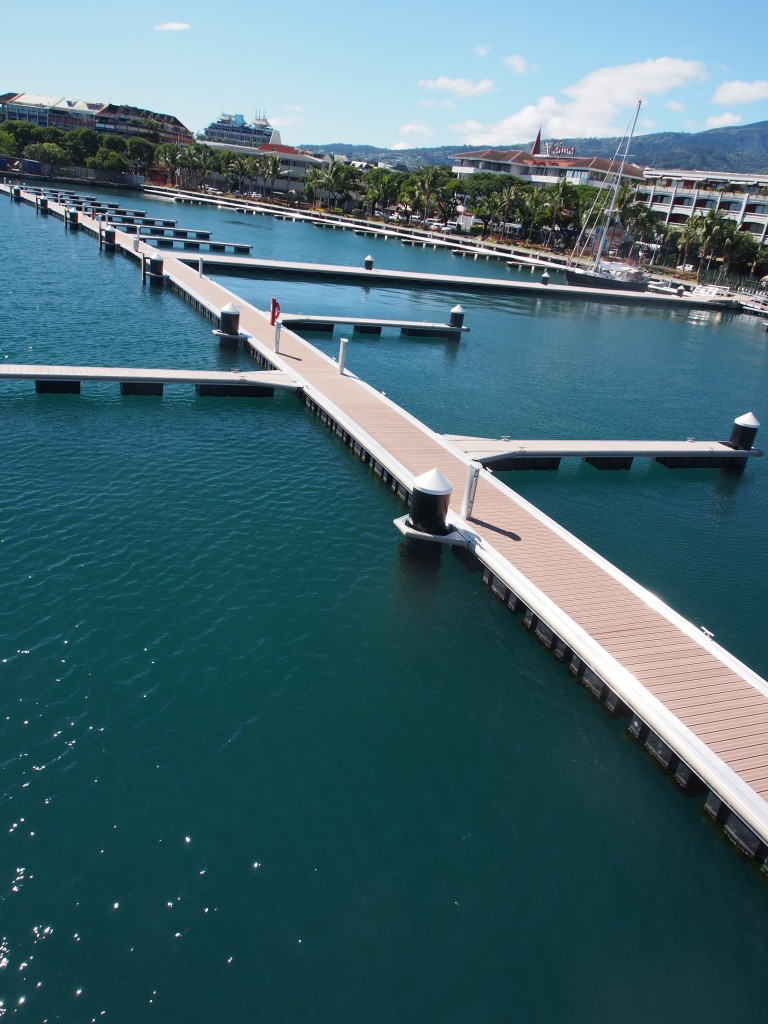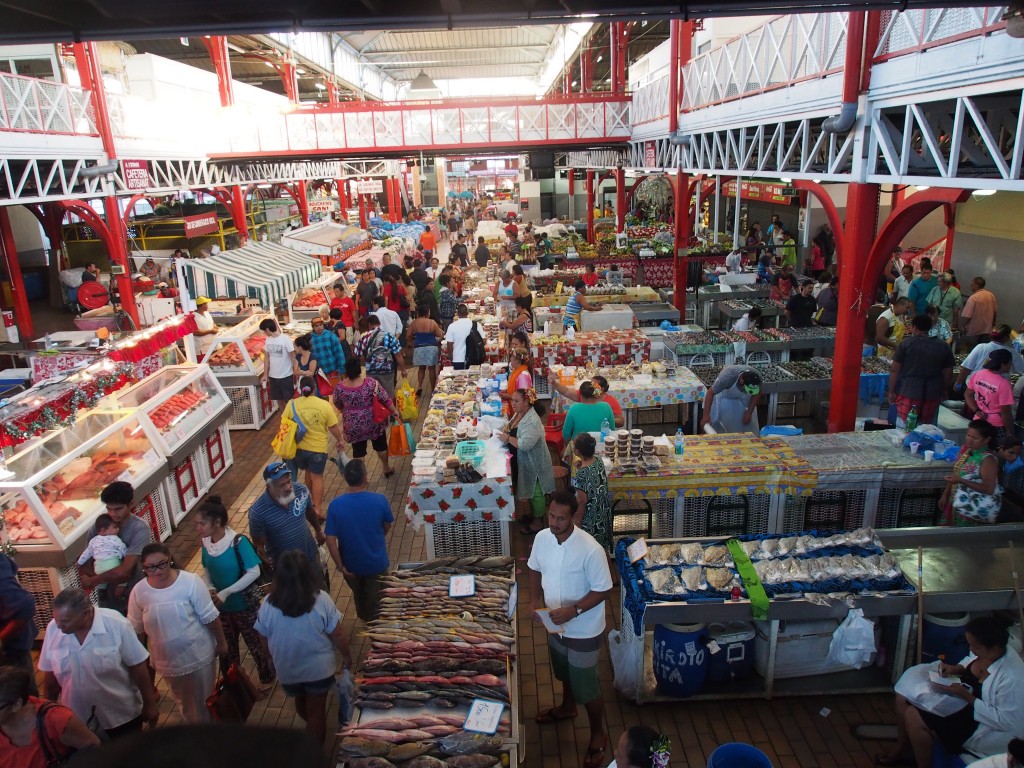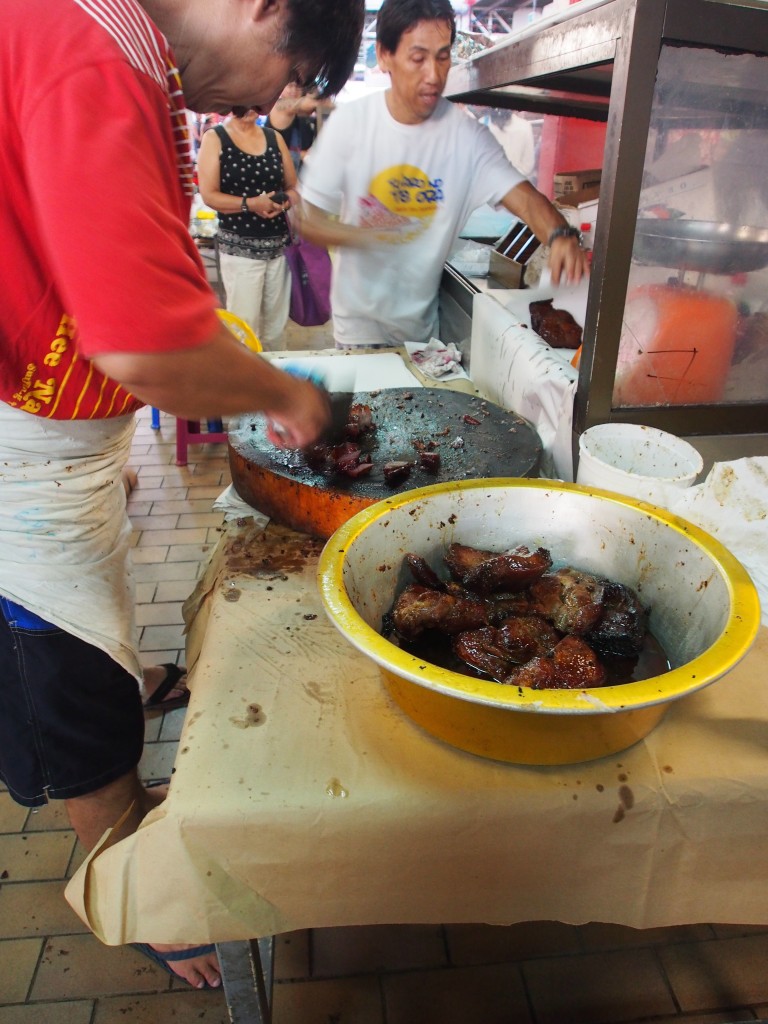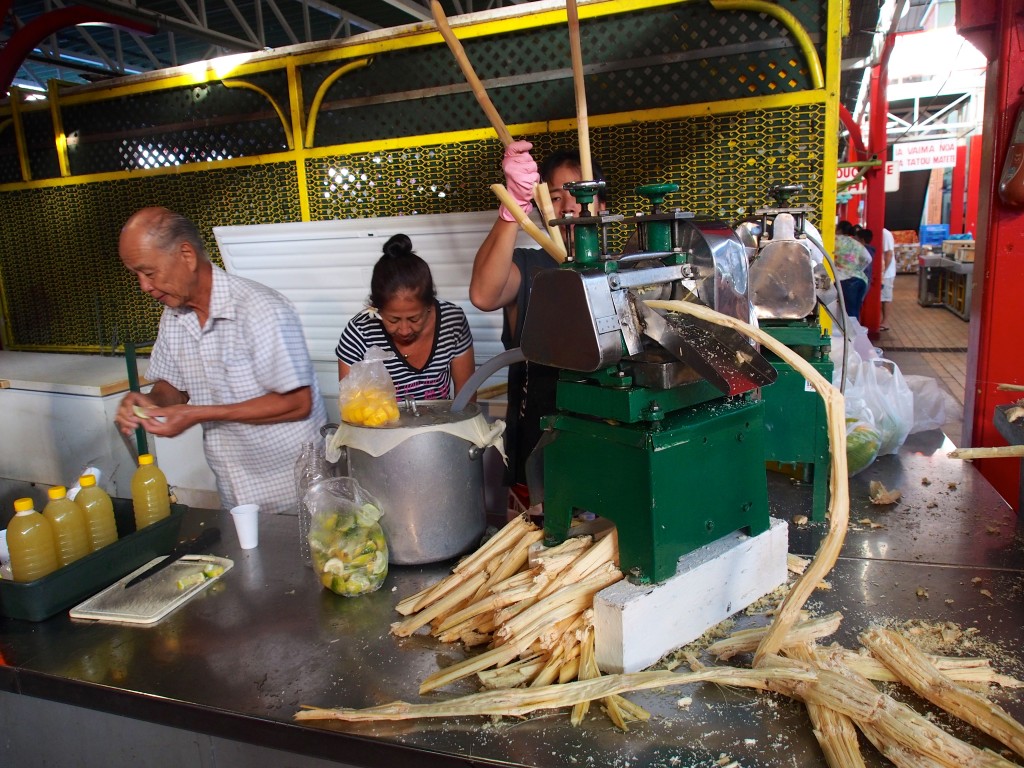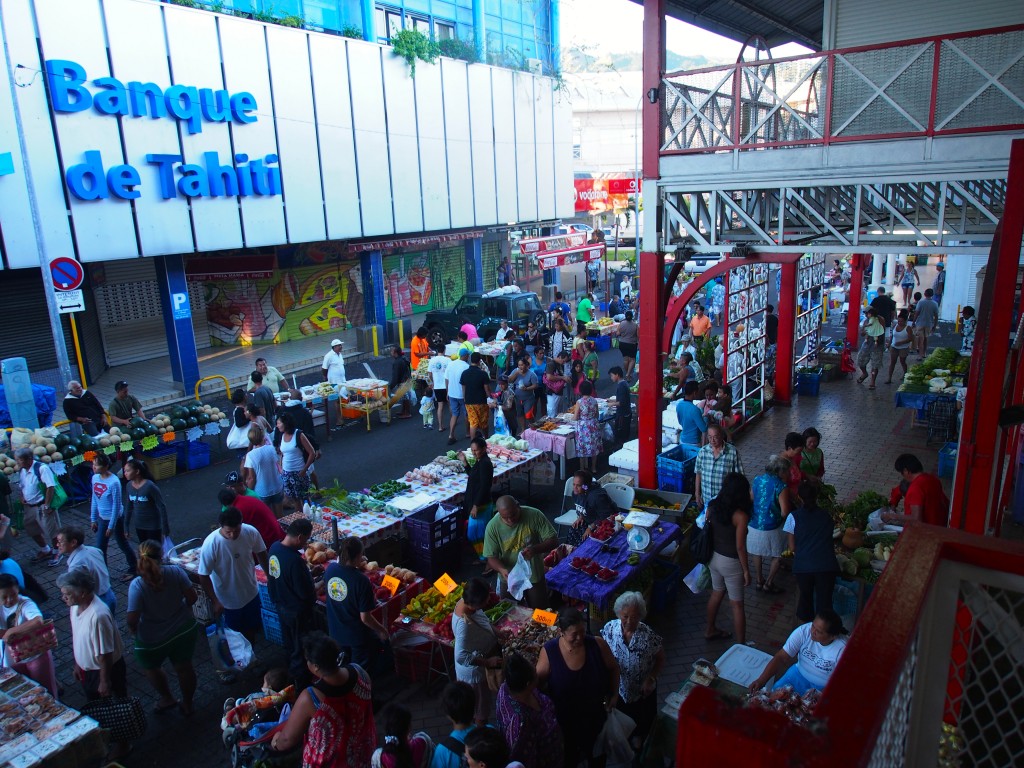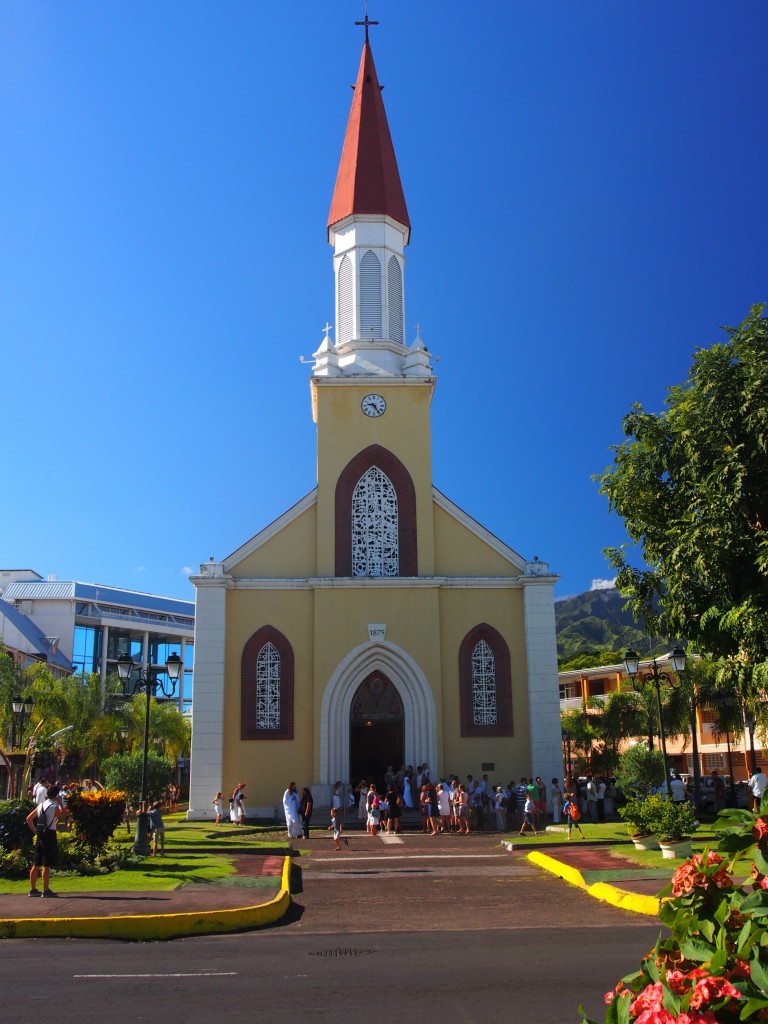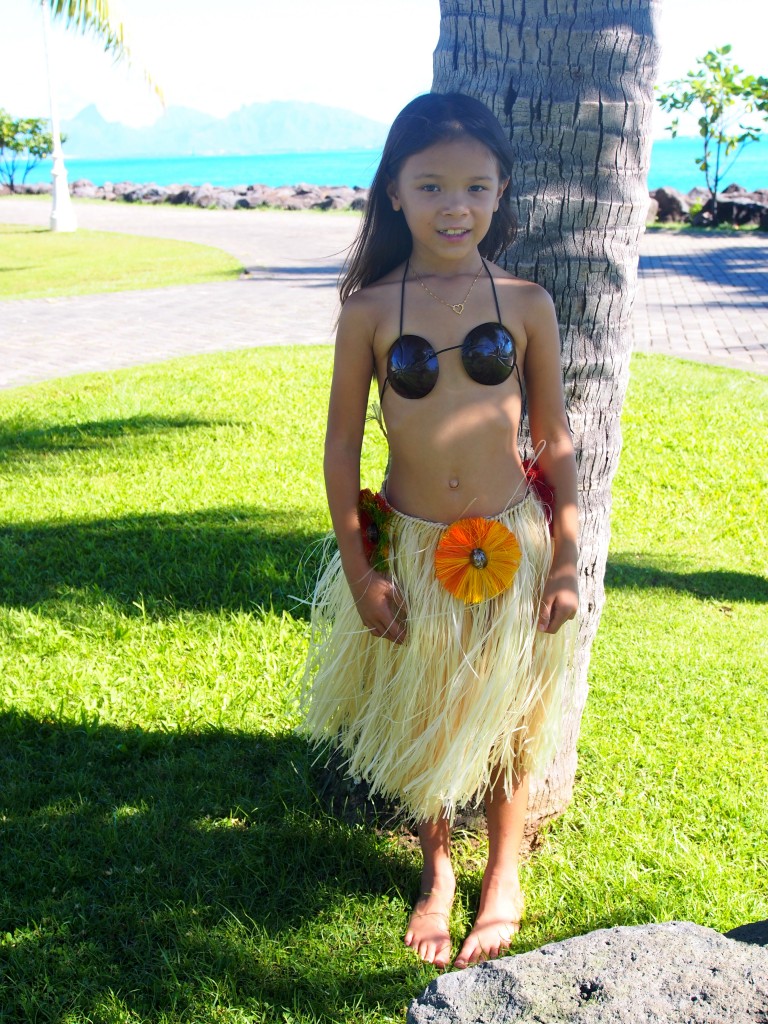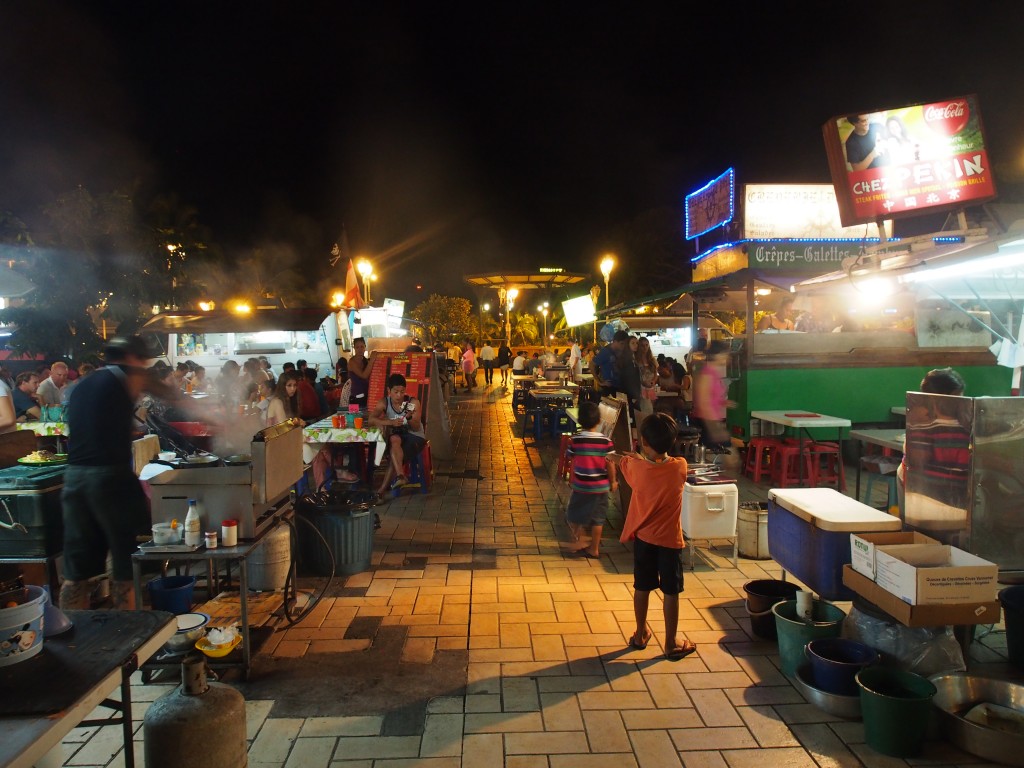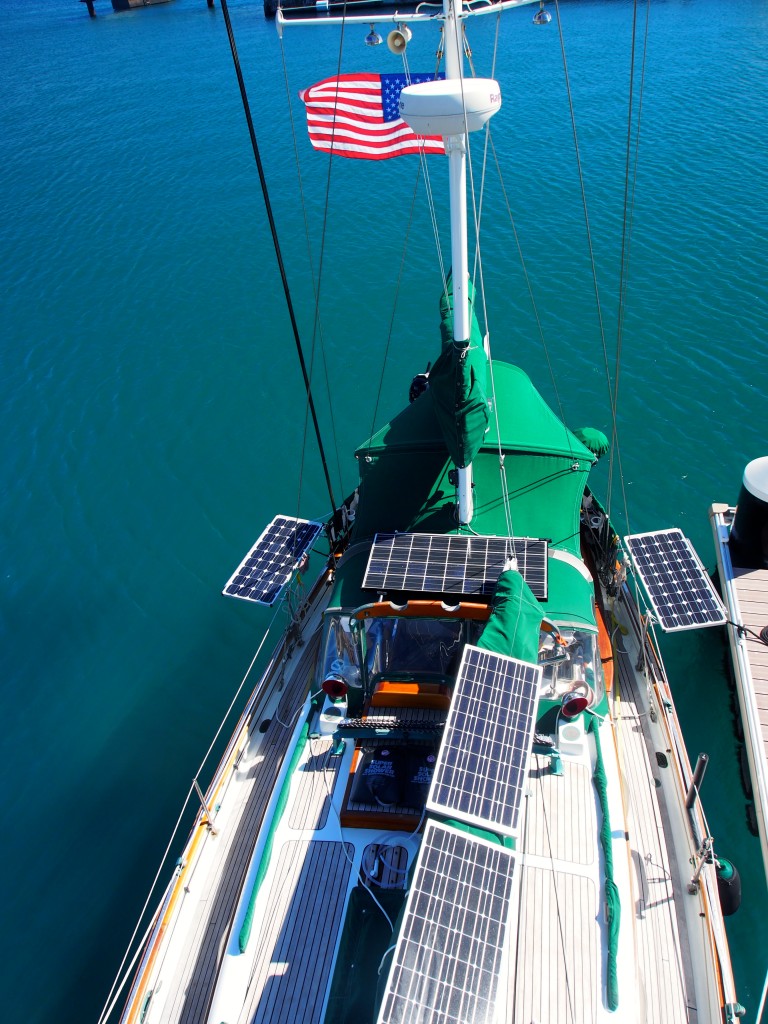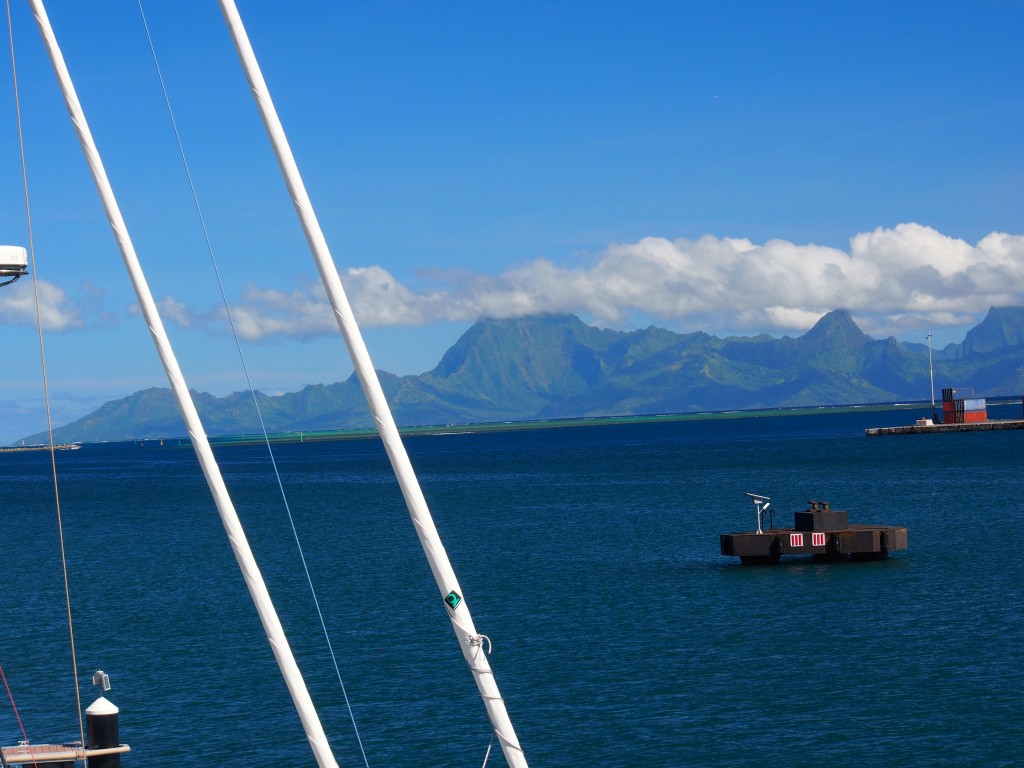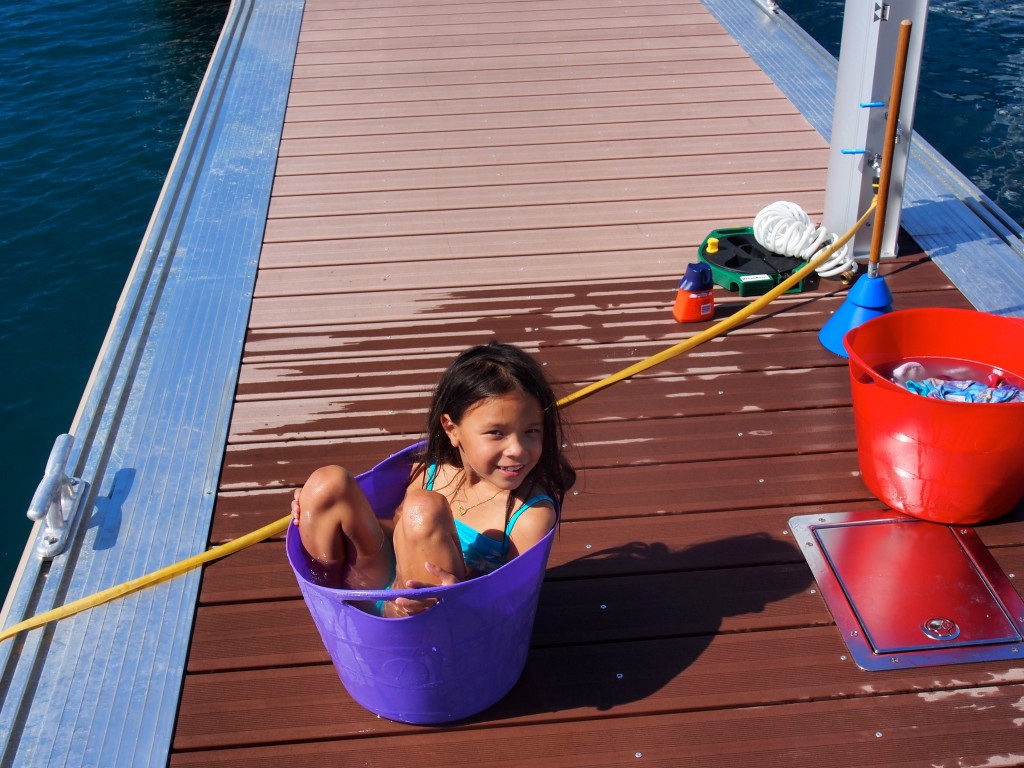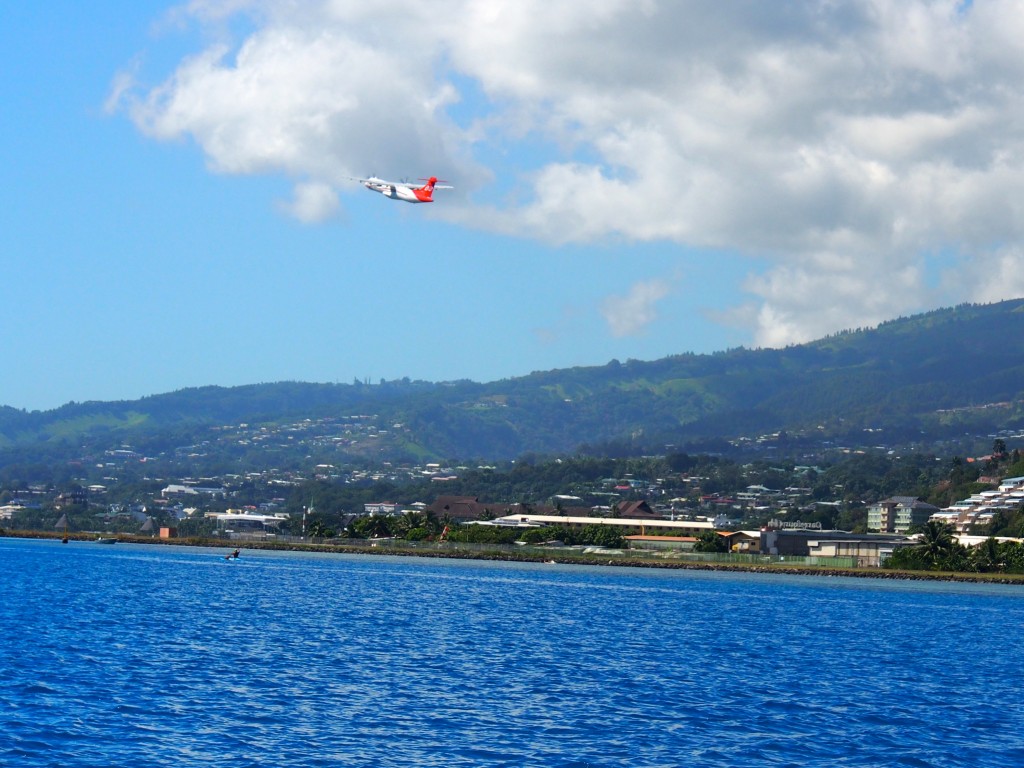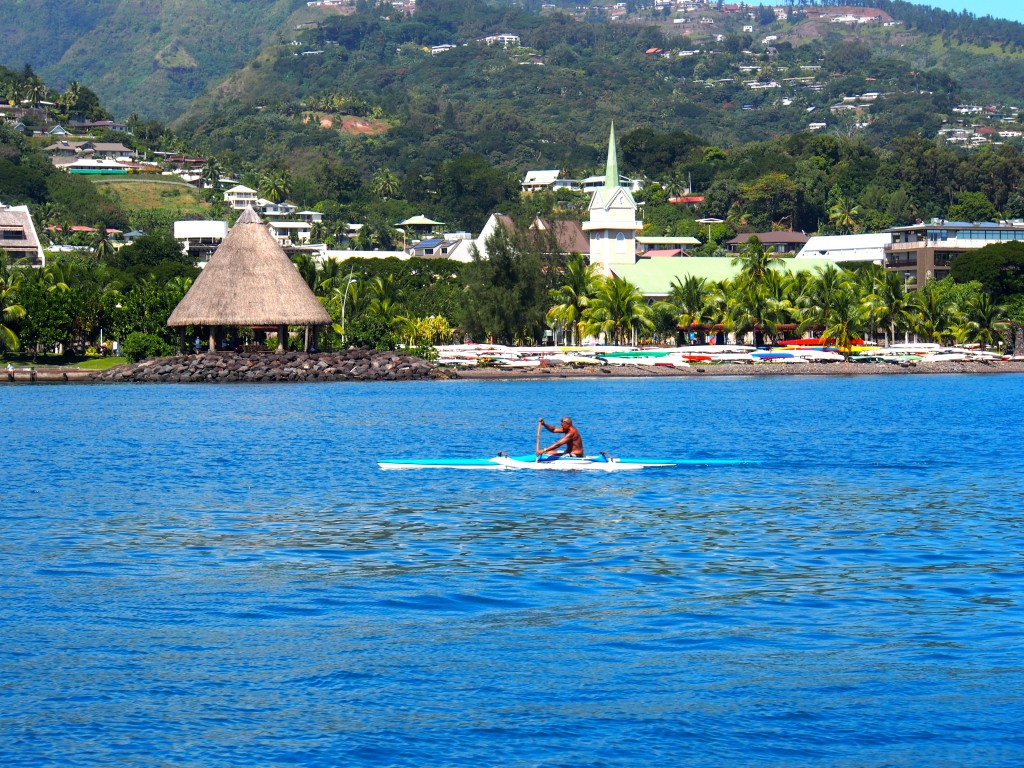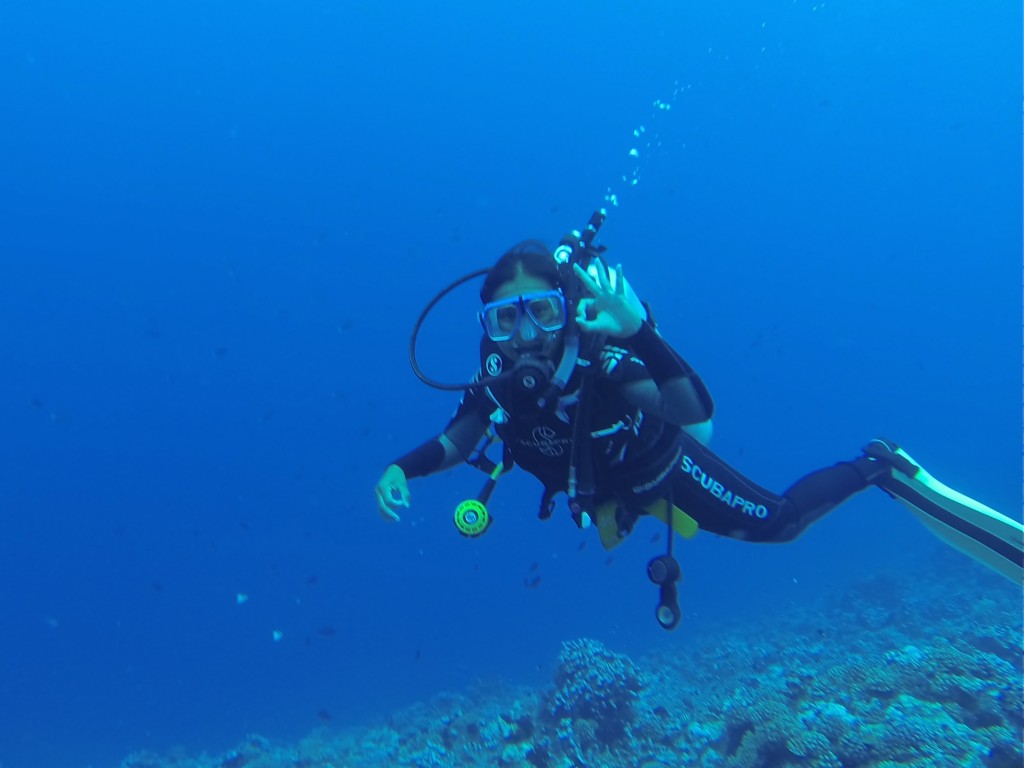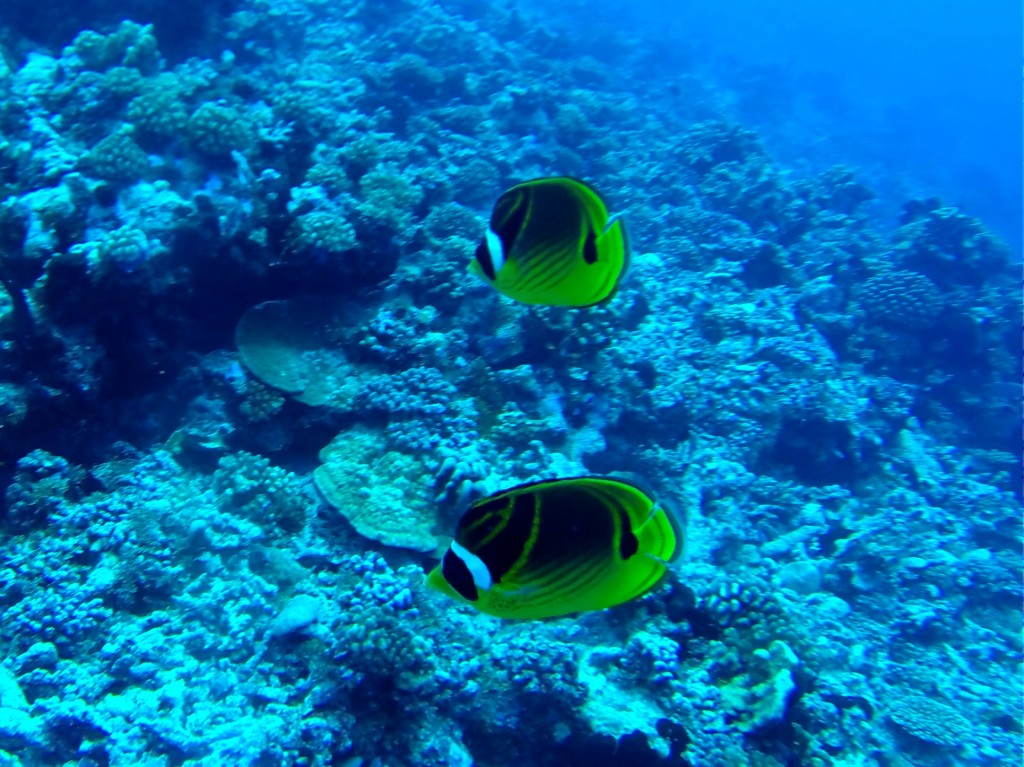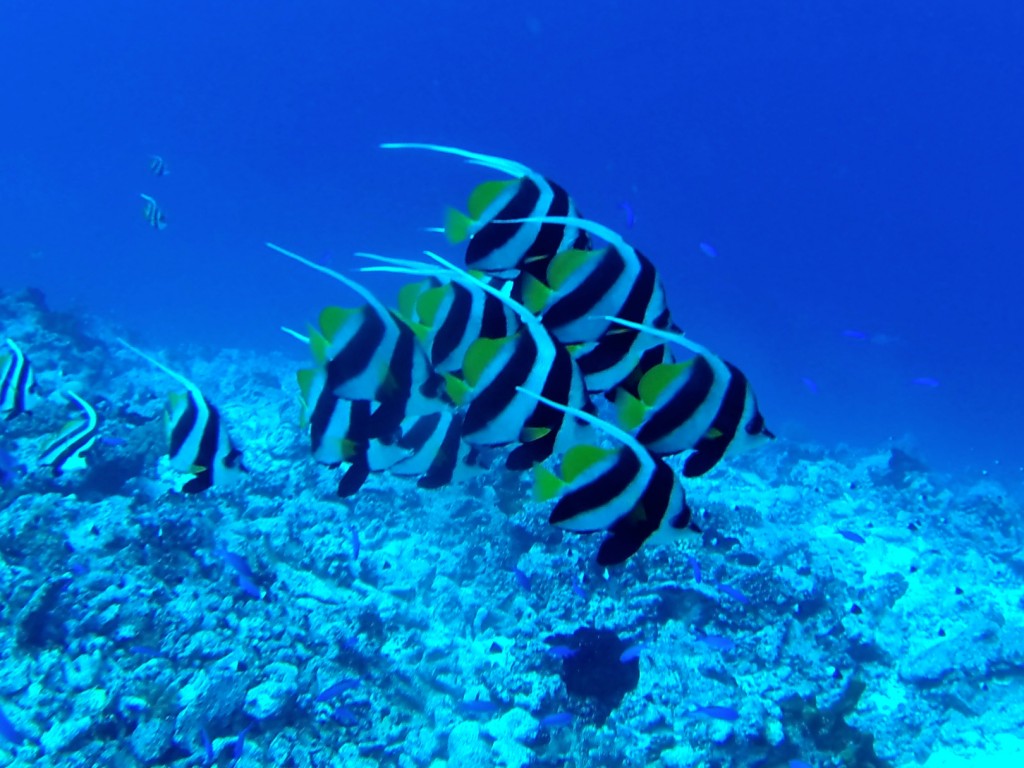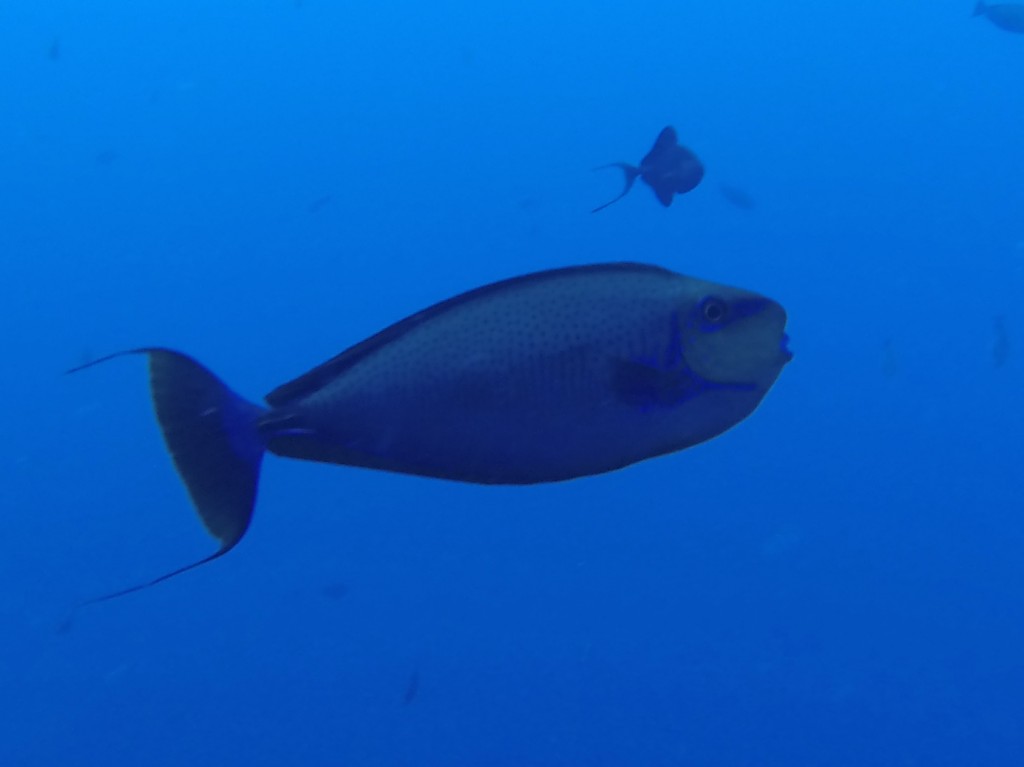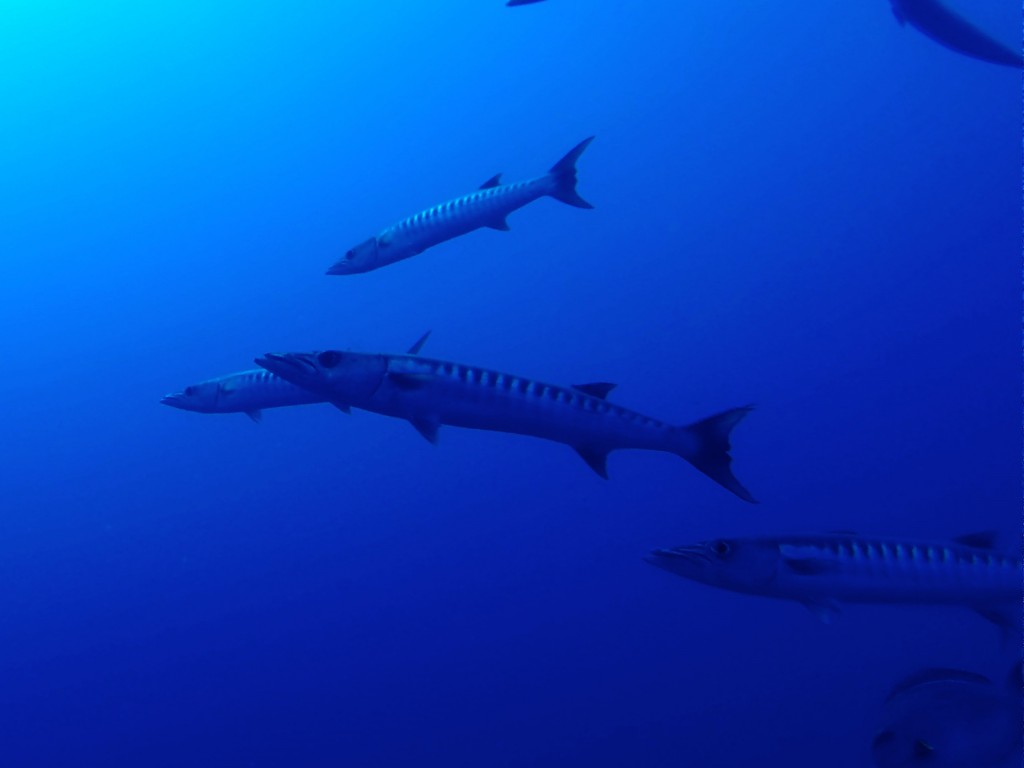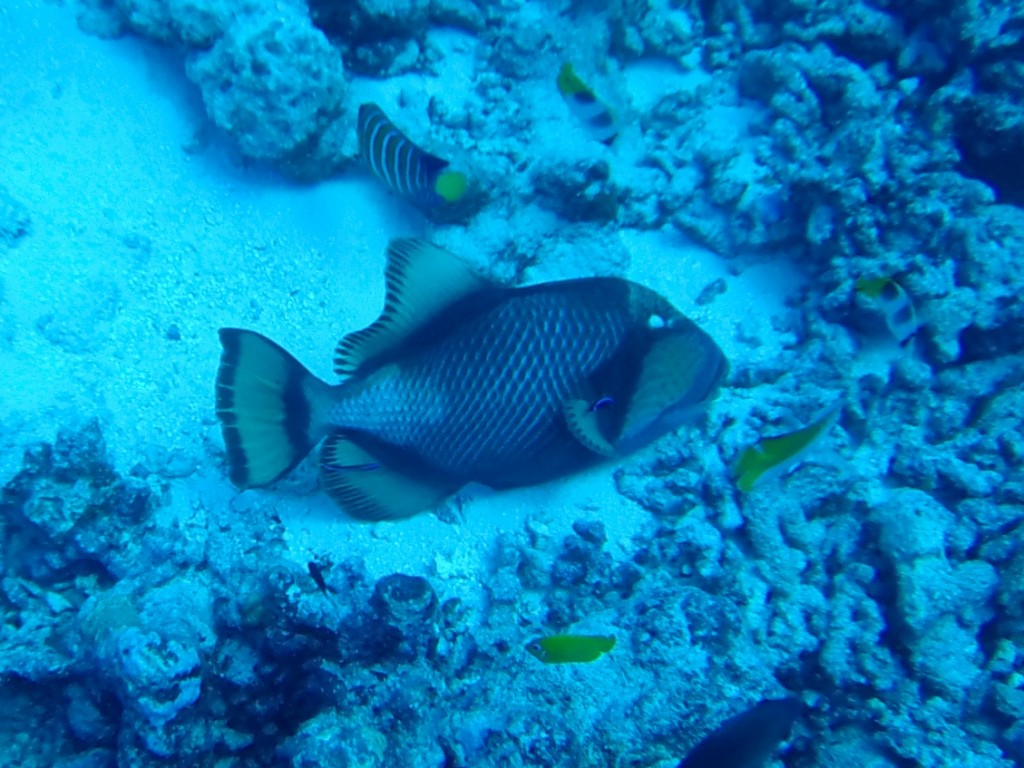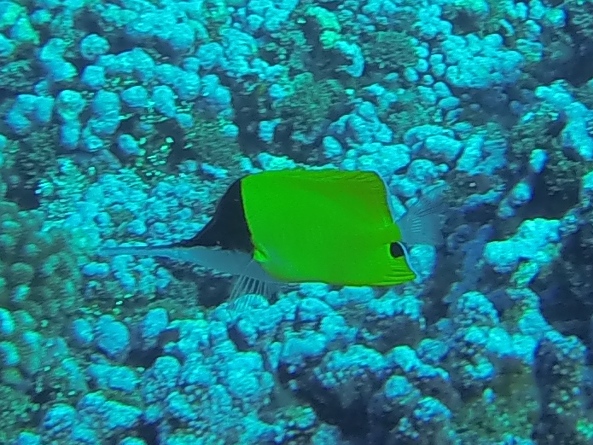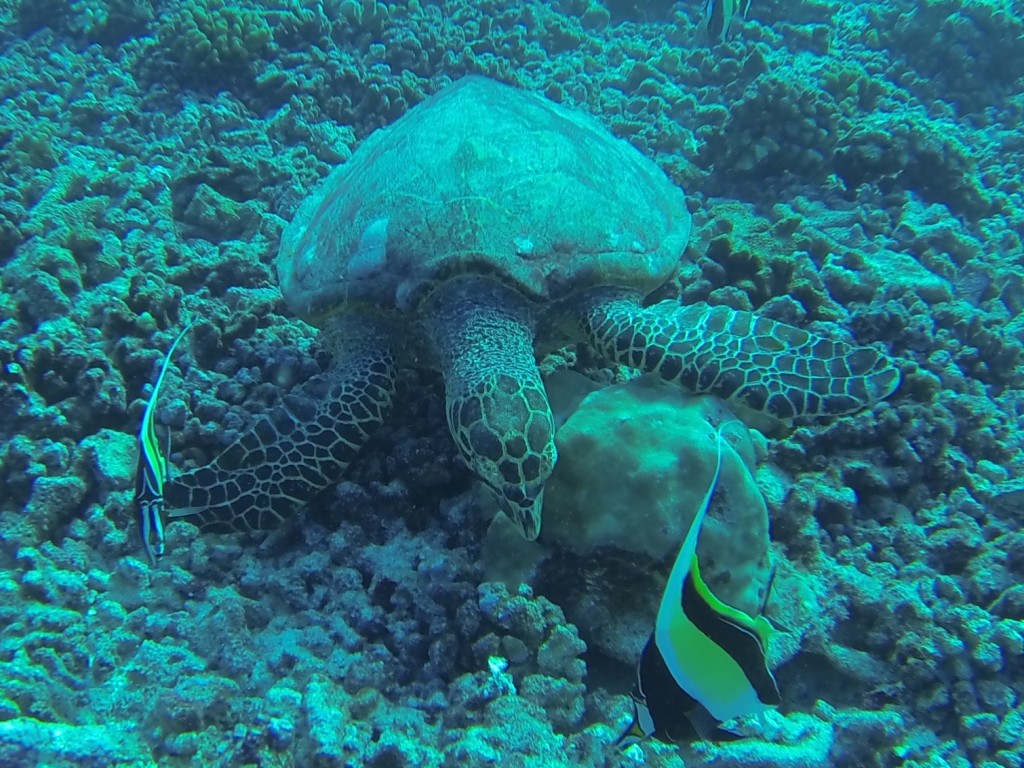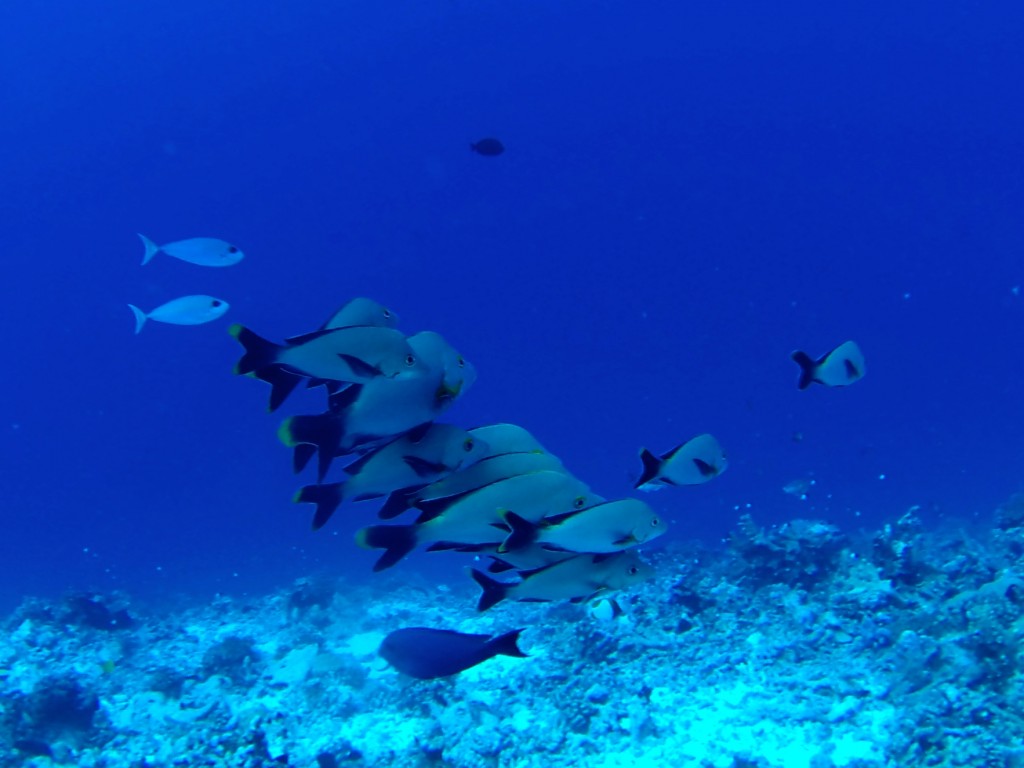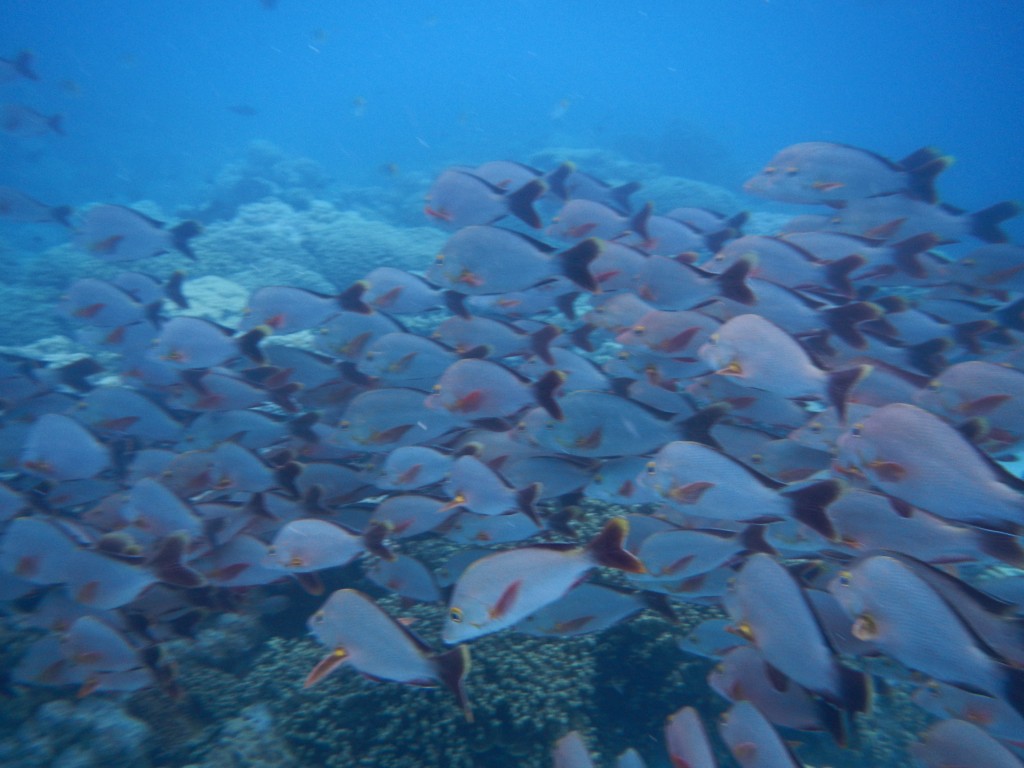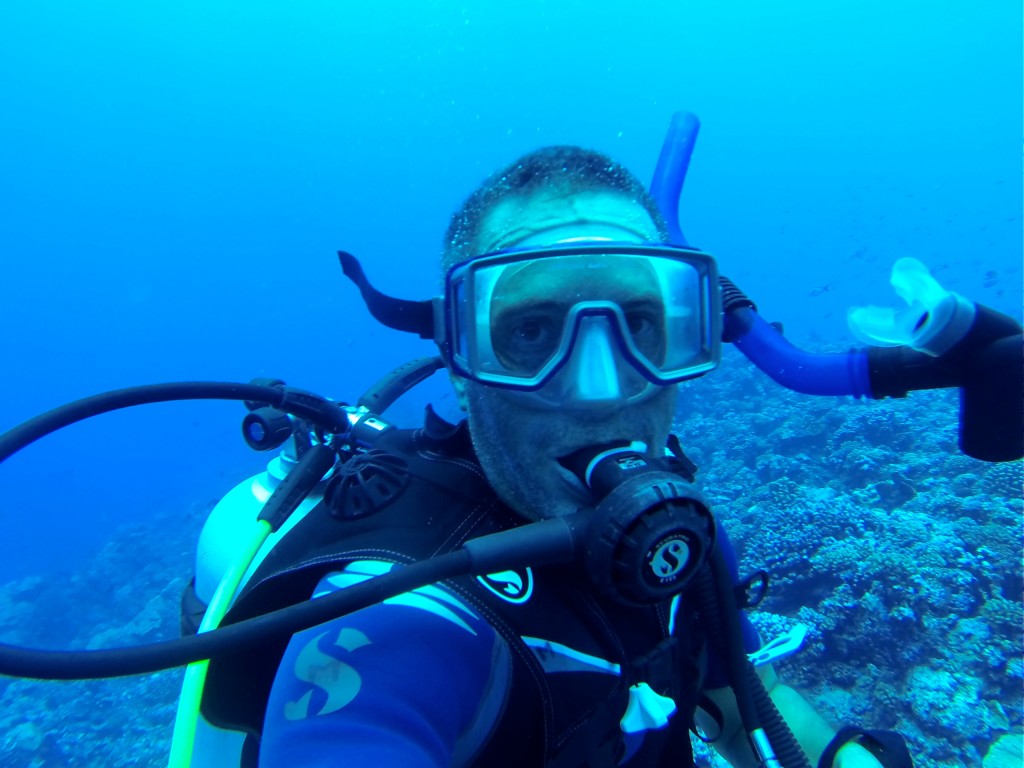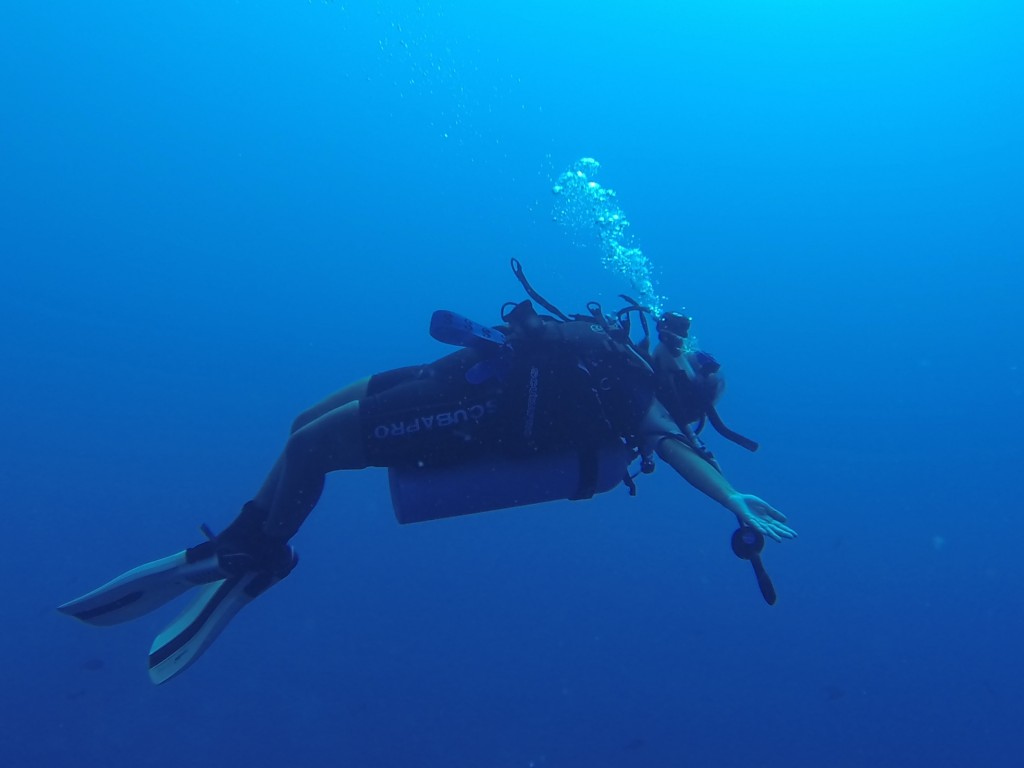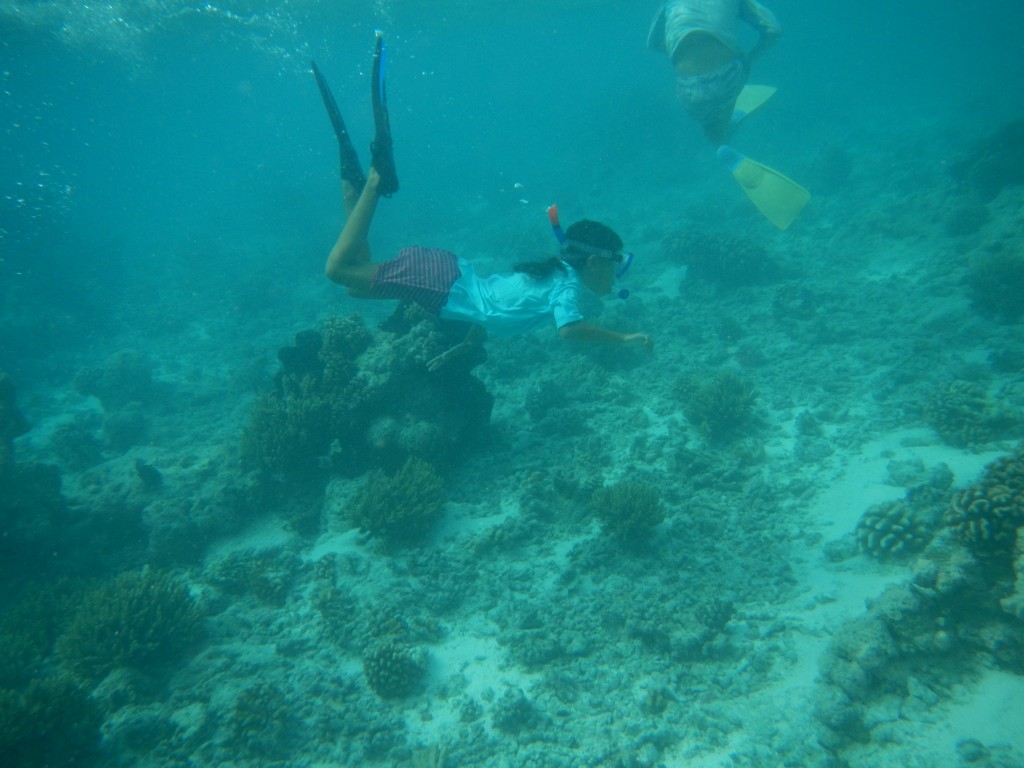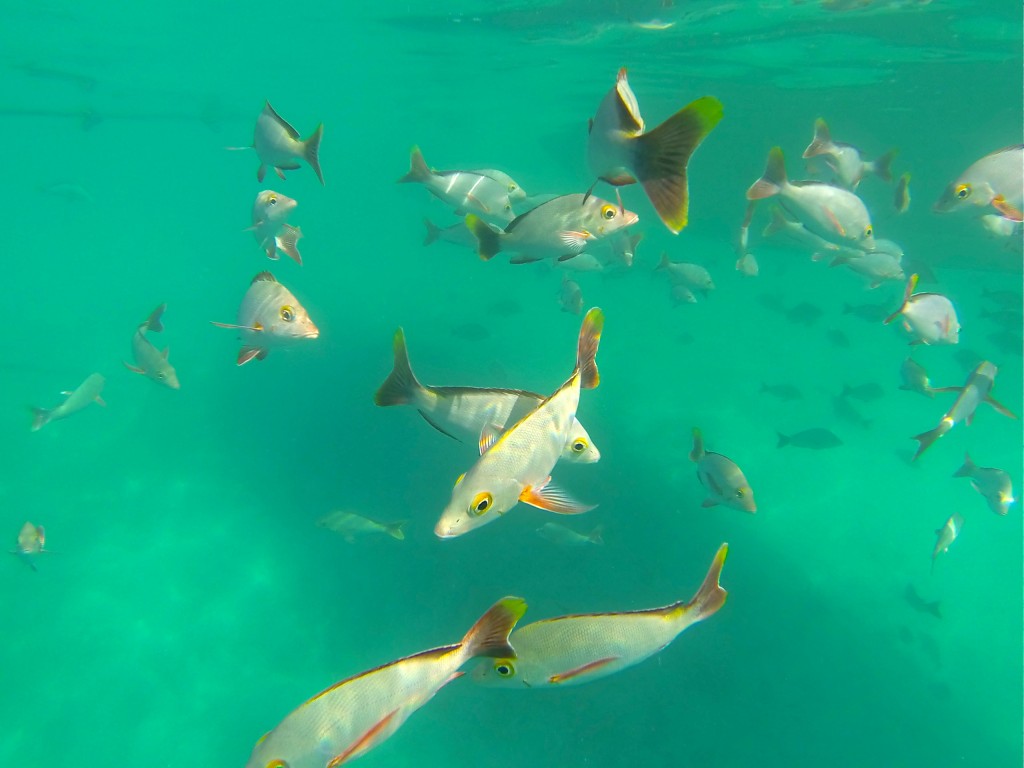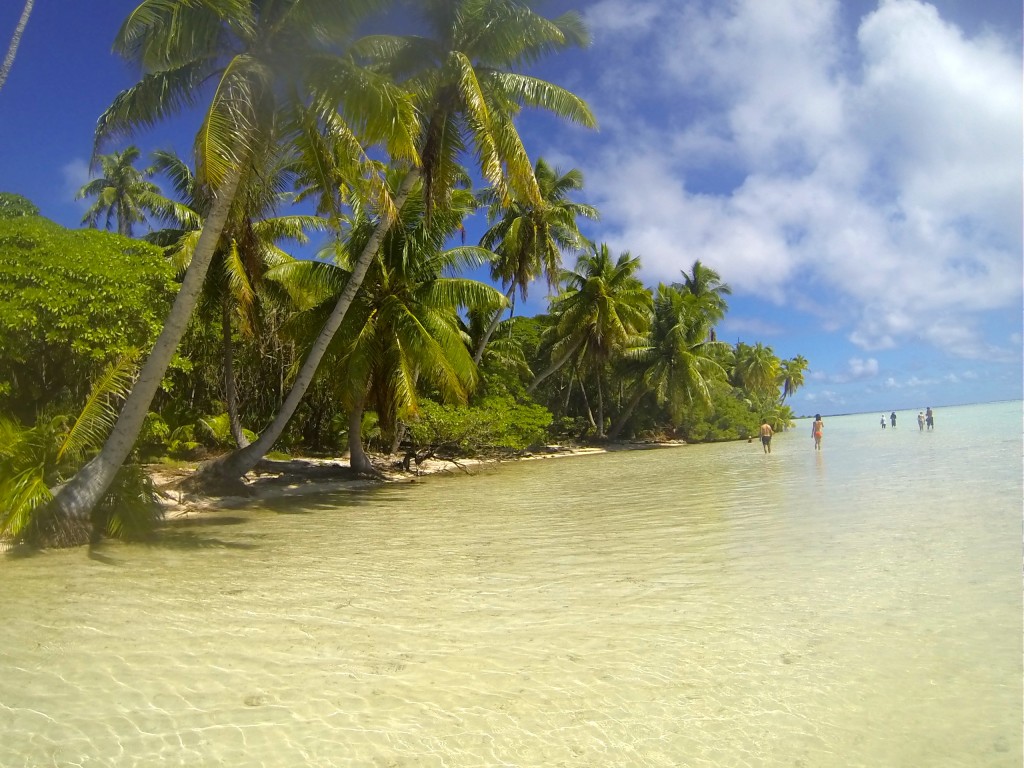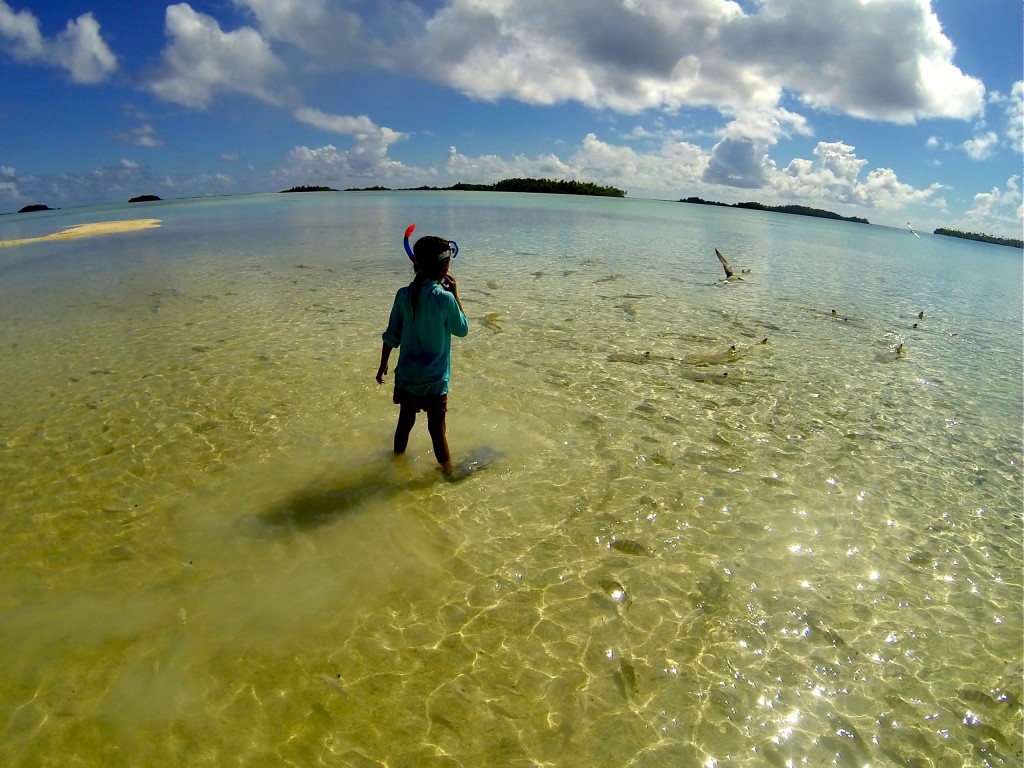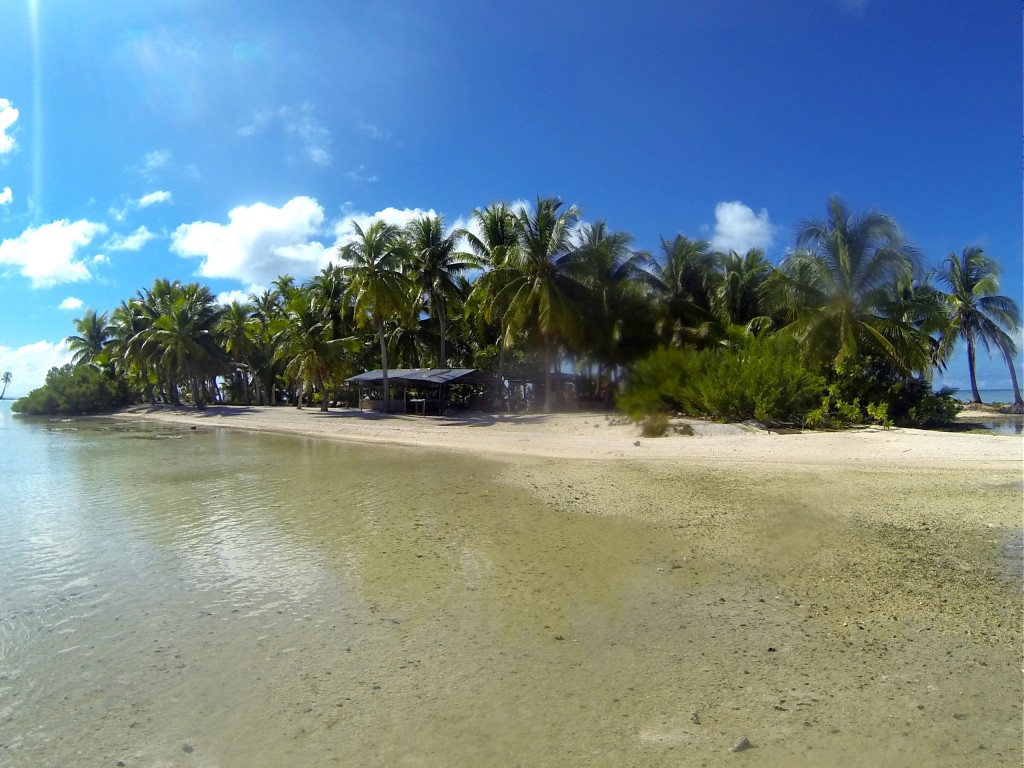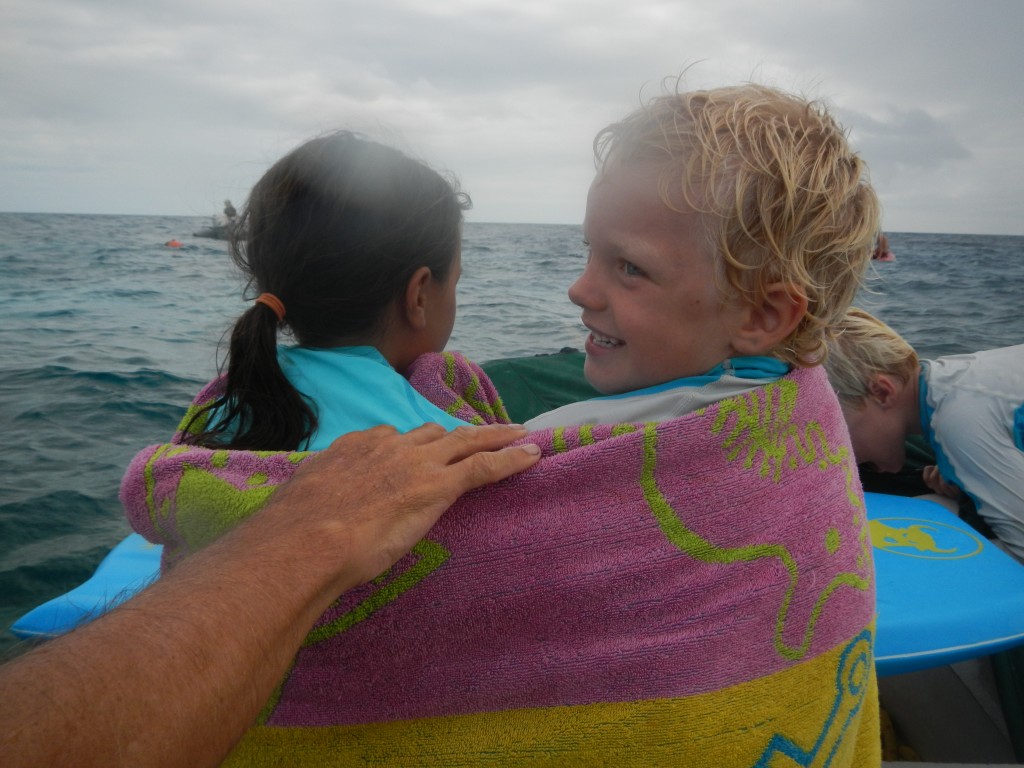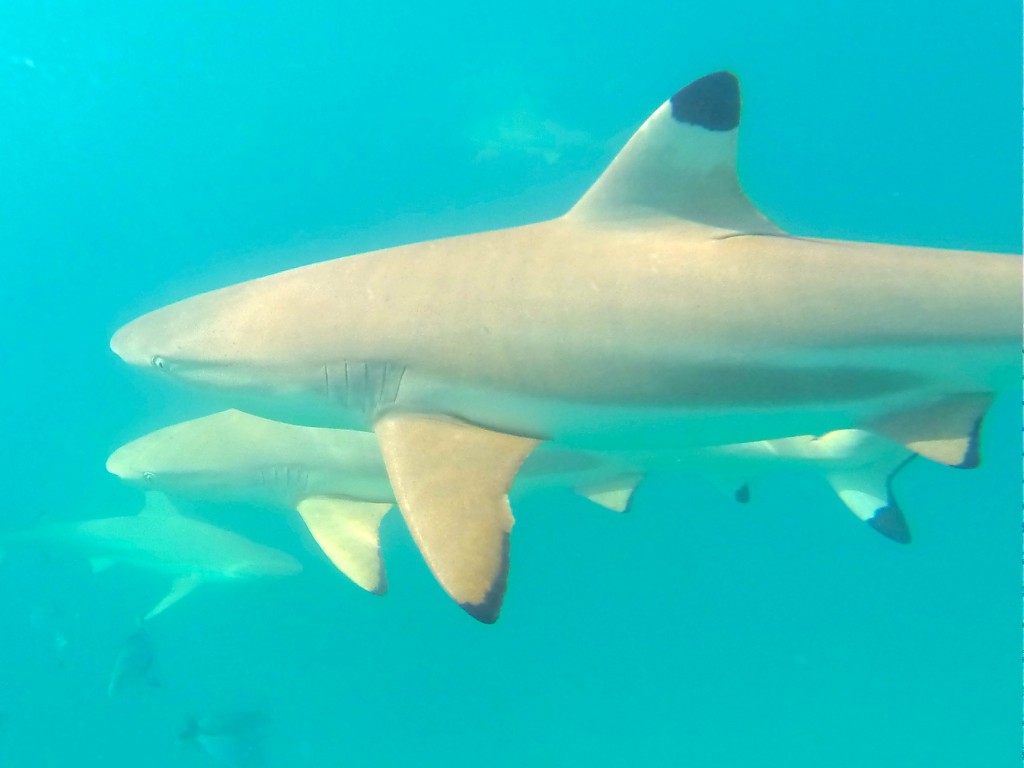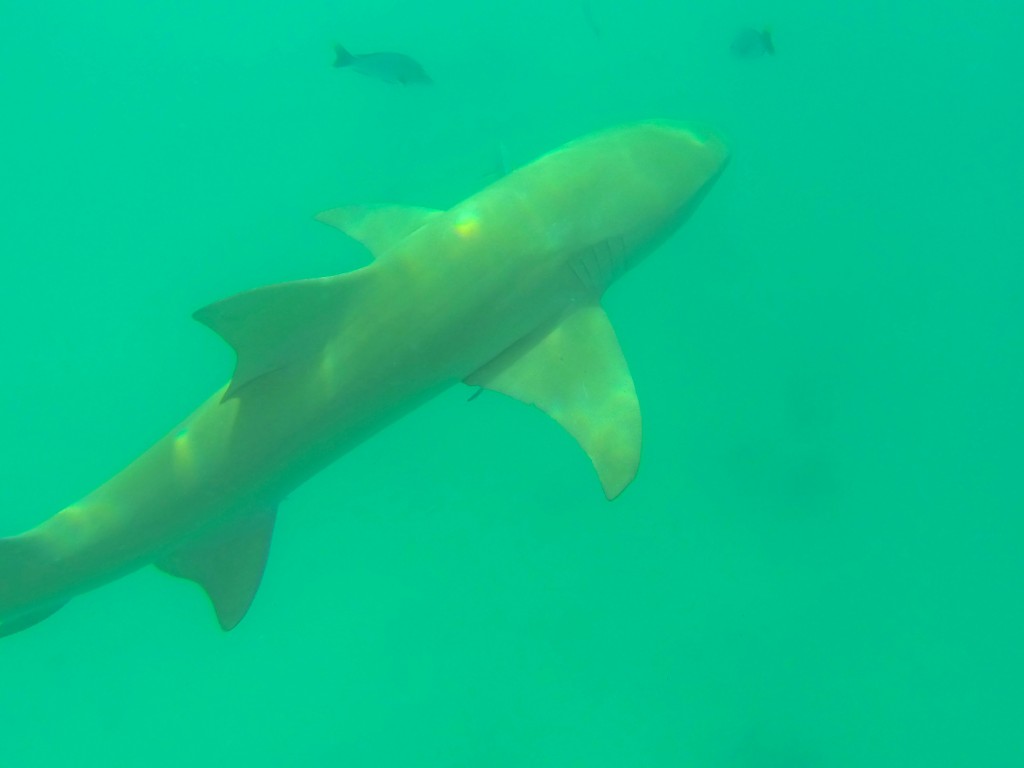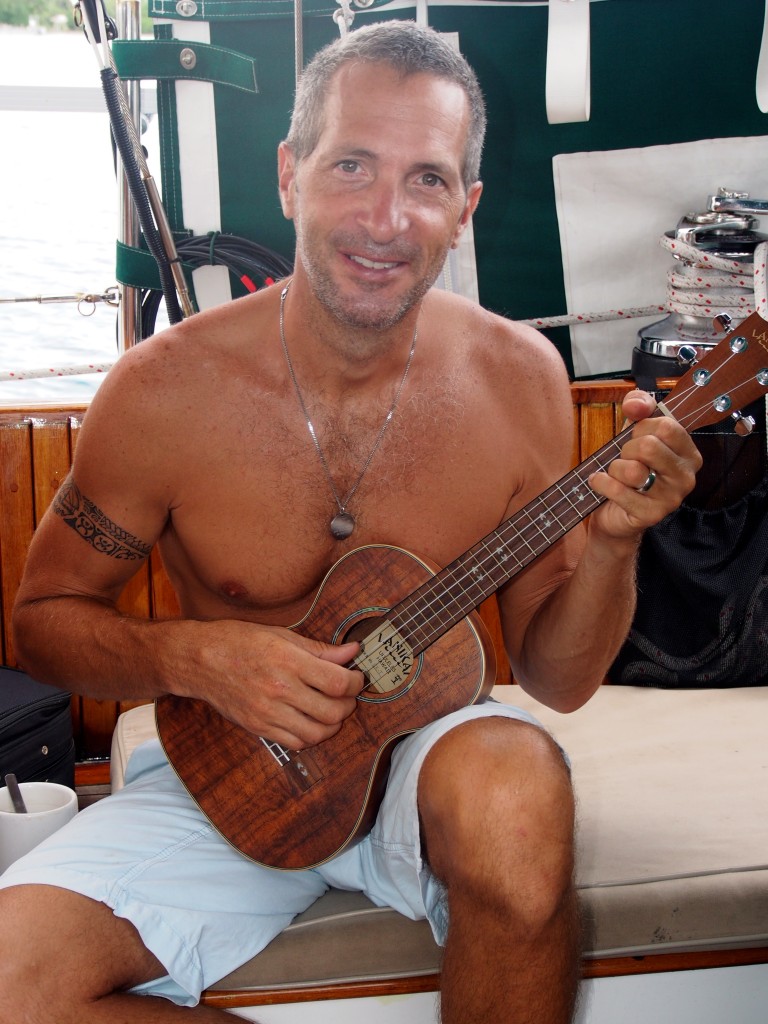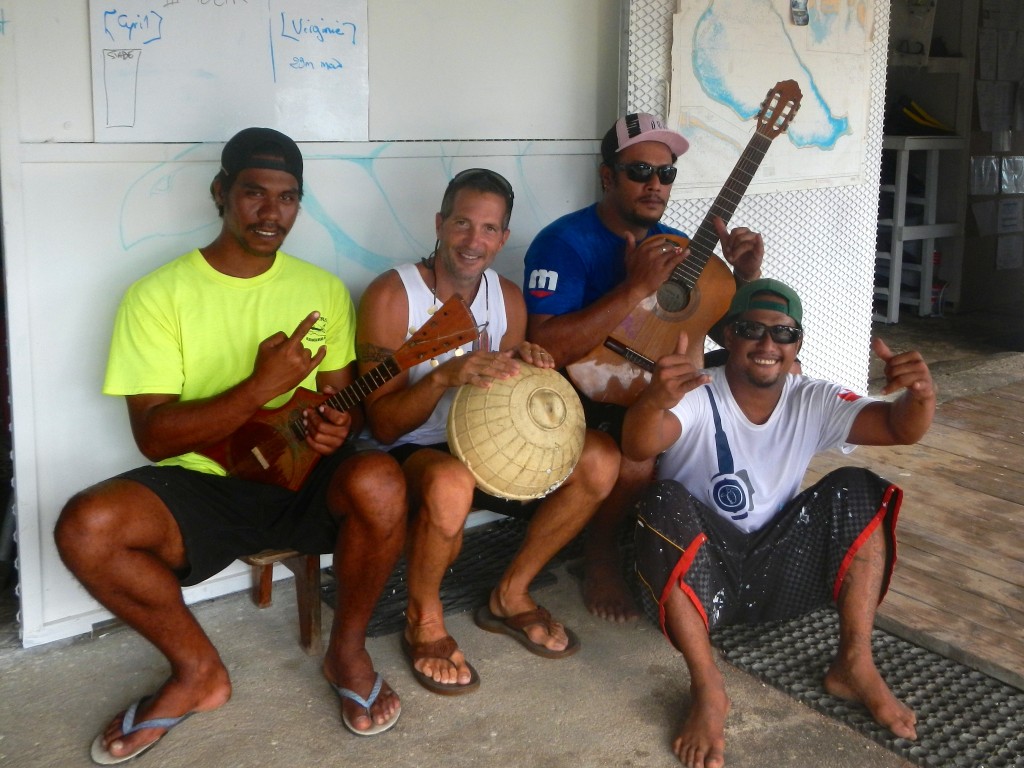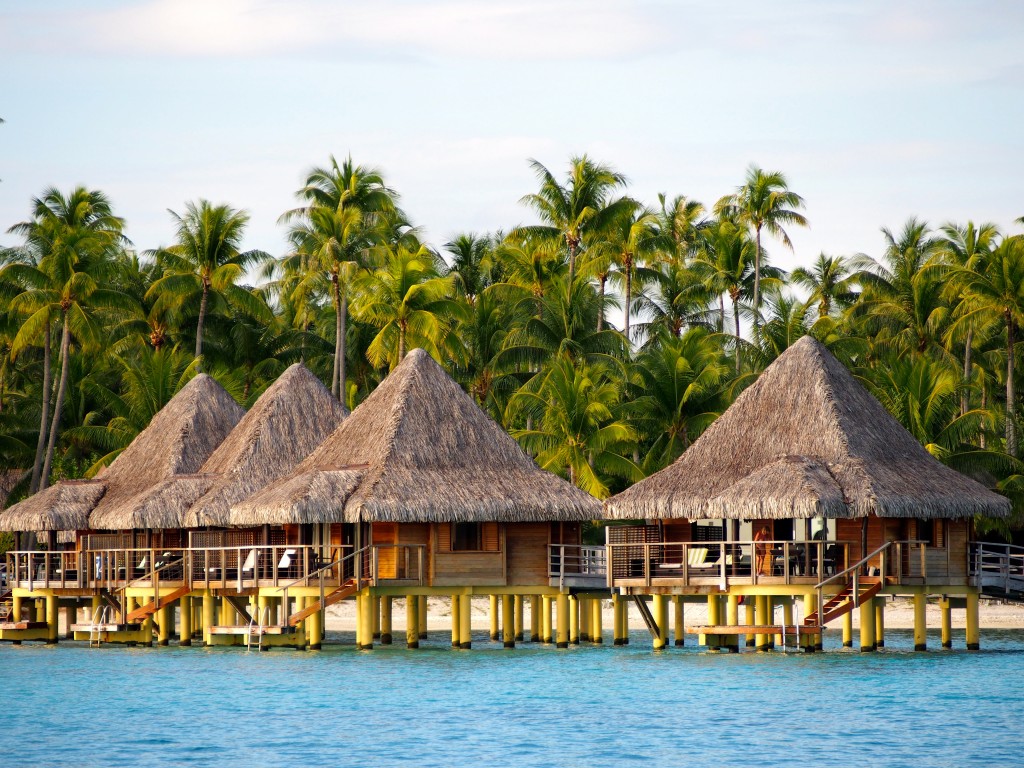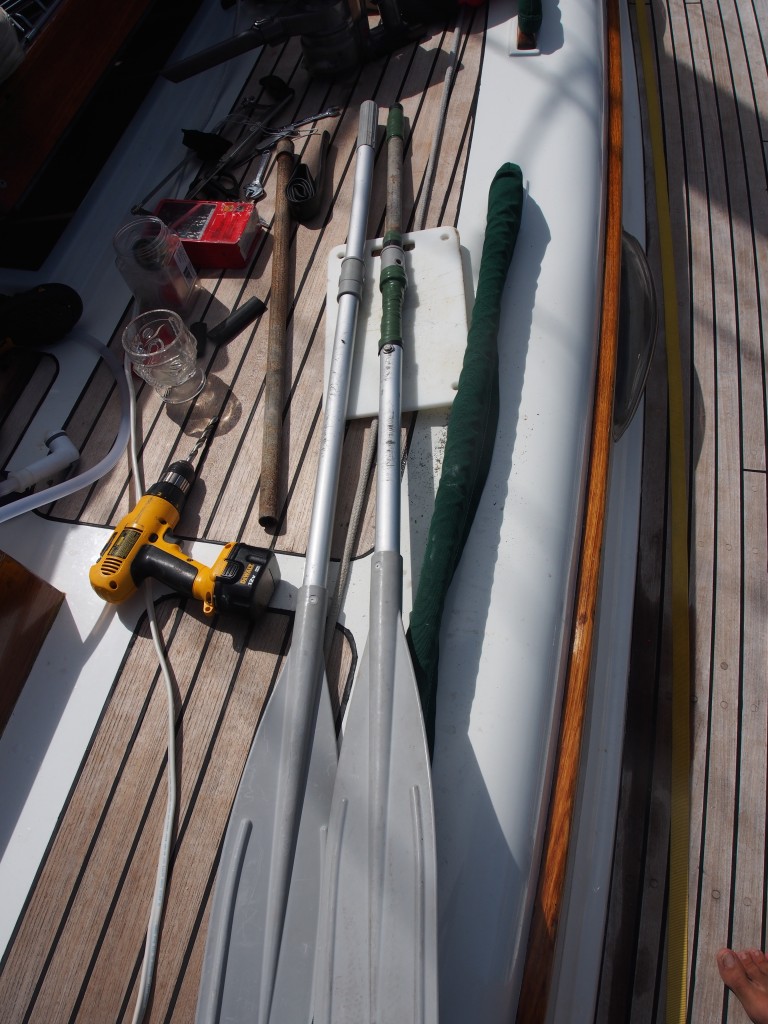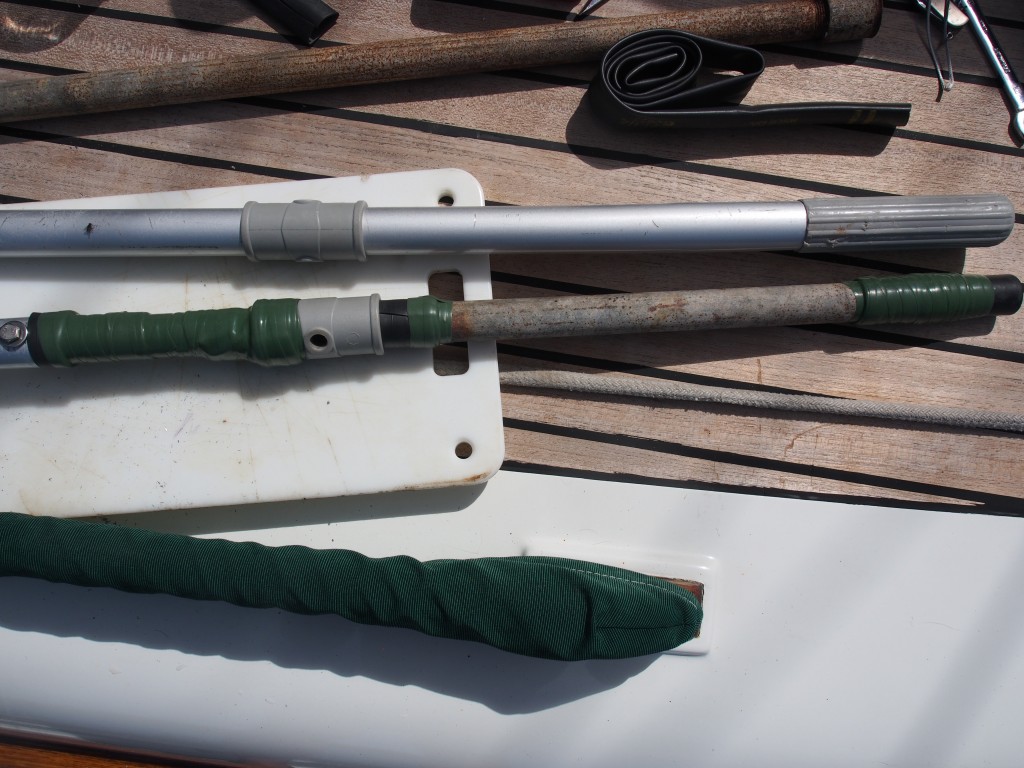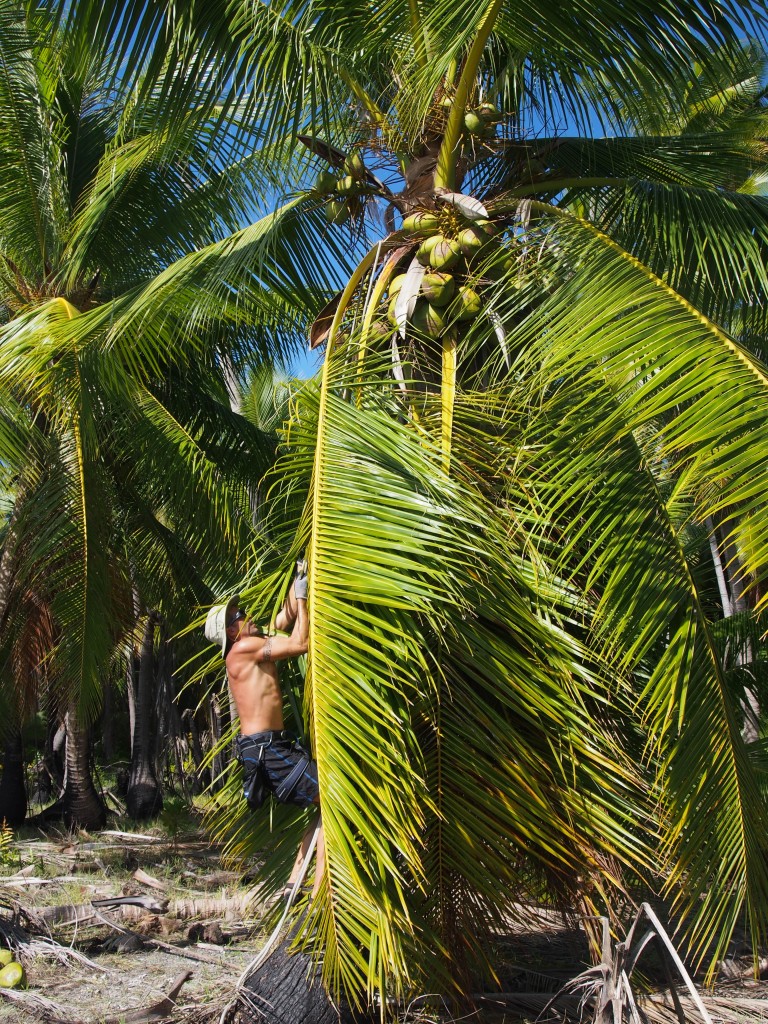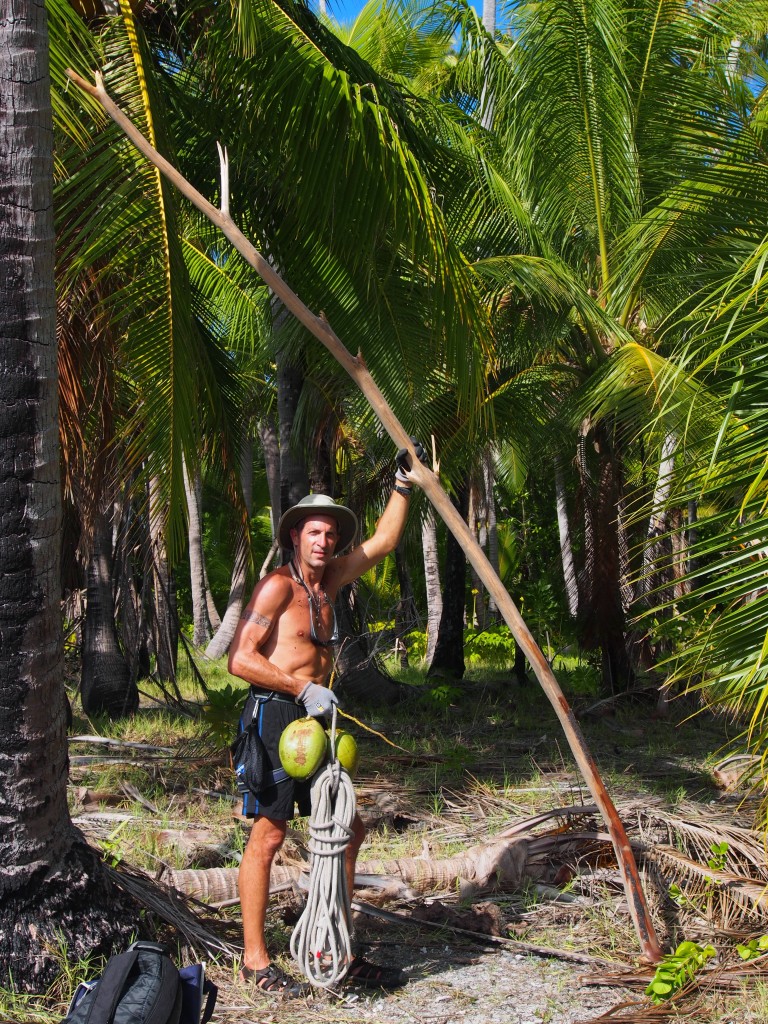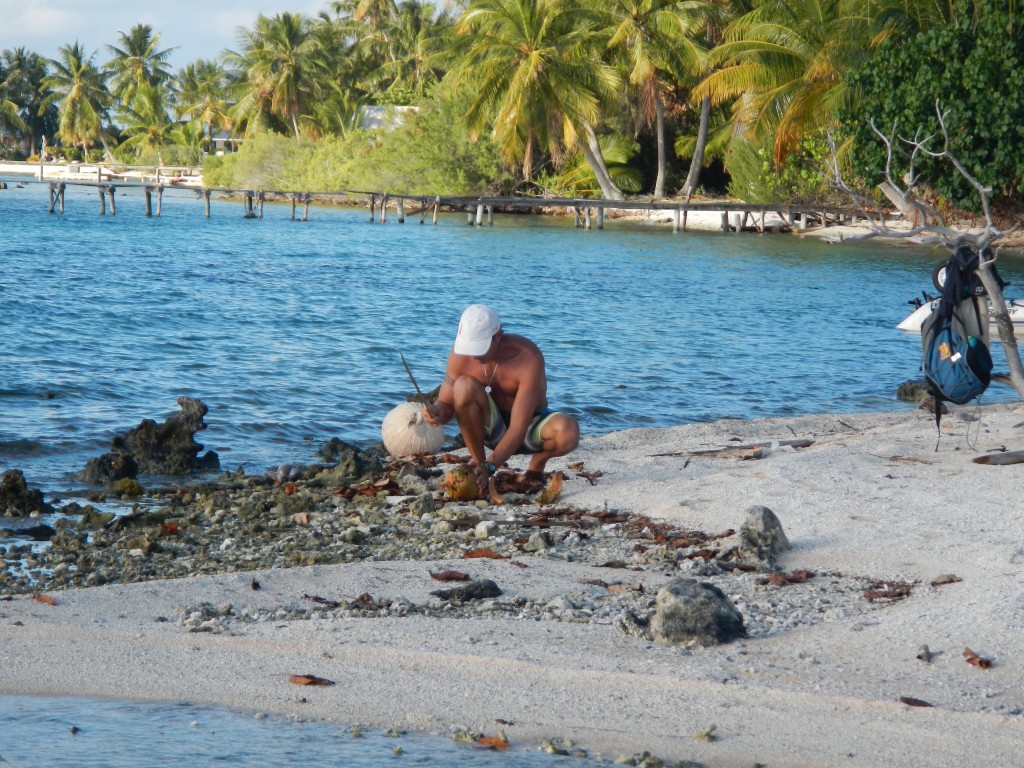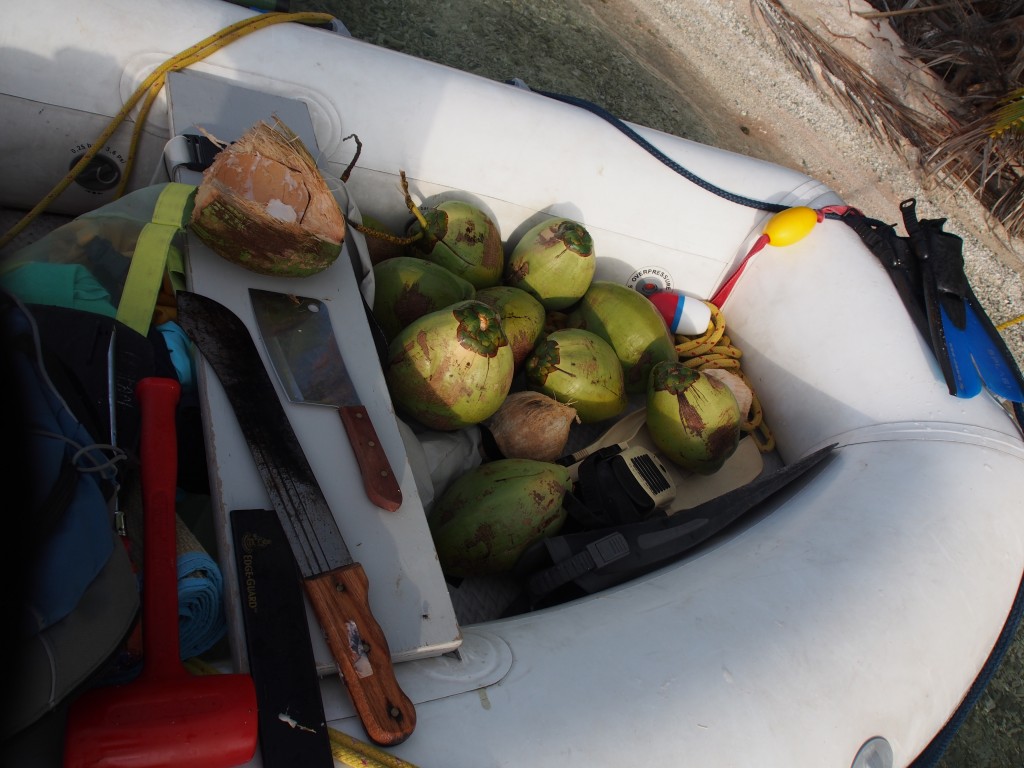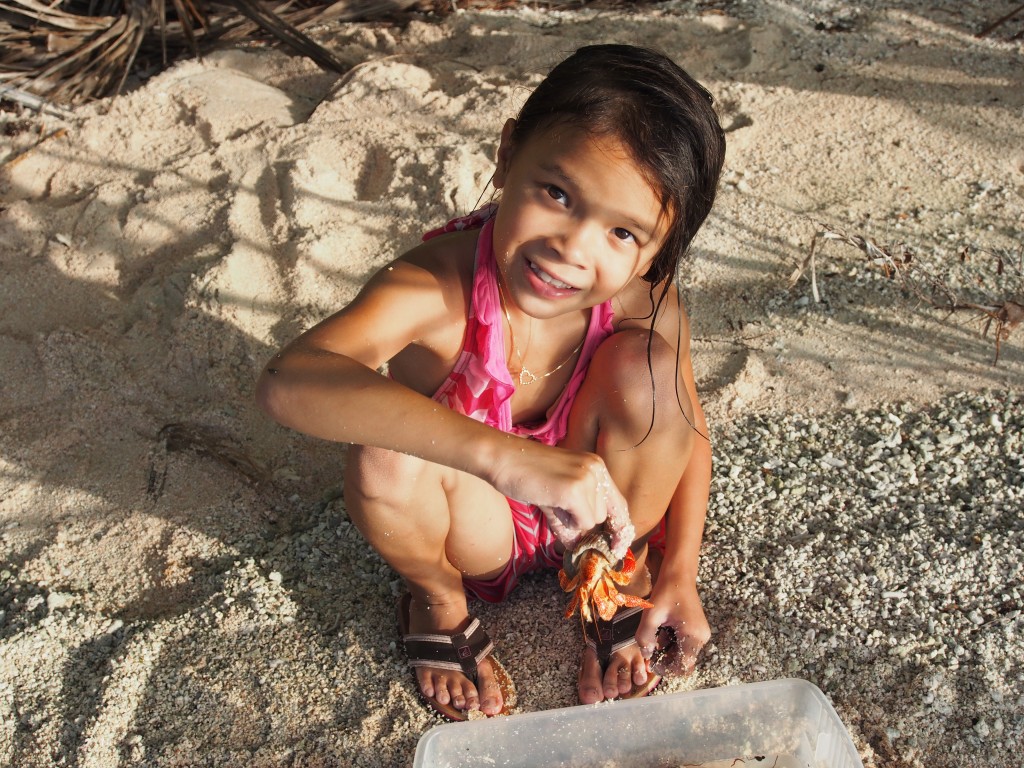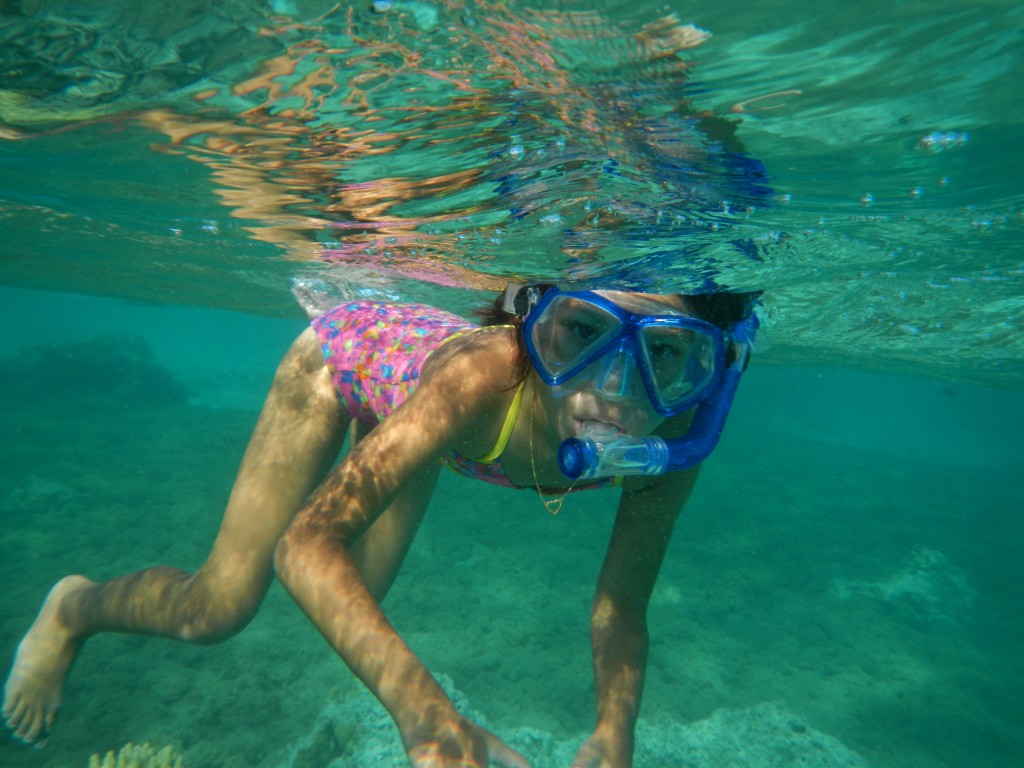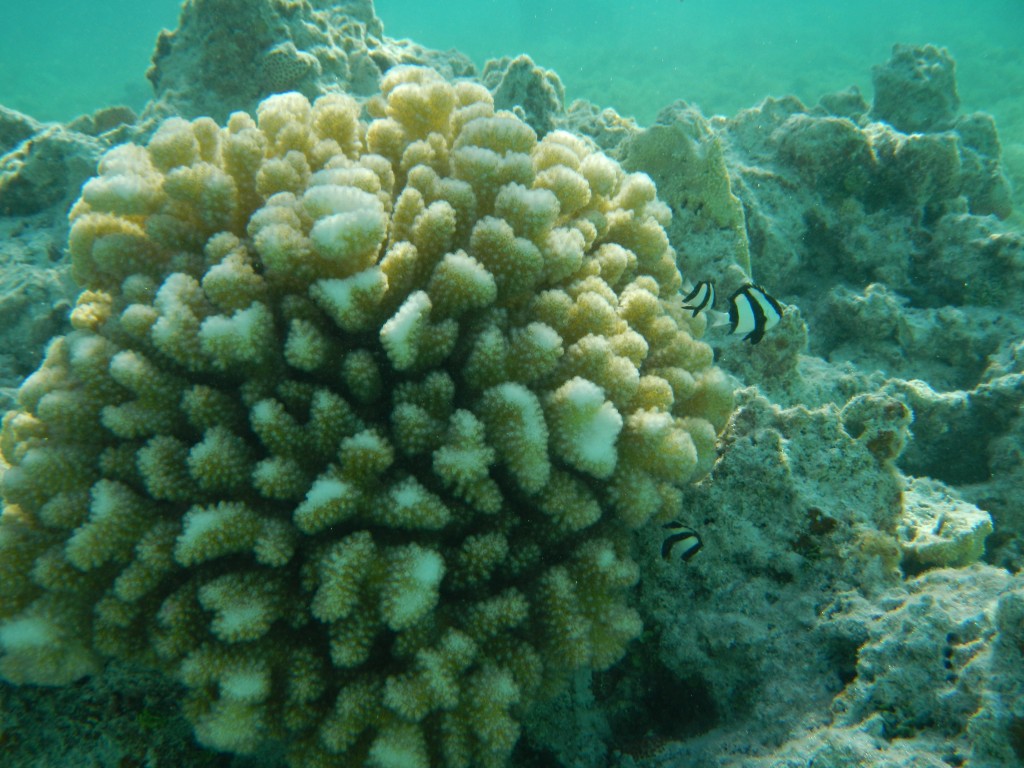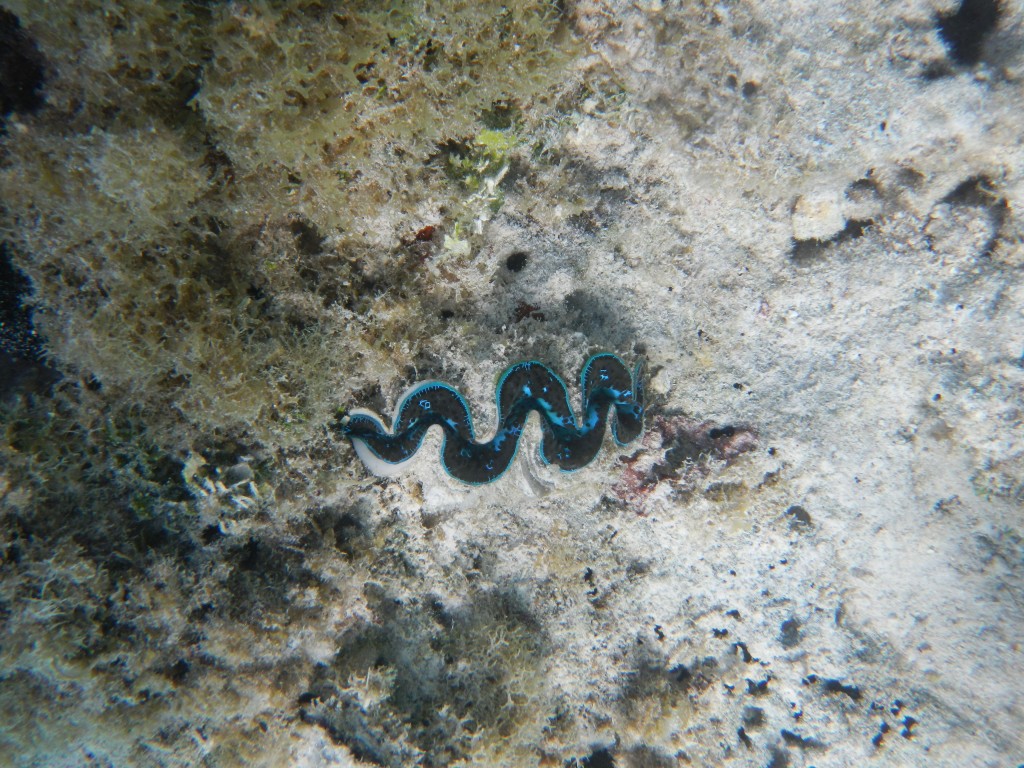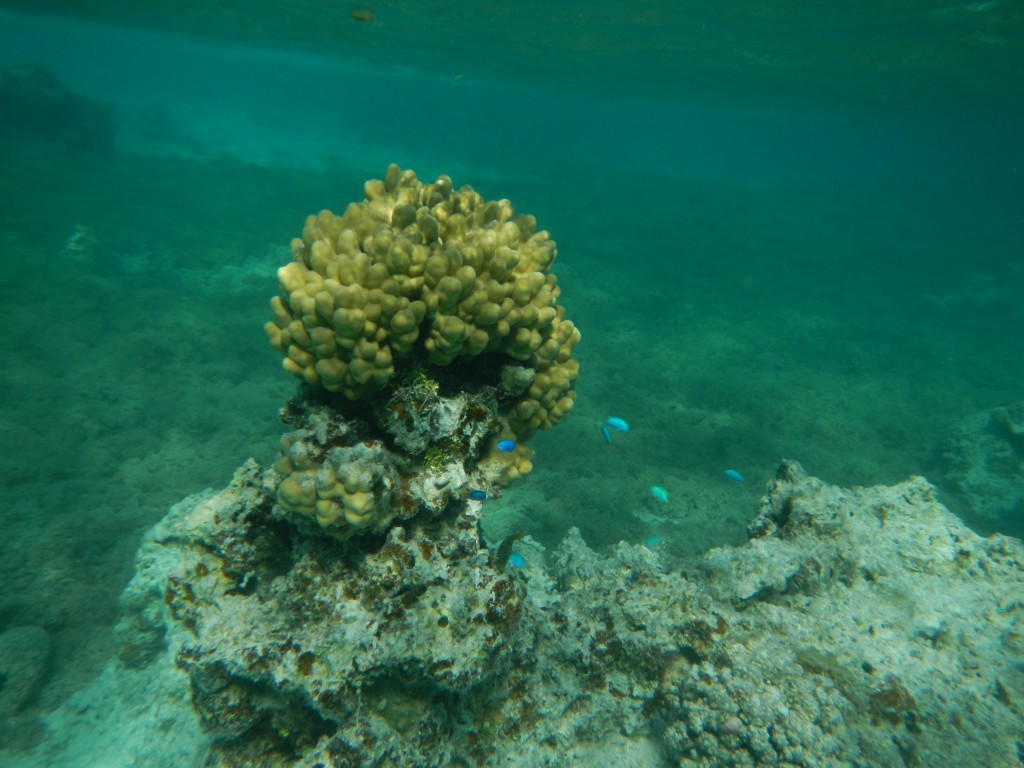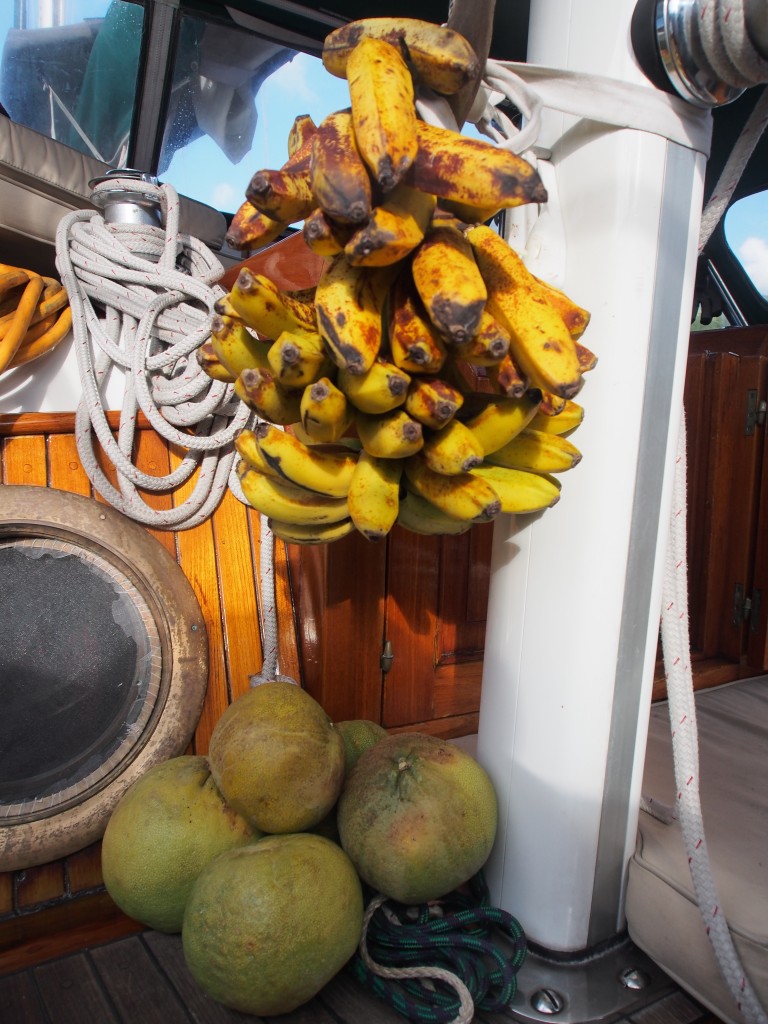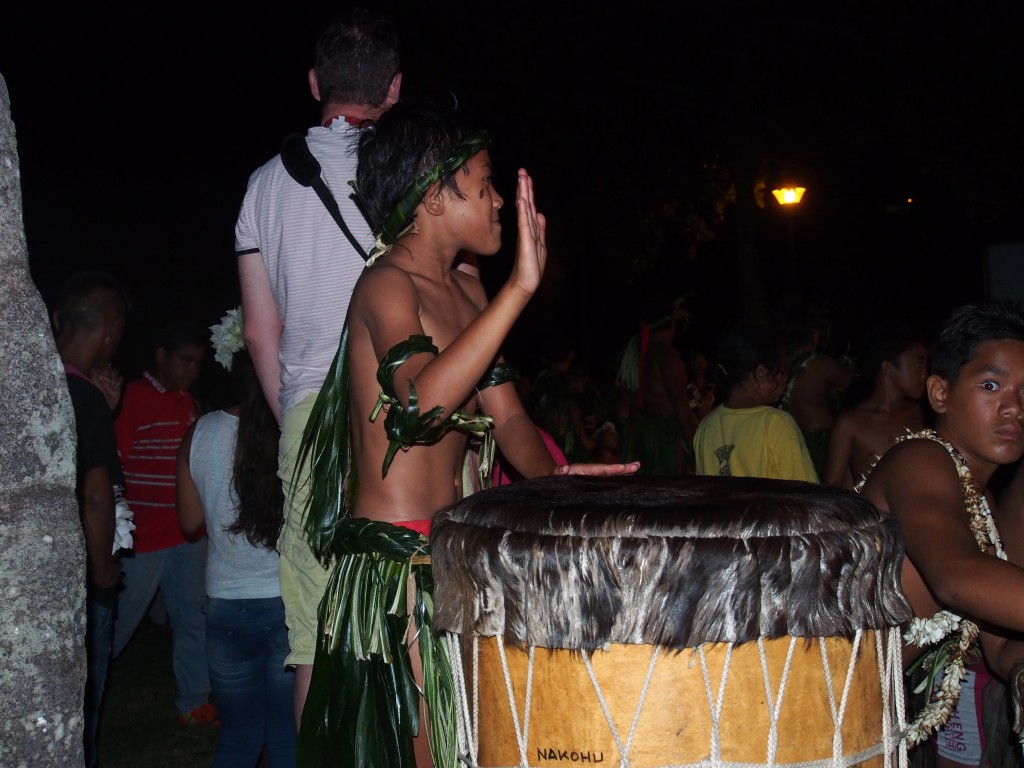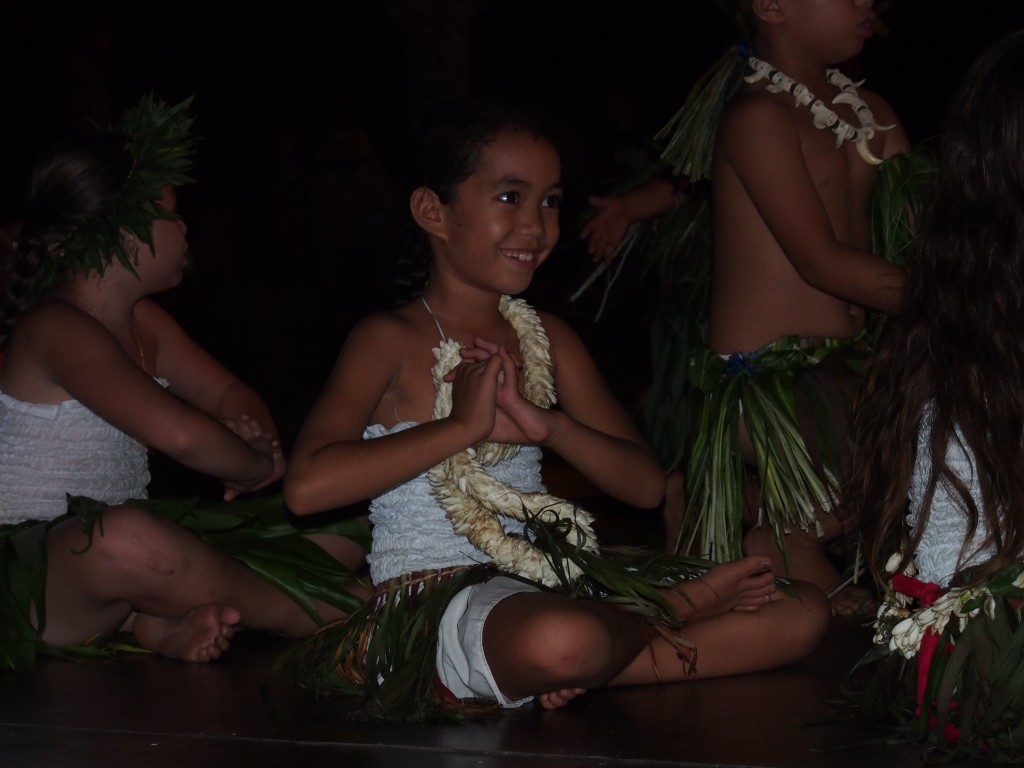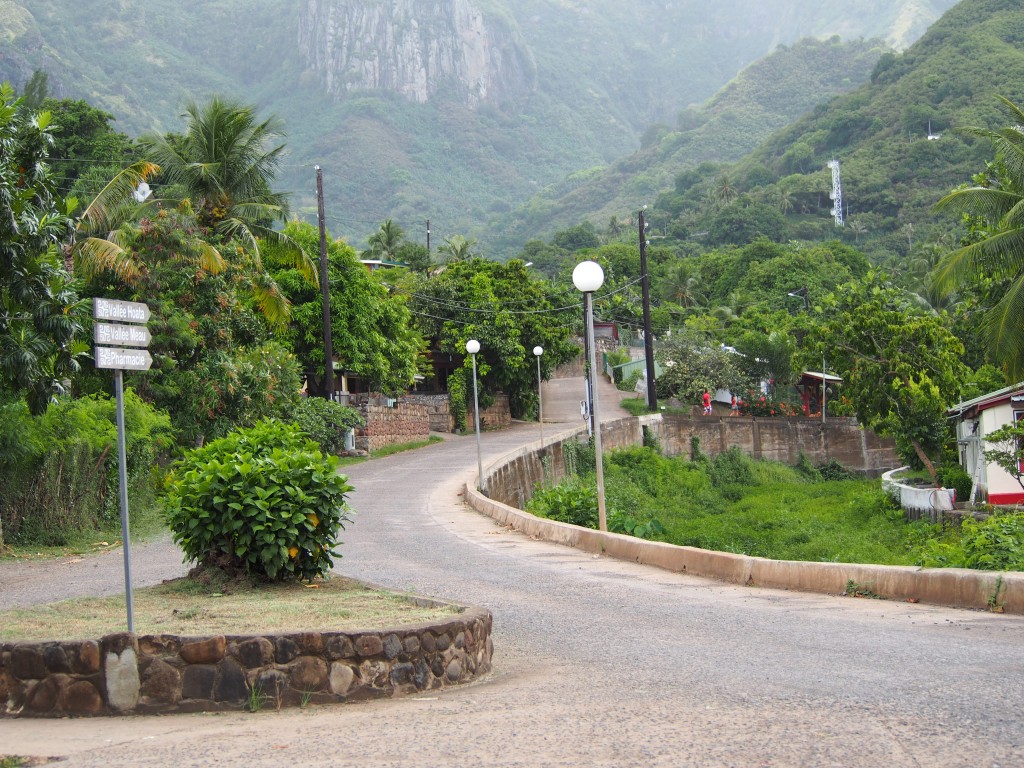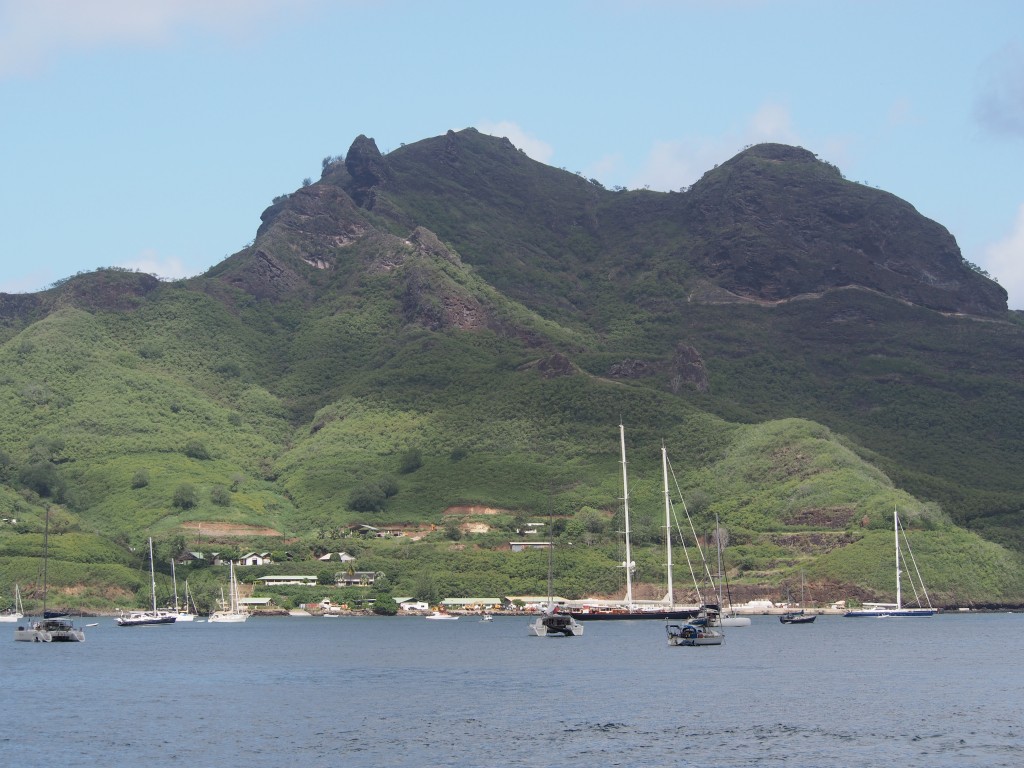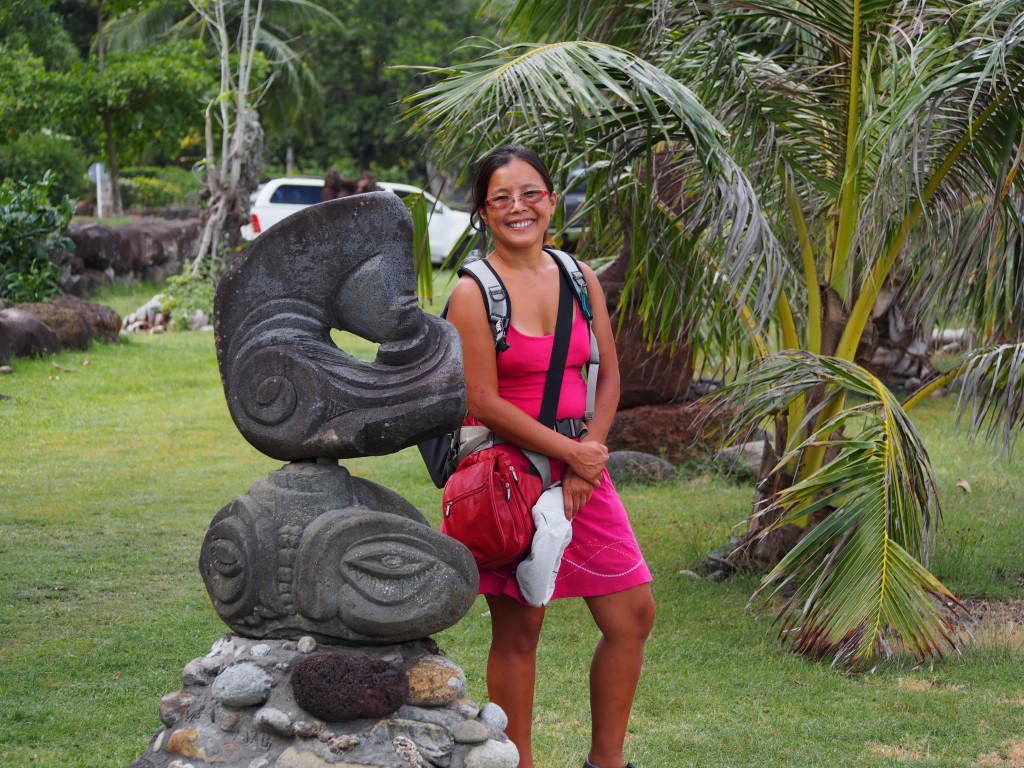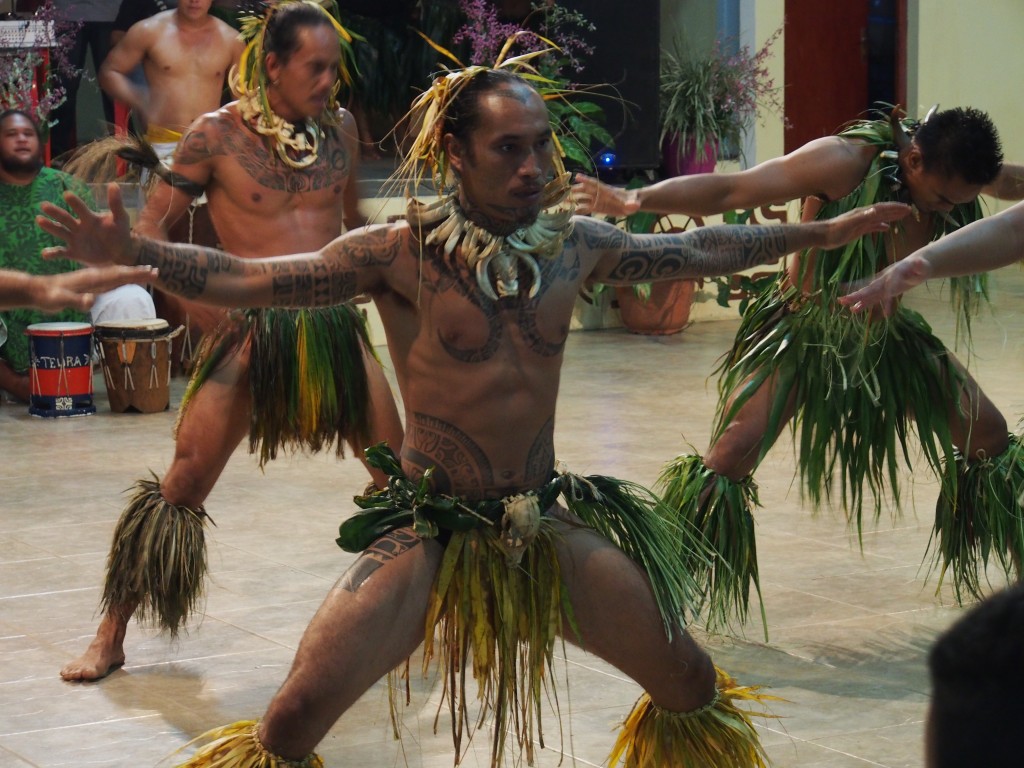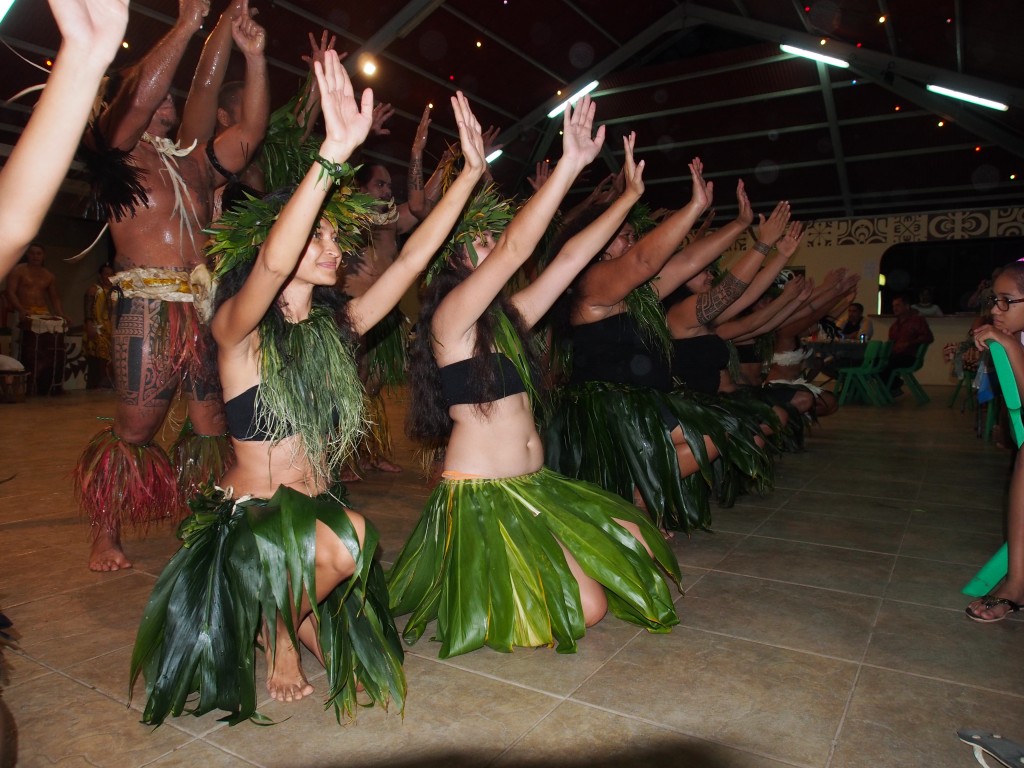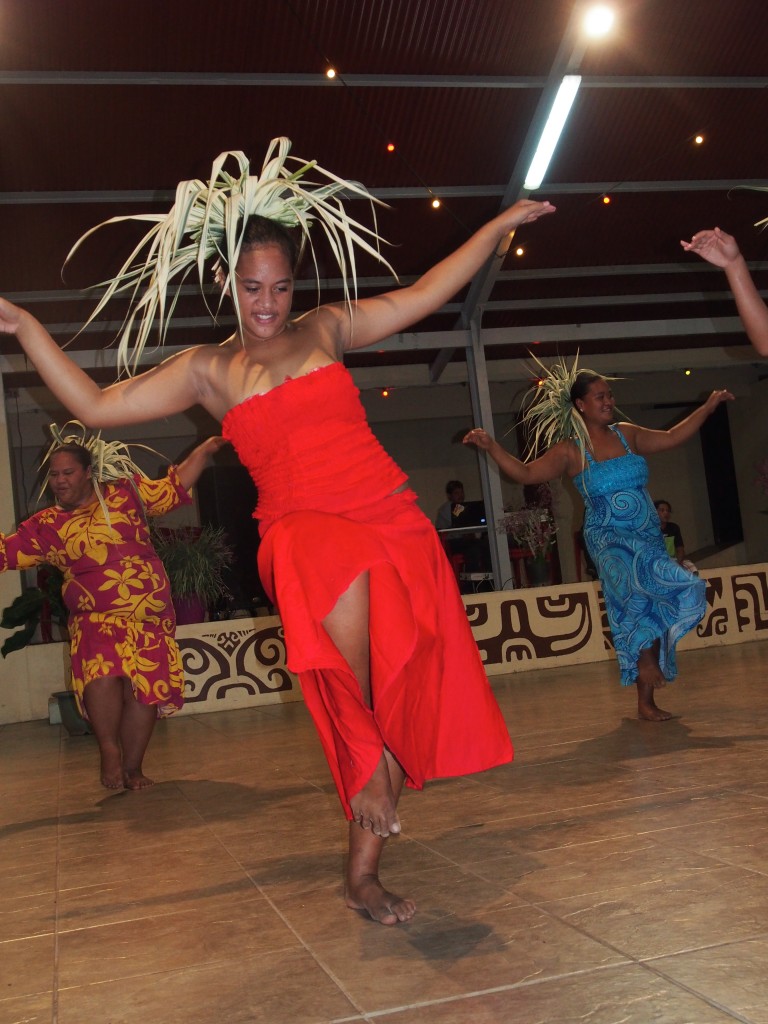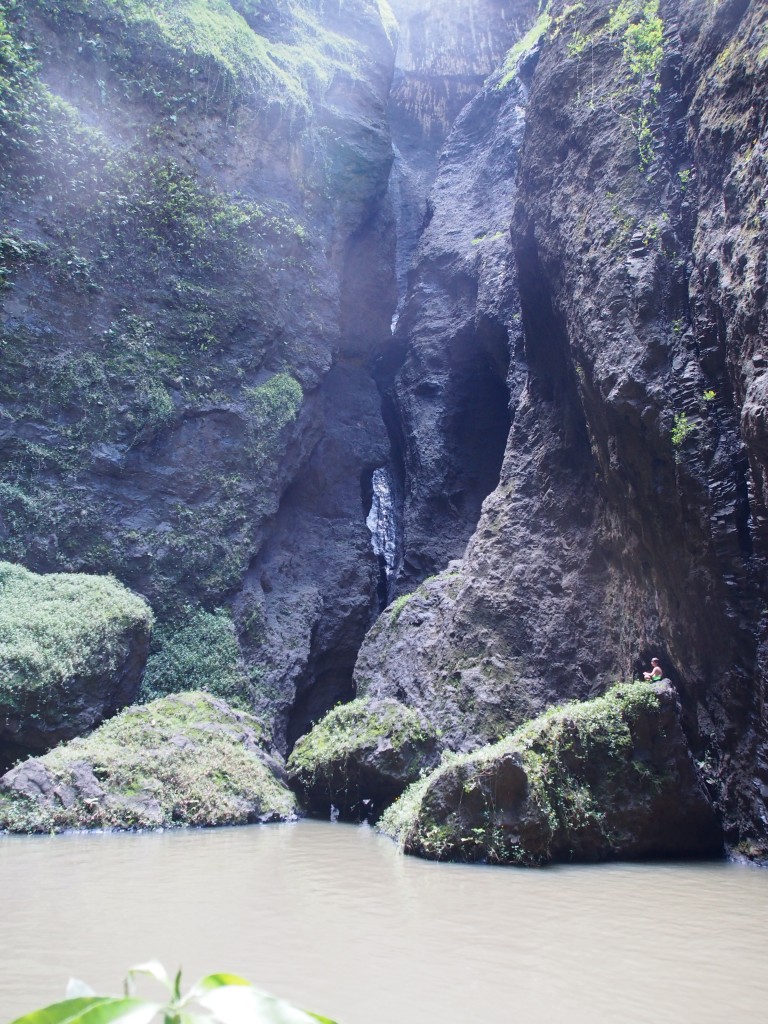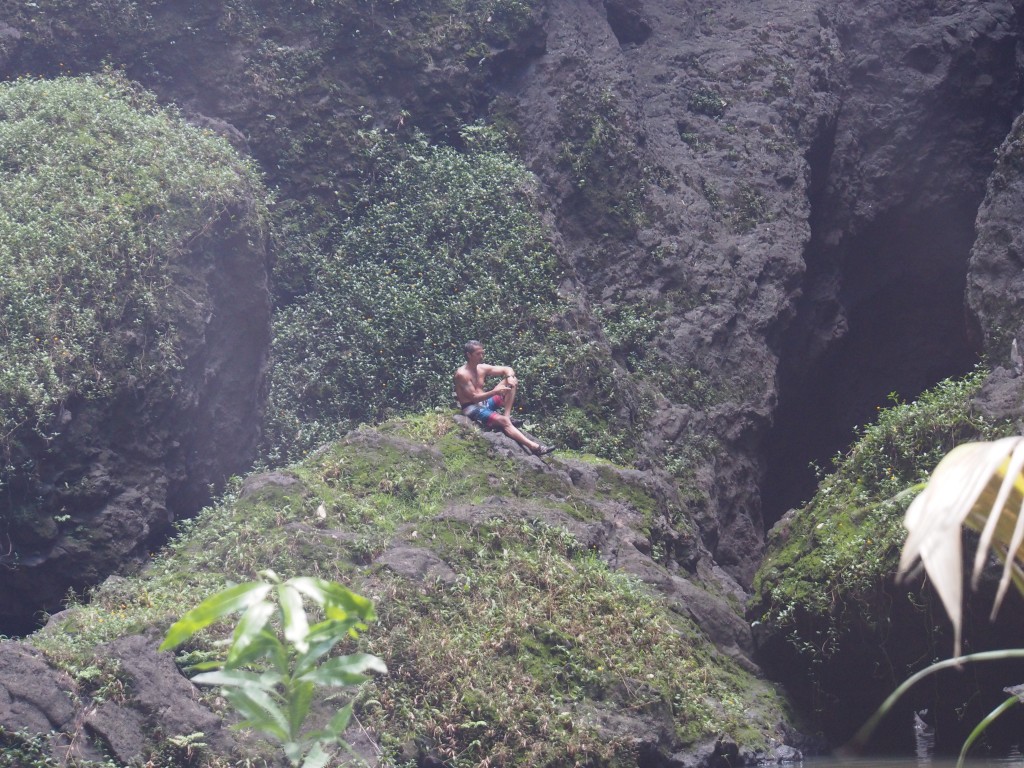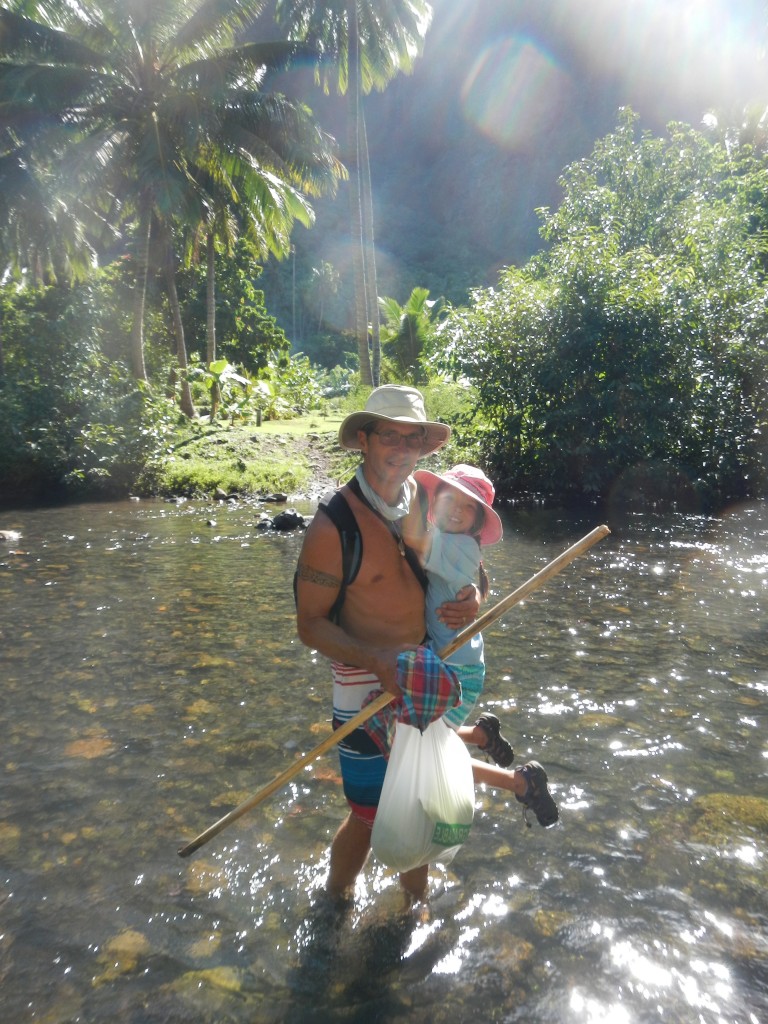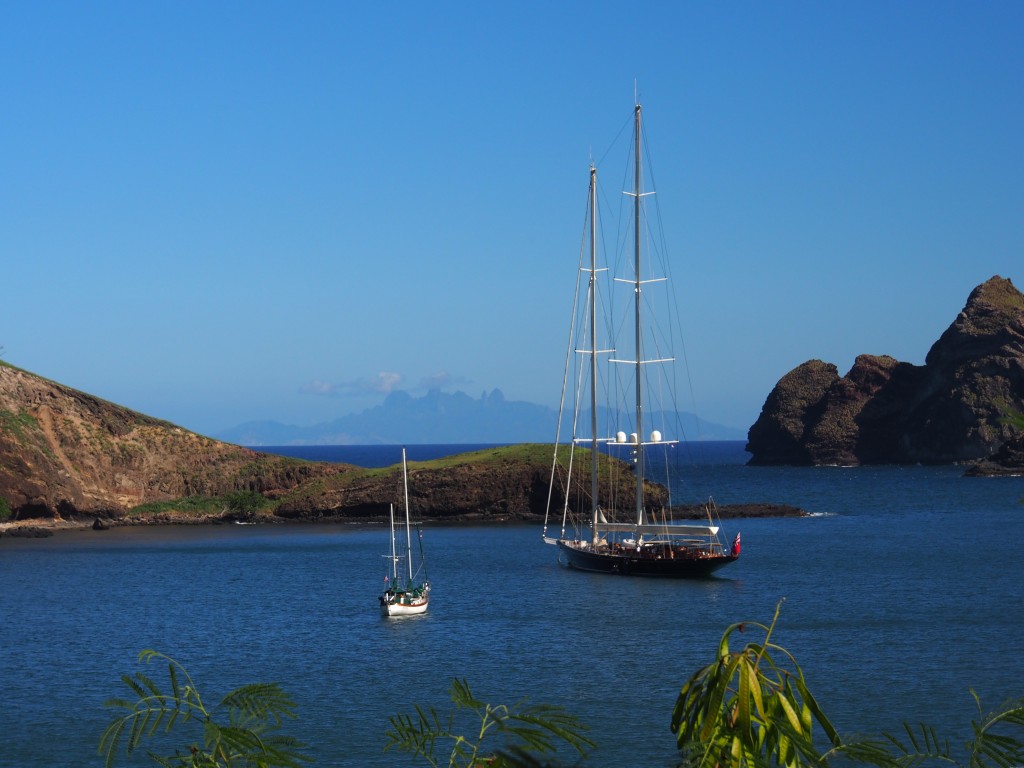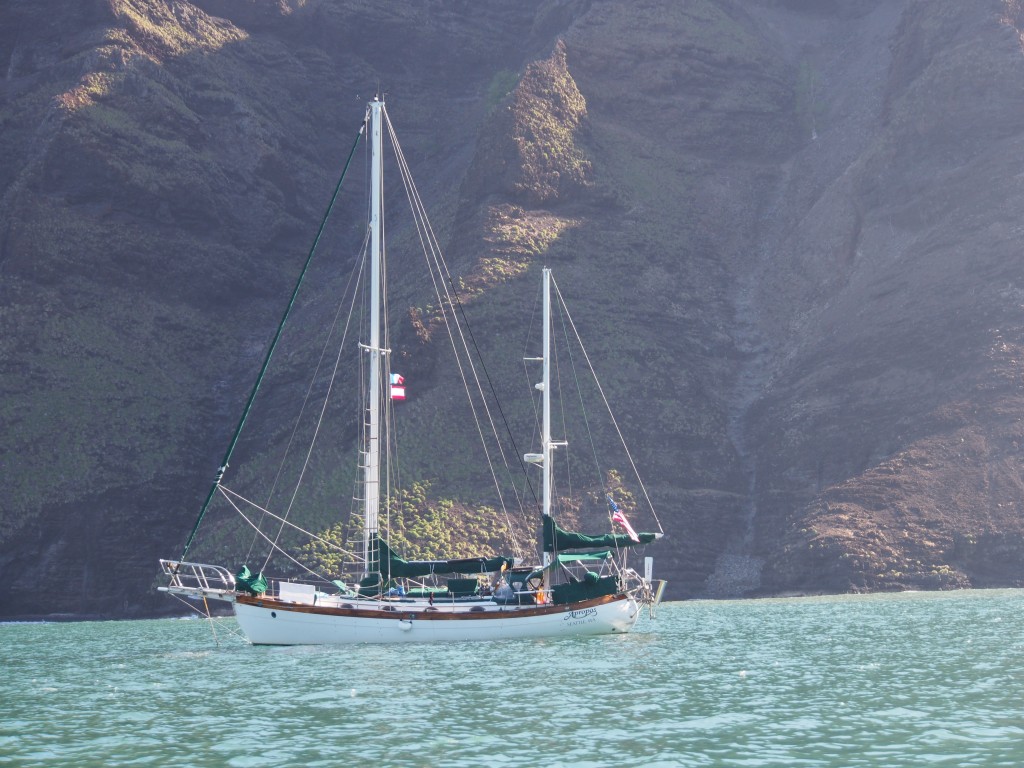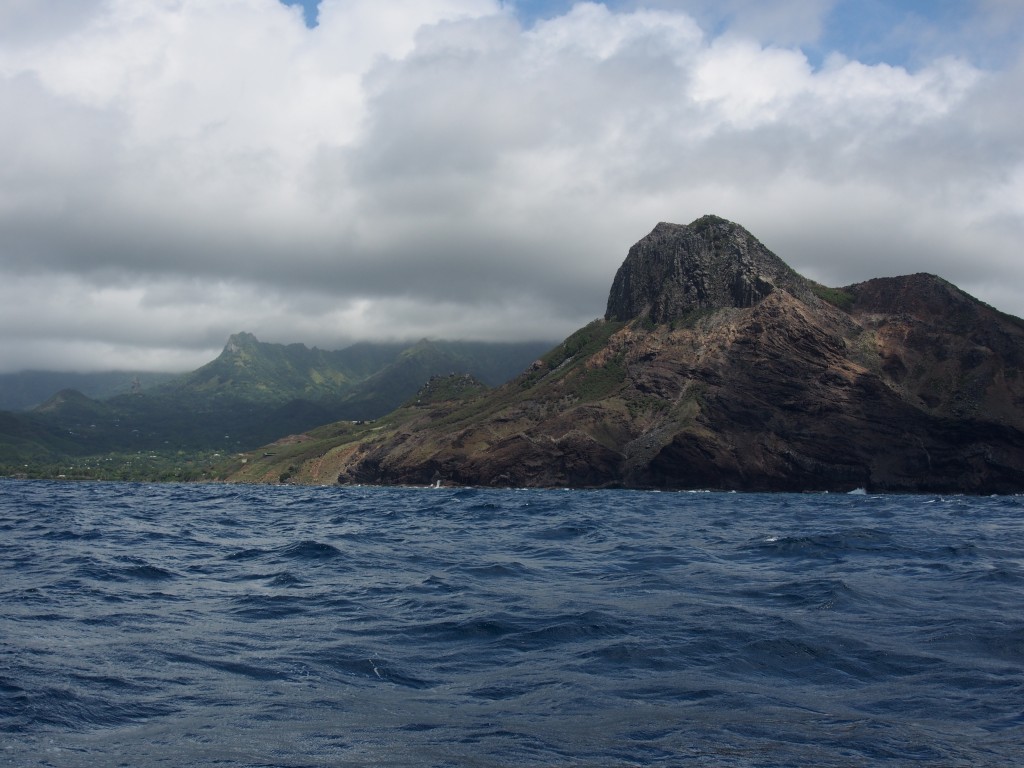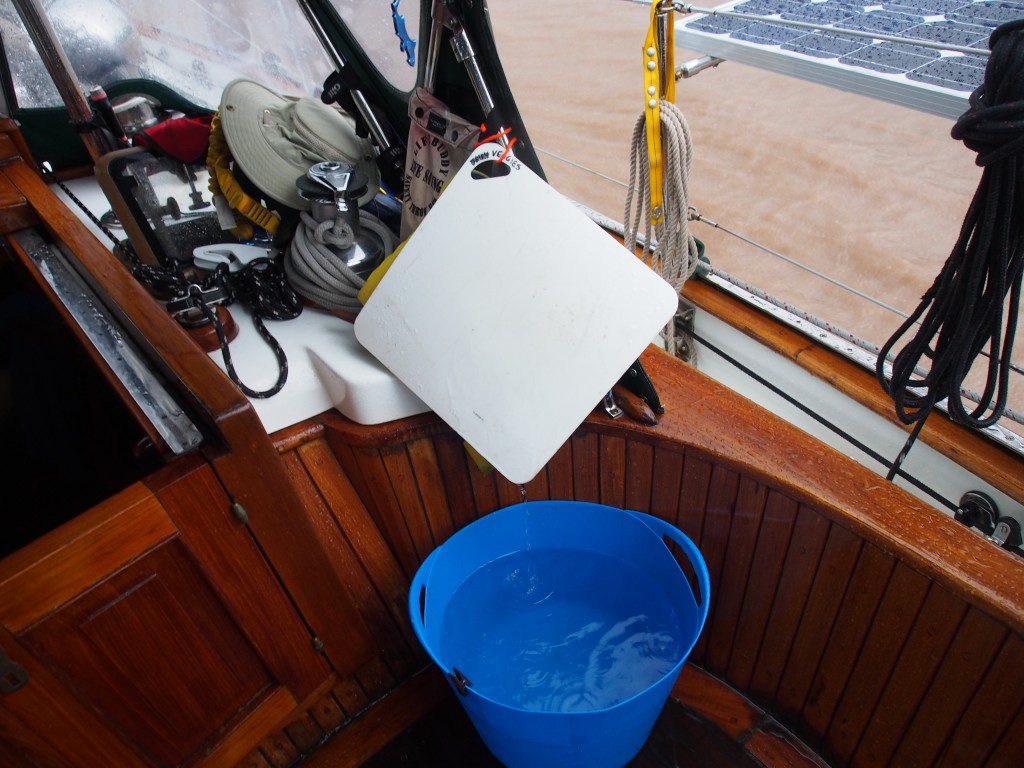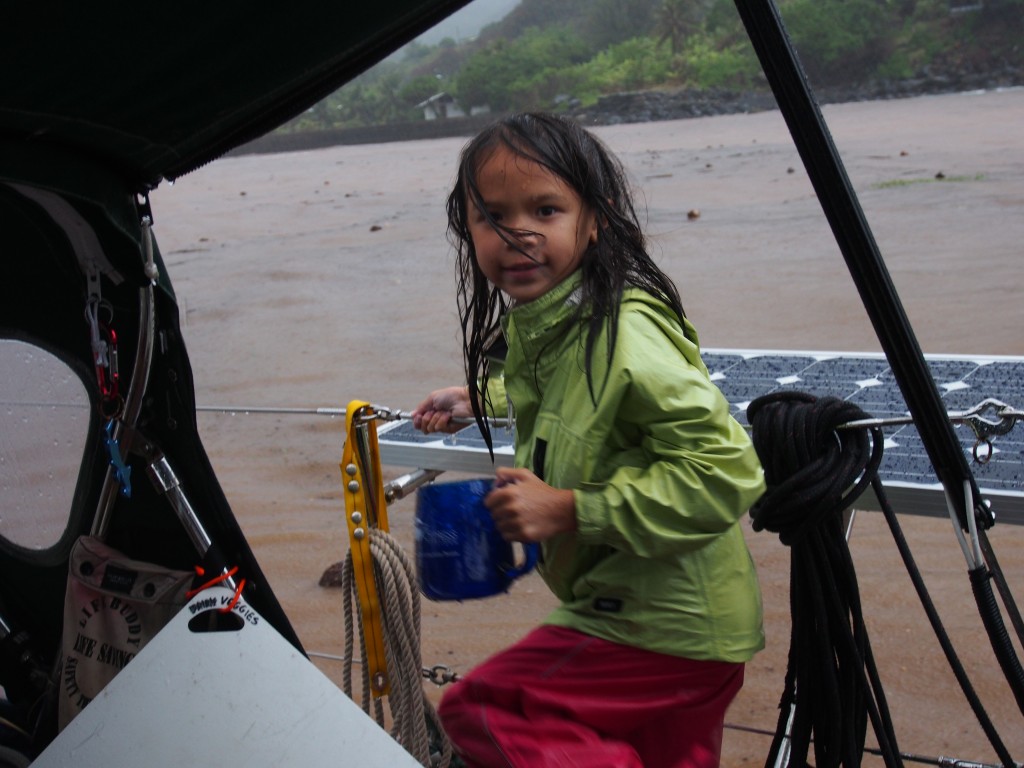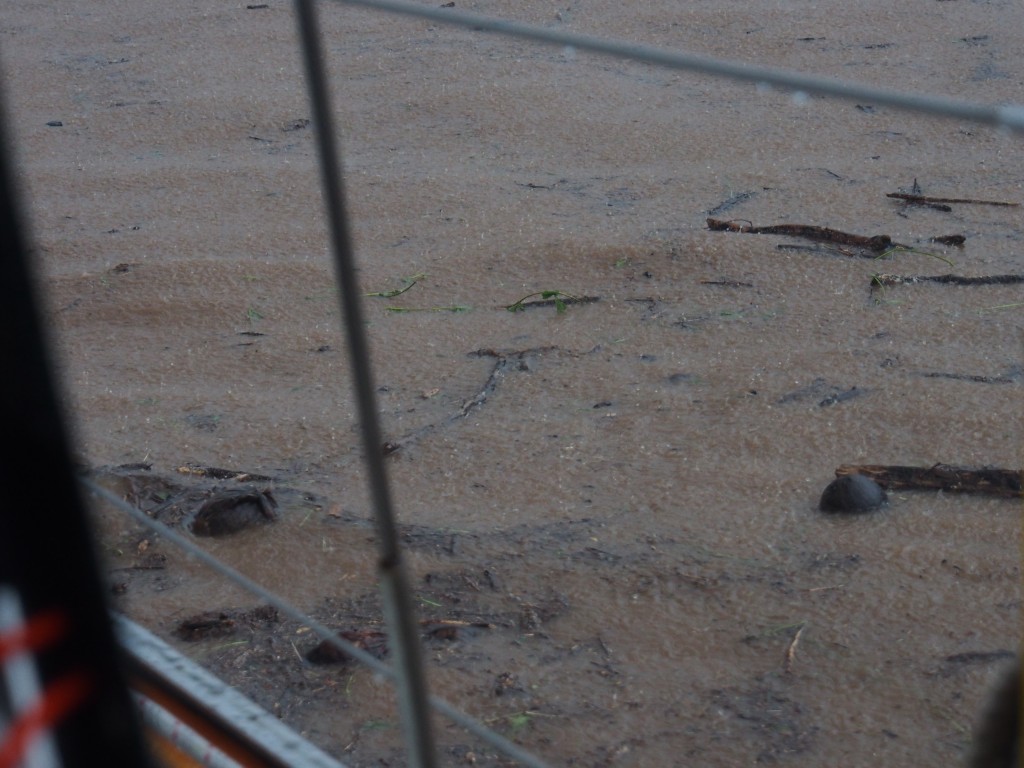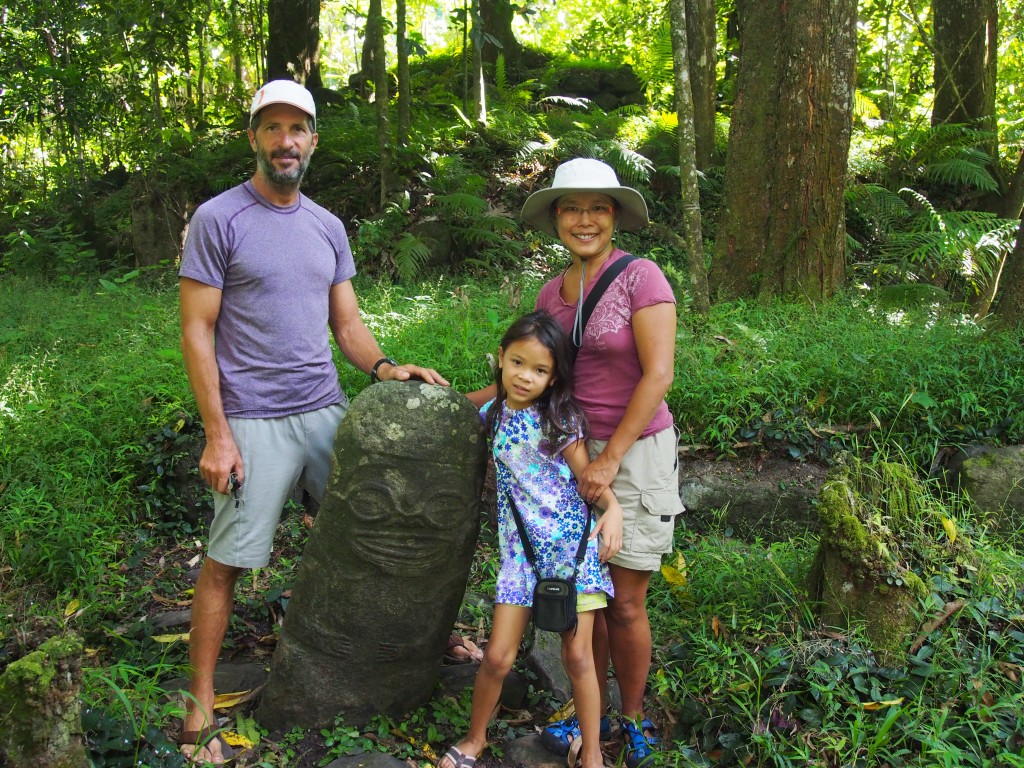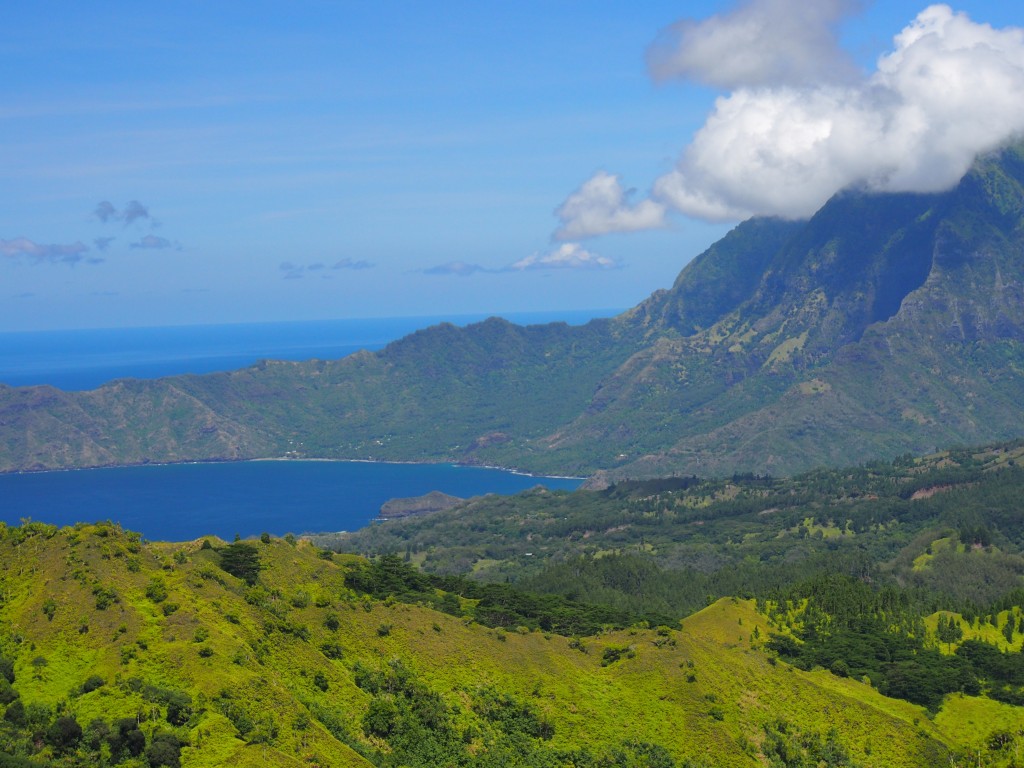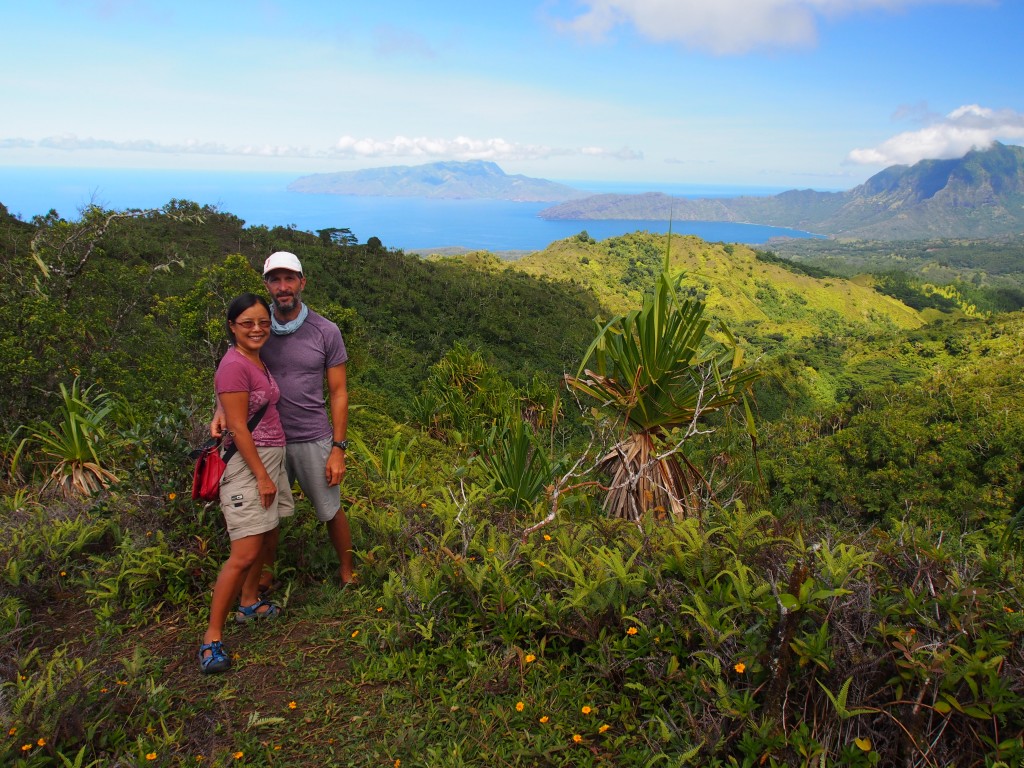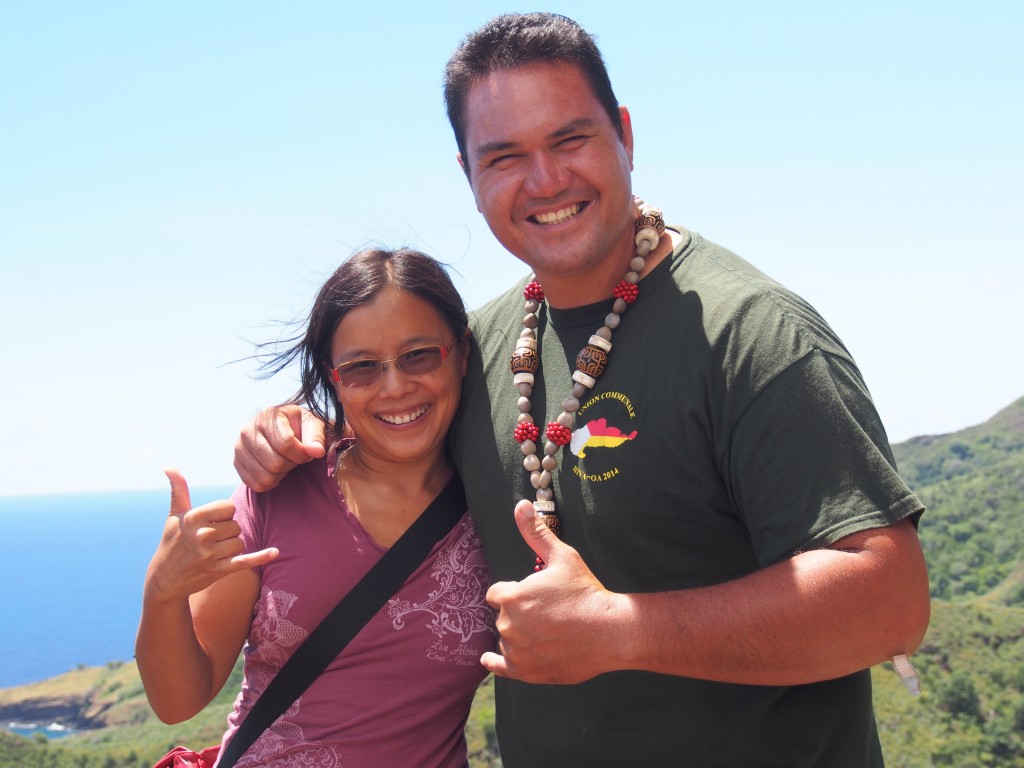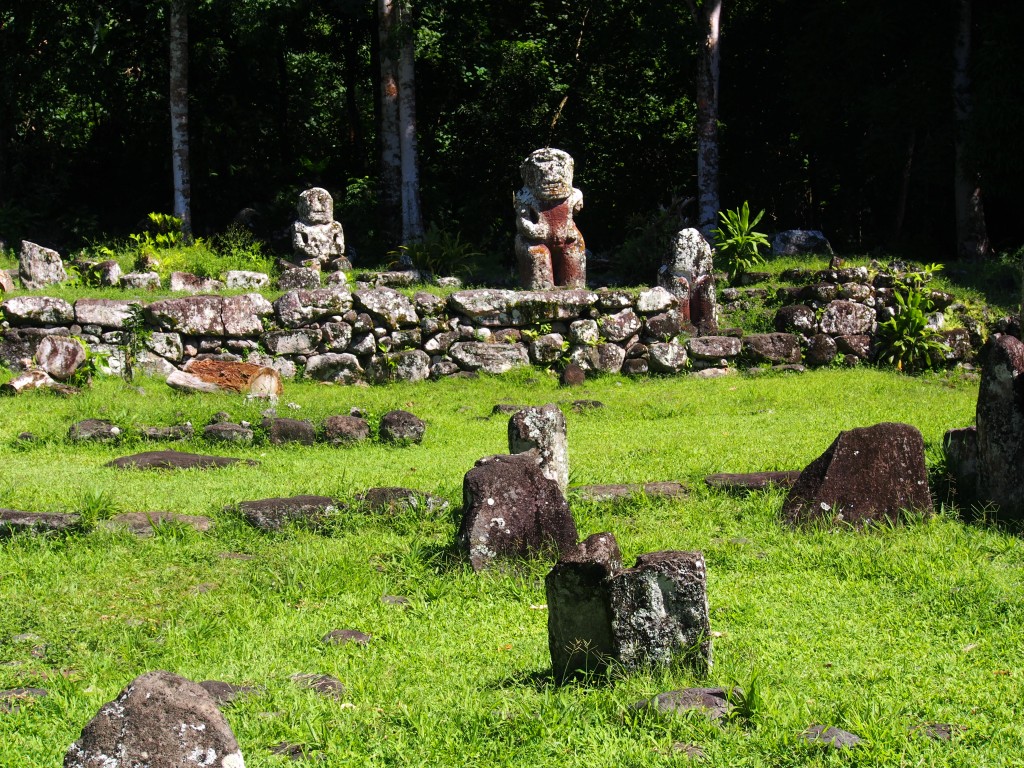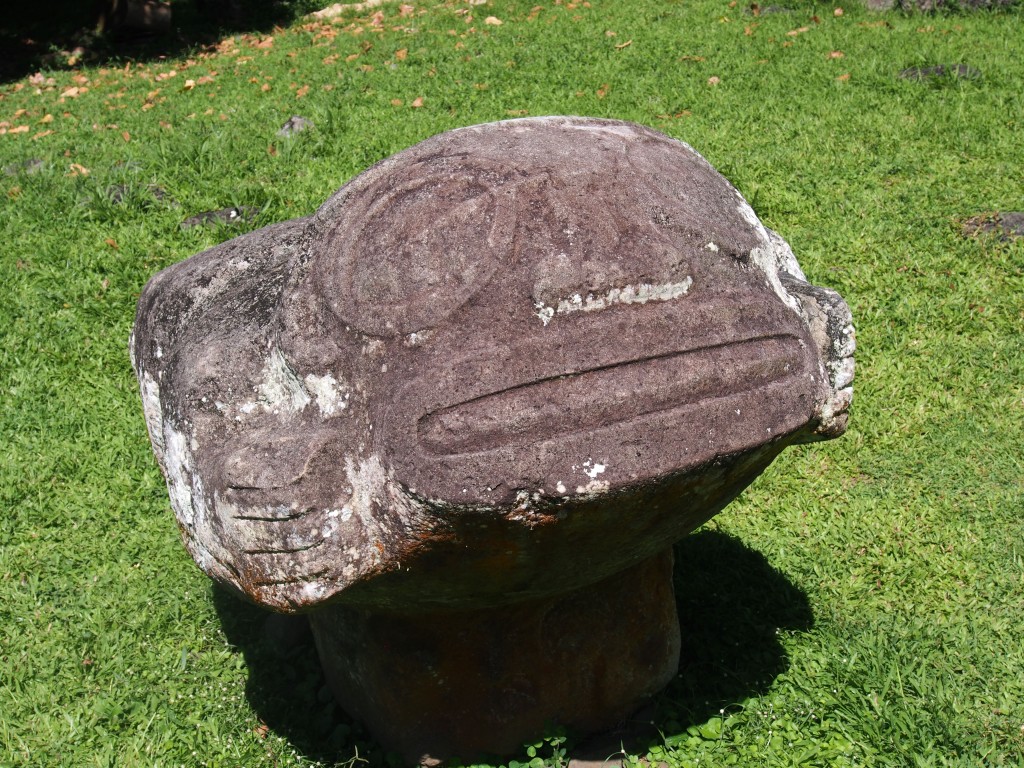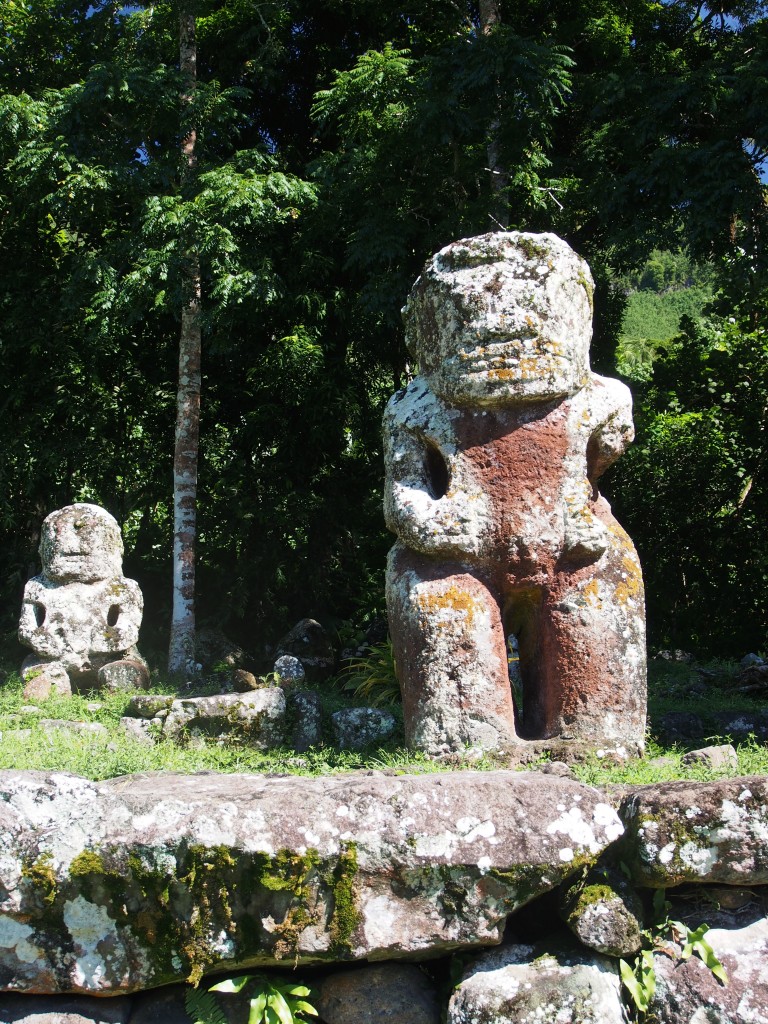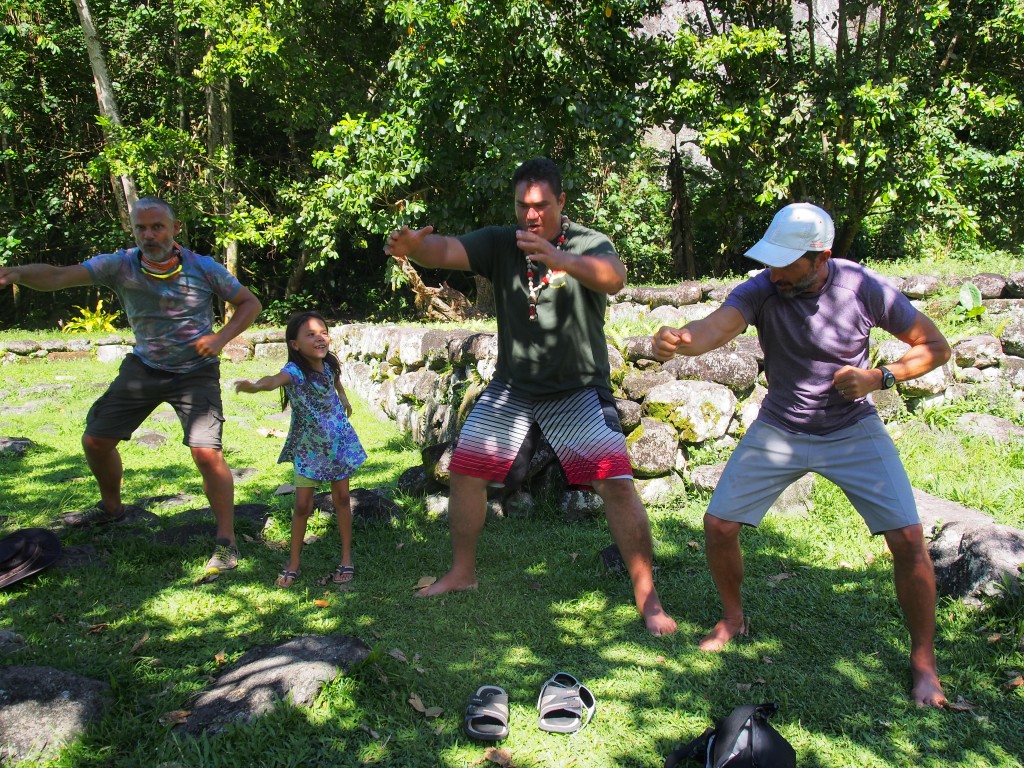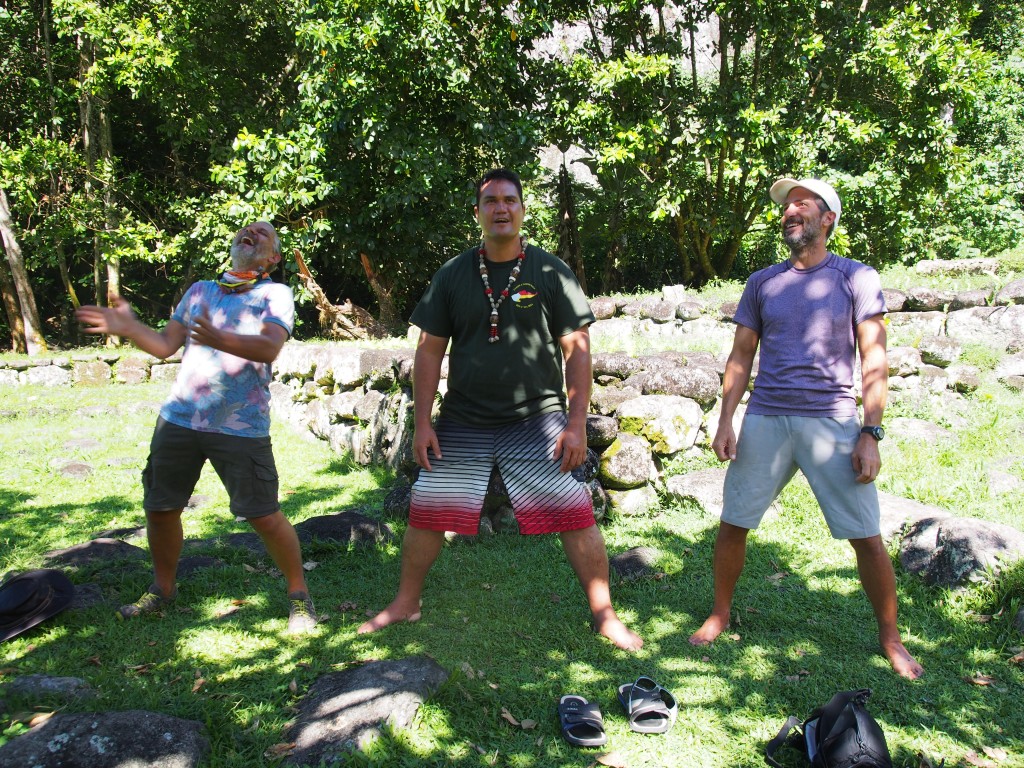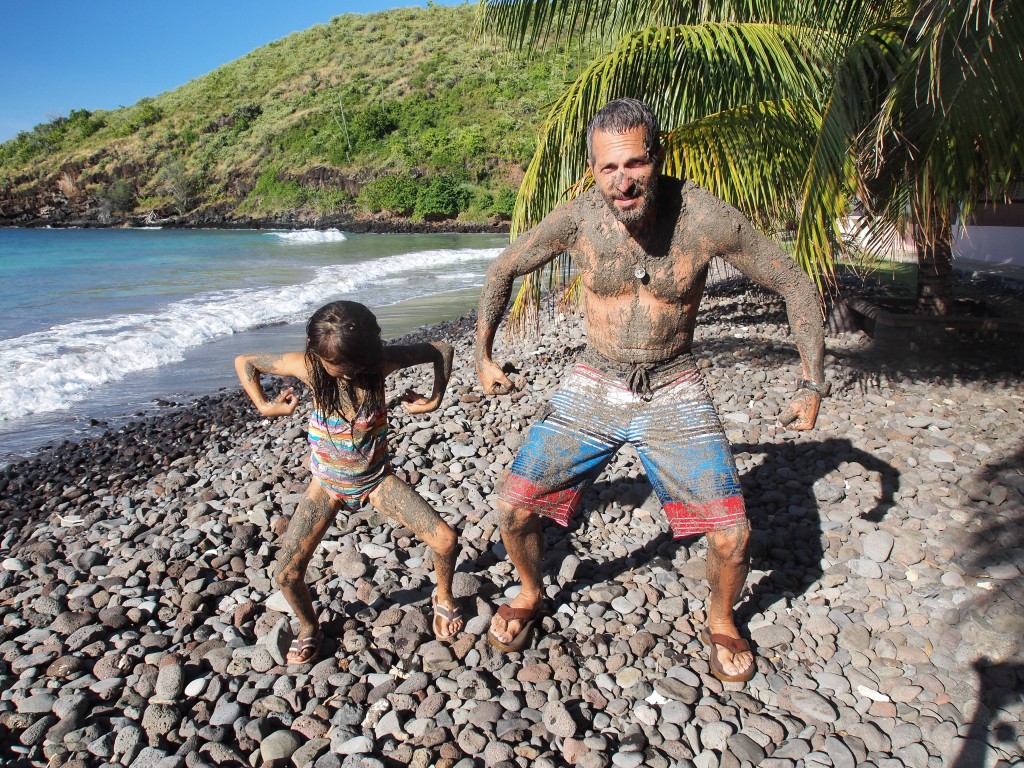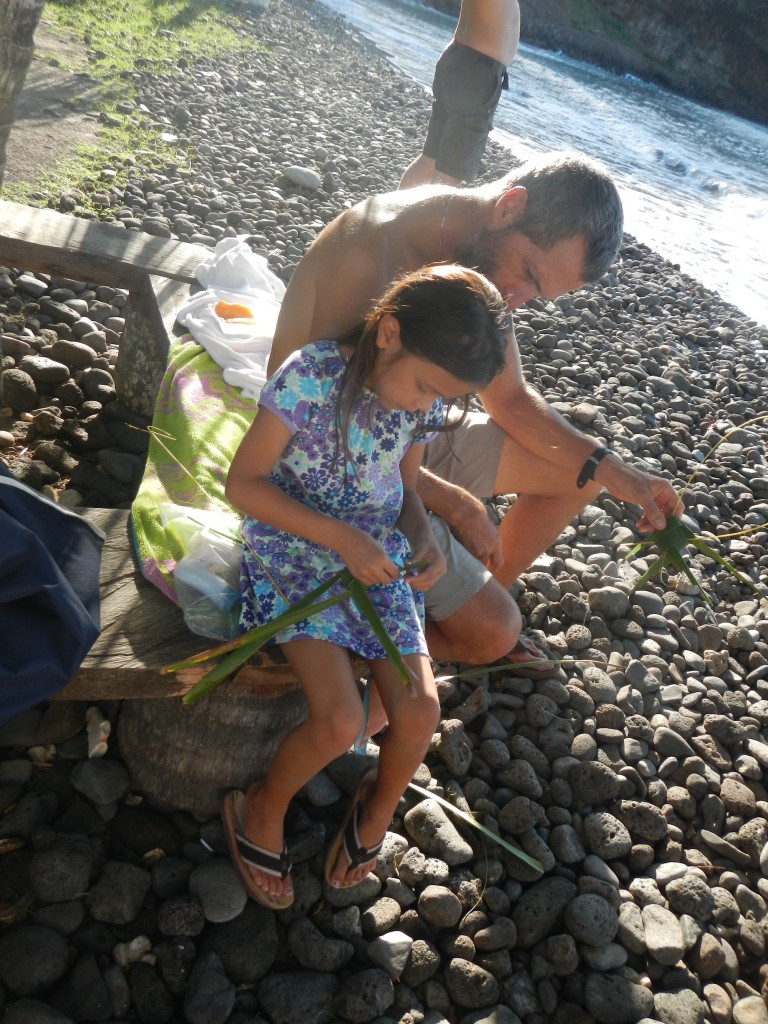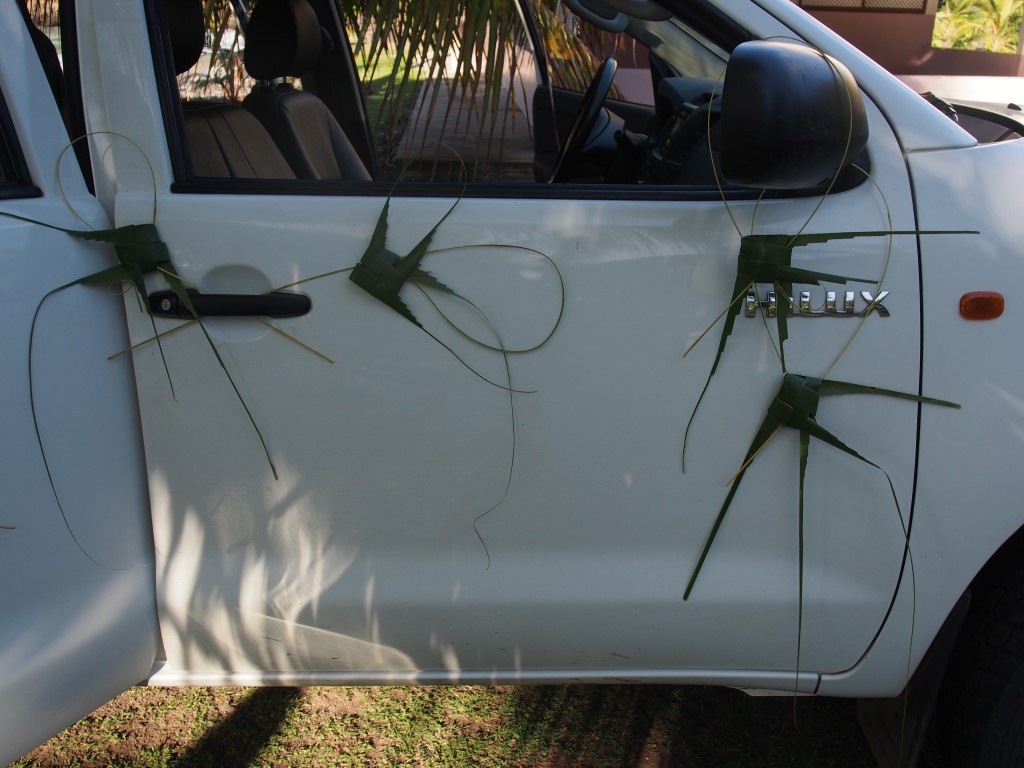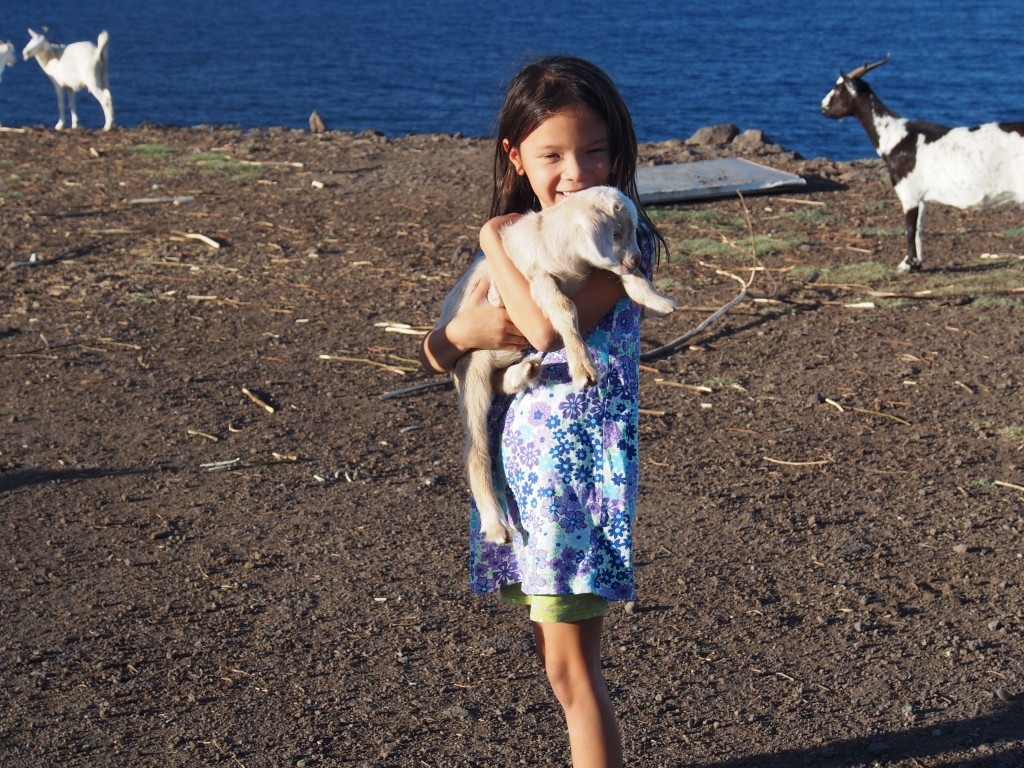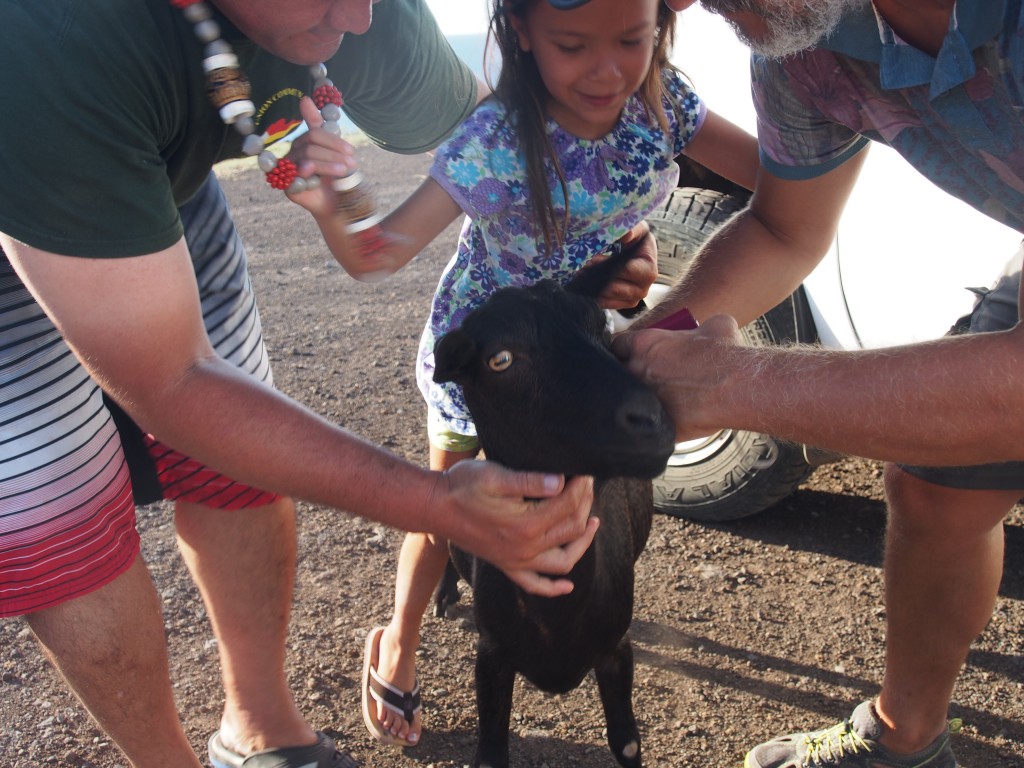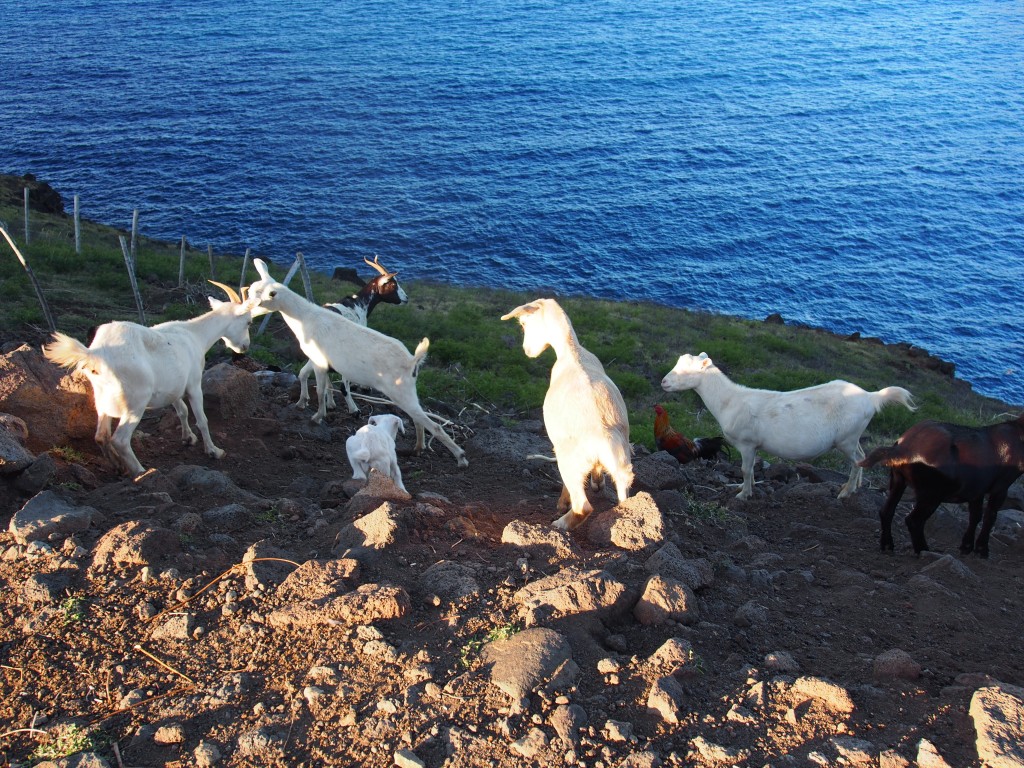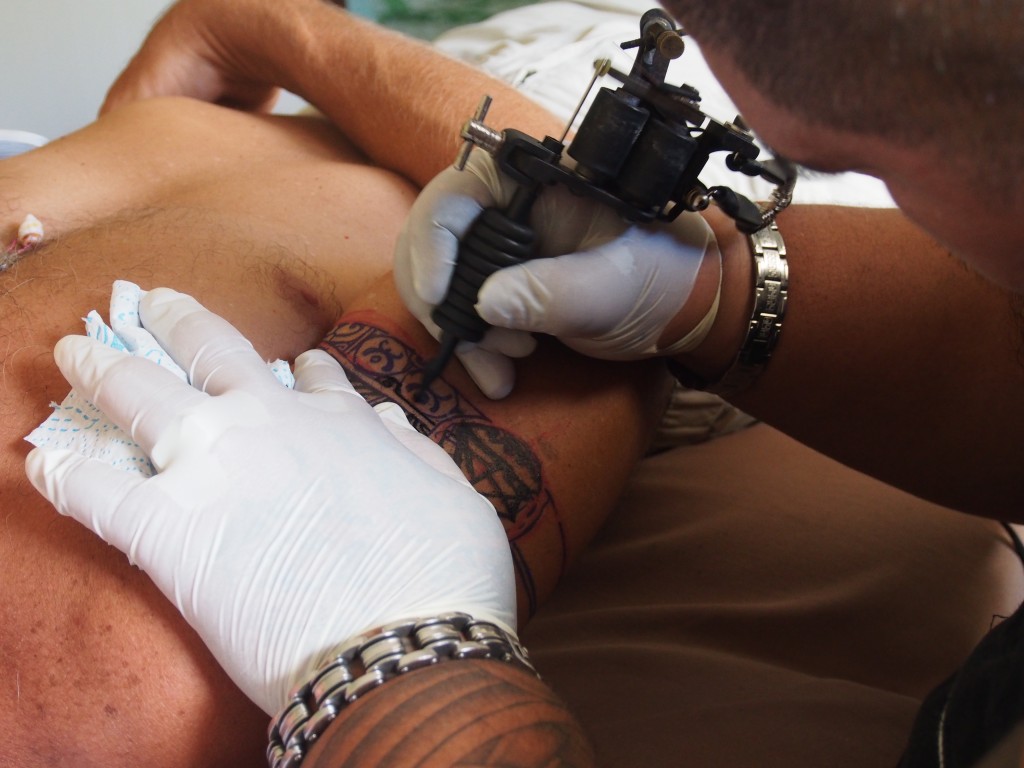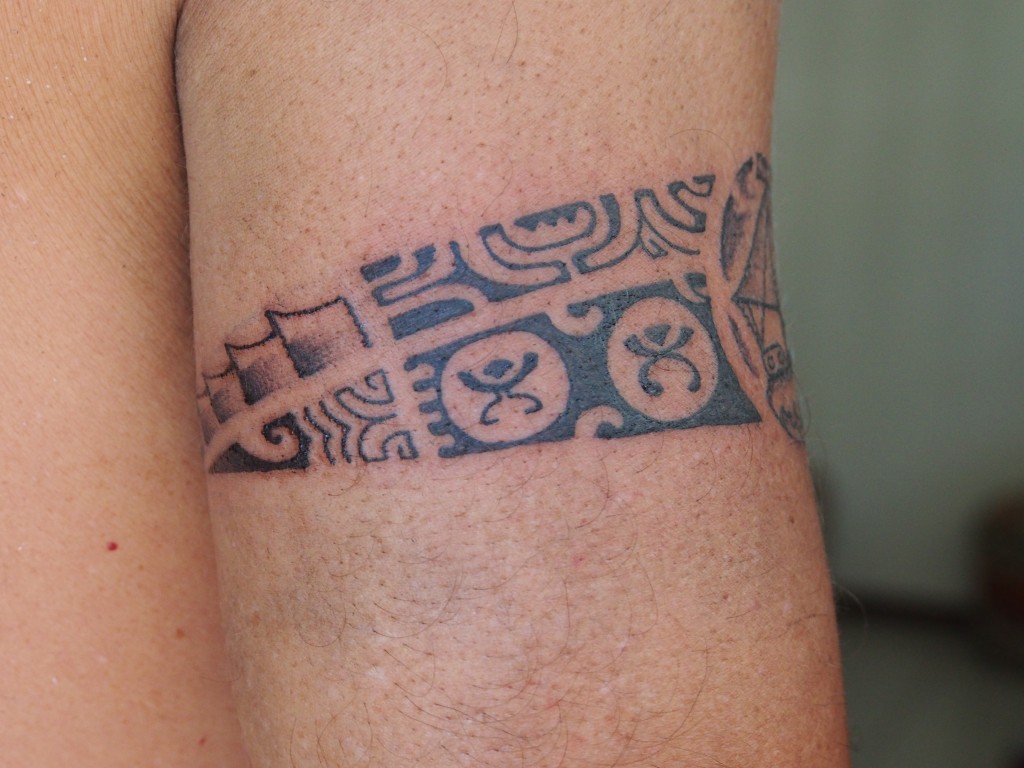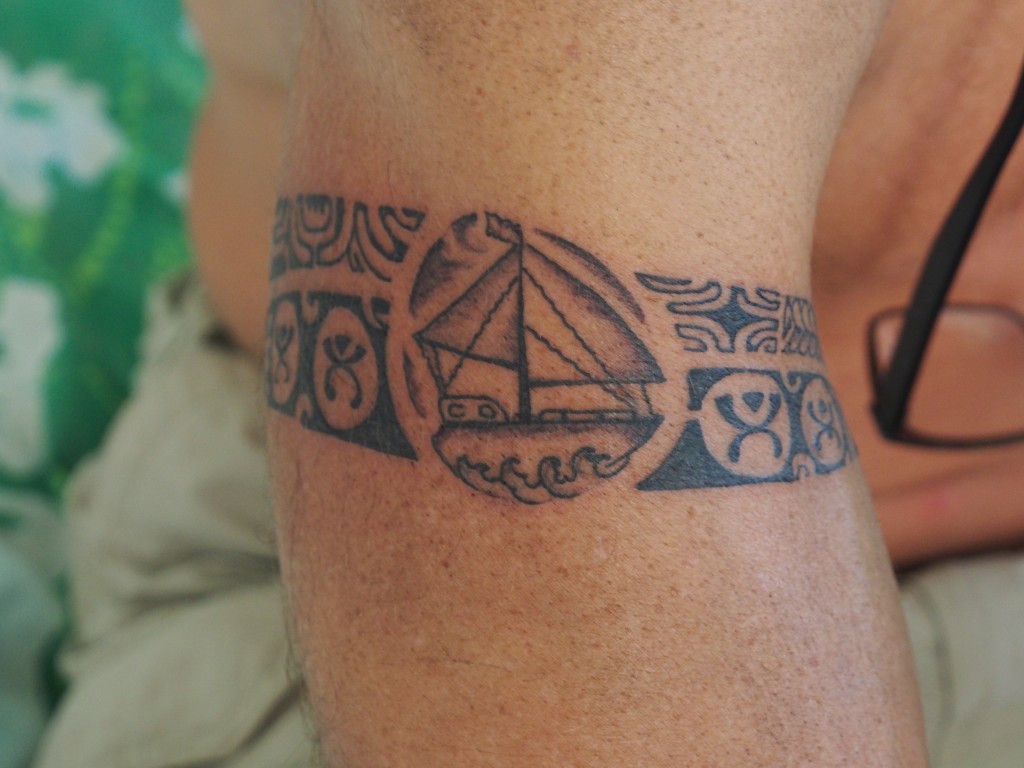Just to the north of Raiatea is the smaller sister island of Tahaa with a single barrier reef surrounding both islands. We motored along on the inside lagoon, which was well marked with red (land-side) and green (reef-side) buoys. We chose Baie Haamene on the east side of Tahaa after reading about the Hibiscus Yacht Club in the guidebooks. After tying to a mooring buoy in front of the restaurant, we went ashore to walk around before dinner. We had the restaurant all to ourselves and the owners of over 25 years, Lolita and Leo, cooked a feast of fresh-grilled Thazard (Wahoo), skewered vegetables, salad, pommes fritzs (potato fries), taro, and creme brulee for dessert. We bought some Tamanu Oil, which Lolita makes from the nuts of a Tamanu tree. It’s used for healing cuts, burns, insect bites, sunburn, acne, eczema, etc., and has a pleasant aroma.
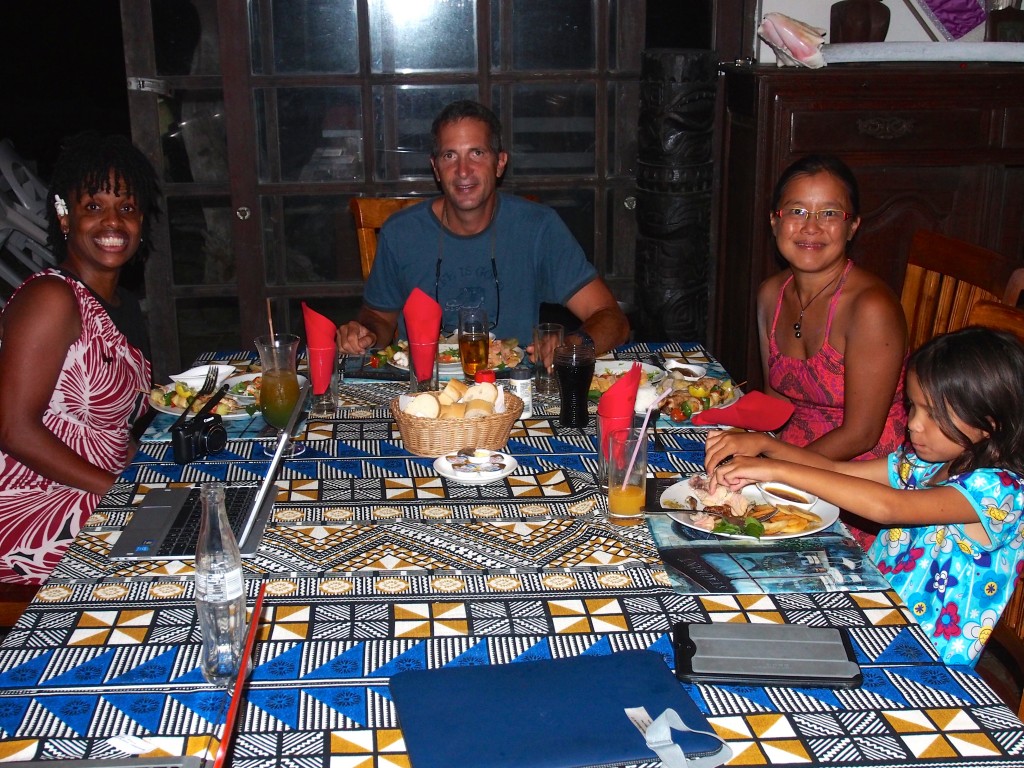
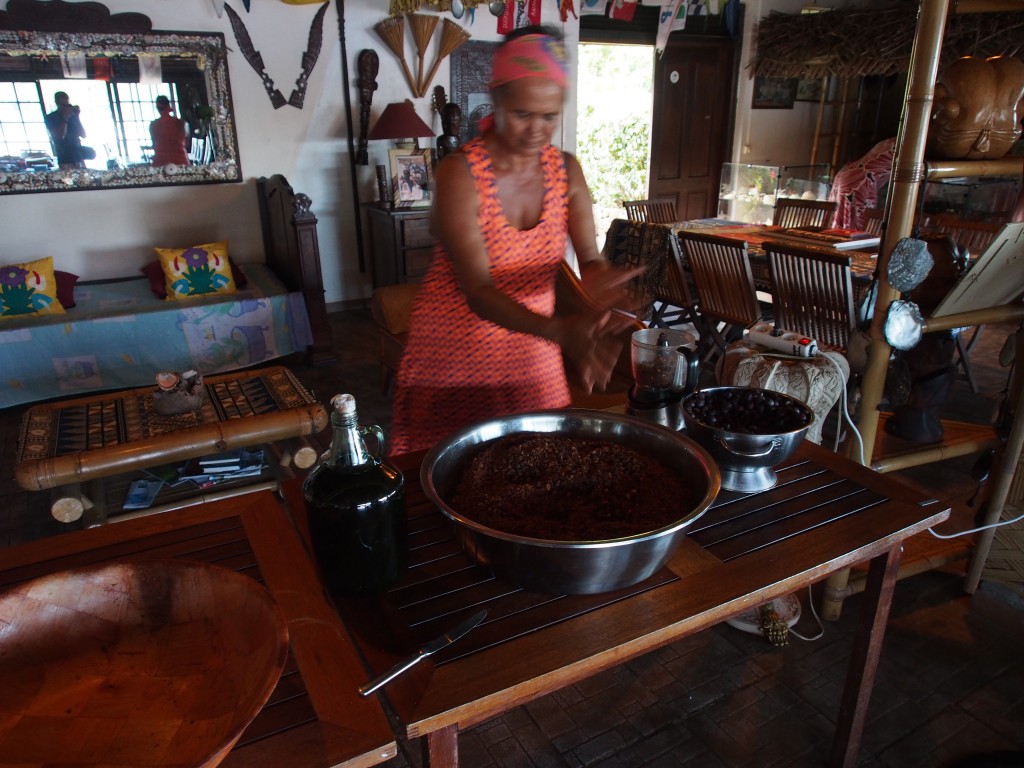
Island Tour–We took a half day tour of the island that included stops at a pearl farm and a vanilla farm. Our guide, George, drove us and explained the process of farming vanilla and growing cultured pearls.
Vanilla Farm Tour
Tahaa produces 75% of the vanilla that comes from French Polynesia and the vanilla grown here is know for its very high quality. There are over 100 ‘greenhouse’ farms spread throughout Tahaa. What they call greenhouses are just netting for keeping out birds and insects. They also reduce the need to weed around the plants. Inside are neat rows of the vanilla orchid, each with its own concrete trellis. Ground-up coconut husks are used as mulch and help keep in the moisture around plants. When the flowers appear, the caretaker pollinates the plant by hand–one flower produces one bean. Mass produced vanilla orchids in places like Madagascar and Mexico rely on bees to do the pollination. That was the way it was done in Tahaa when the plants were outdoors, but they get much higher yield and quality by doing it by hand. When the vanilla beans turn yellowish, they are picked and are ready to be sun-dried ocw.upc.edu. This process takes a few weeks since the beans are placed in the sun for only 1 hour per day. When the bean turns brown and is limp, it is ready to be packaged. A package of 6 beans of this high quality vanilla costs $20US. We bought 2 packages of vacuum-sealed beans, and a fifth of Vanilla Rum.
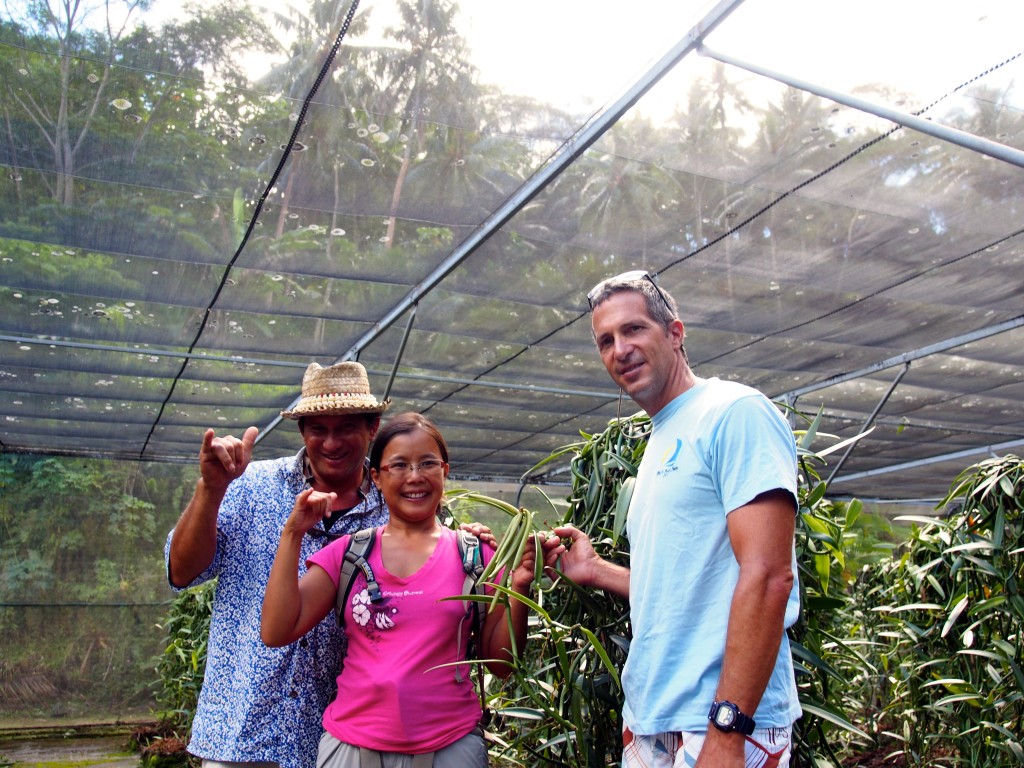
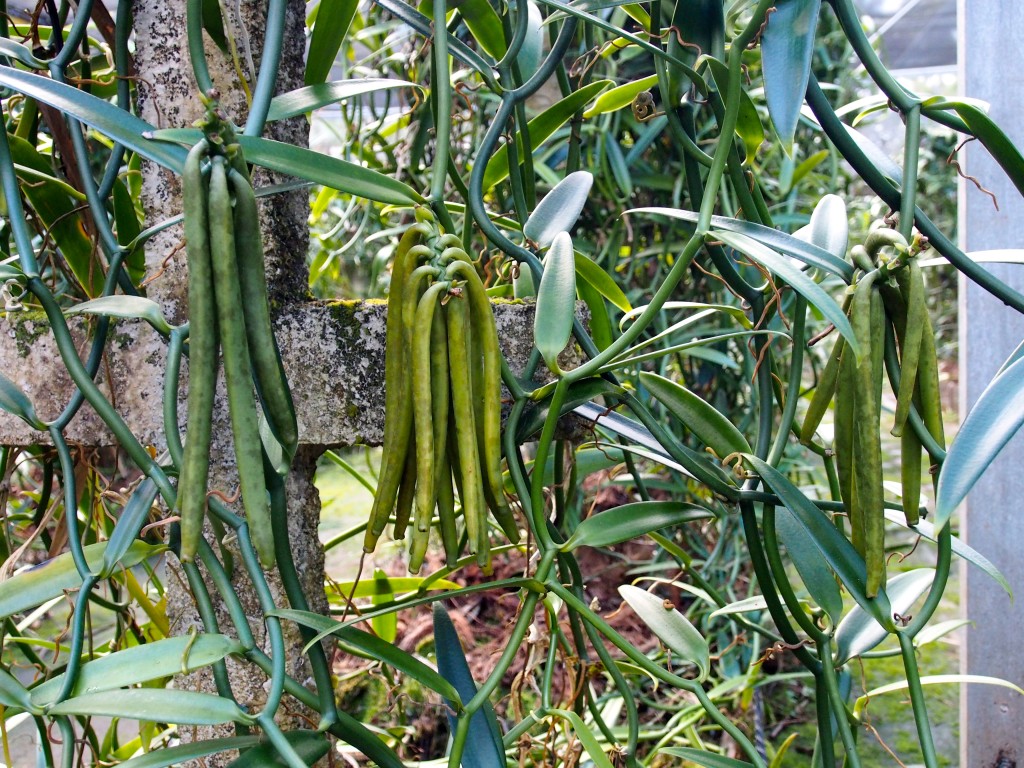
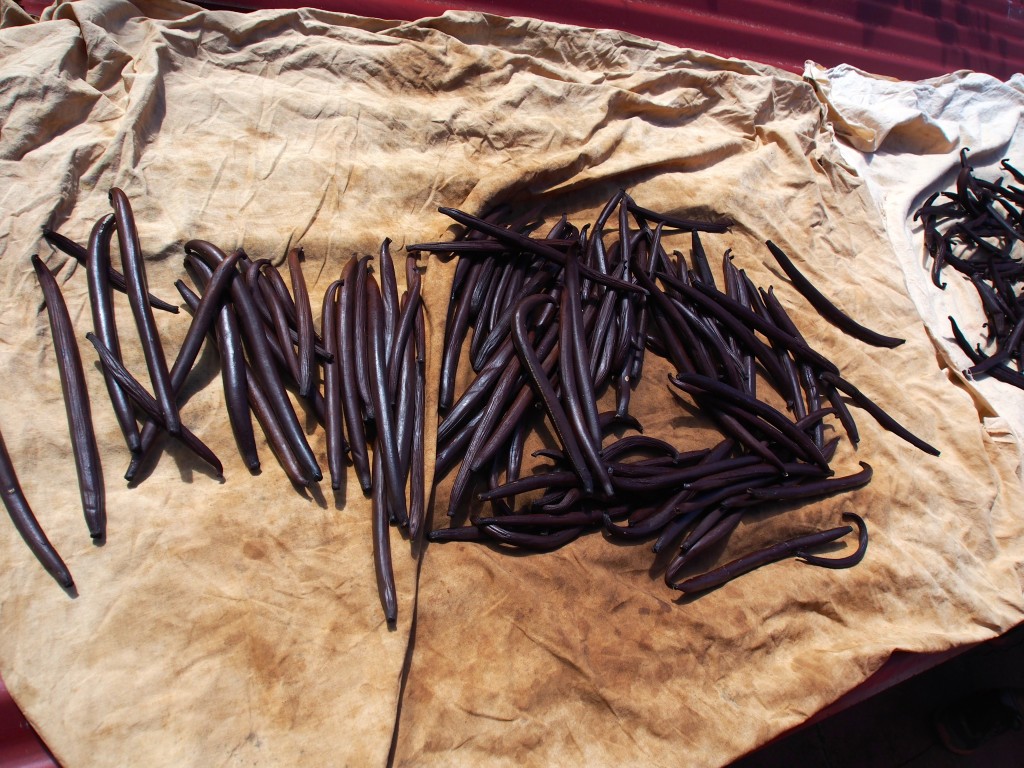
Black Pearl Farm Tour
The pearls found in the South Pacific are internationally recognized as a specific variety and given the designation as the “Tahiti Cultured Pearl”. Tahaa has several pearl farms.
The process of farming cultured pearls is fascinating and here’s what I remember from the tour: An oyster can make pearls naturally when a foreign body, such as a grain of sand, gets inside. The grain of sand slowly grows as the oyster coats it with a substance called Narcre, also known as “mother of pearl”. The color can be black, white, pink, green or combinations. Natural pearls are rarely round and it takes a very long time for the pearl to get big (12mm and up). Cultured pearls start by implanting a nucleus inside a mature oyster. The nucleus (see picture below) comes from oysters found in the Mississippi River. They are machined to be perfectly round before implanting them in the oyster’s sex organ (oysters can change back and forth between male and female). The oysters are then placed in mesh cages that are tied to a structure near a reef in 2-4 meters of water. The oyster continuously coats the nucleus and after 18 months, the oyster is carefully opened up and the pearl extracted. The same oyster can be used for many cycles of this process and an oyster that produces a high quality pearl usually continues to produce high quality pearls. Pearls are priced by size and quality. For size, 8mm is considered small, 12mm is medium, and 16mm is large. For quality, class C has more than 2 flaws and is not round, class B has 2 flaws and is round or teardrop, and class A has 1 or no visible flaws when viewed by the naked eye, and is round or teardrop. A 12mm class A cultured Black Pearl costs around $1,000US from a pearl farm, and of course the price goes up with middle-men and the further away you get from French Polynesia.
